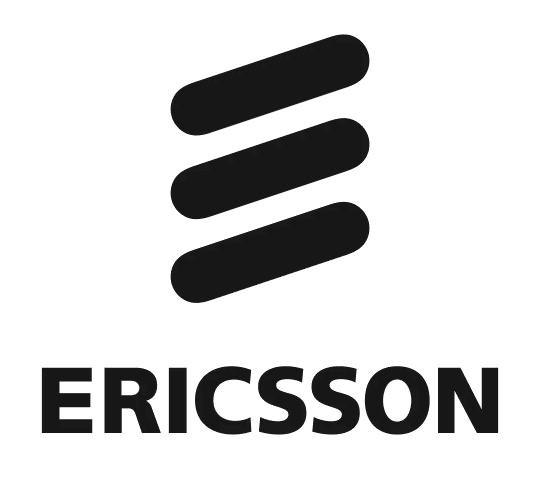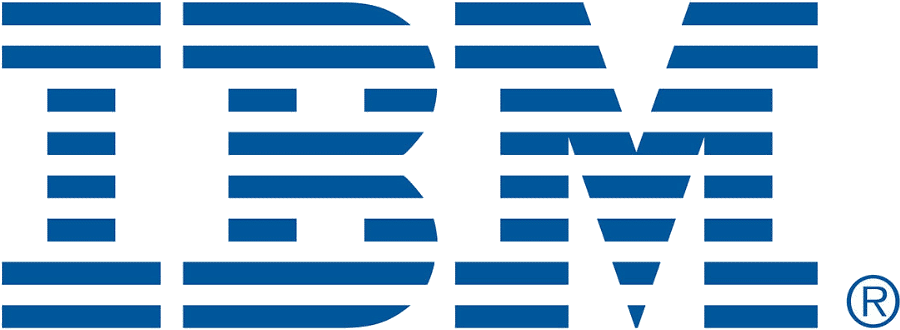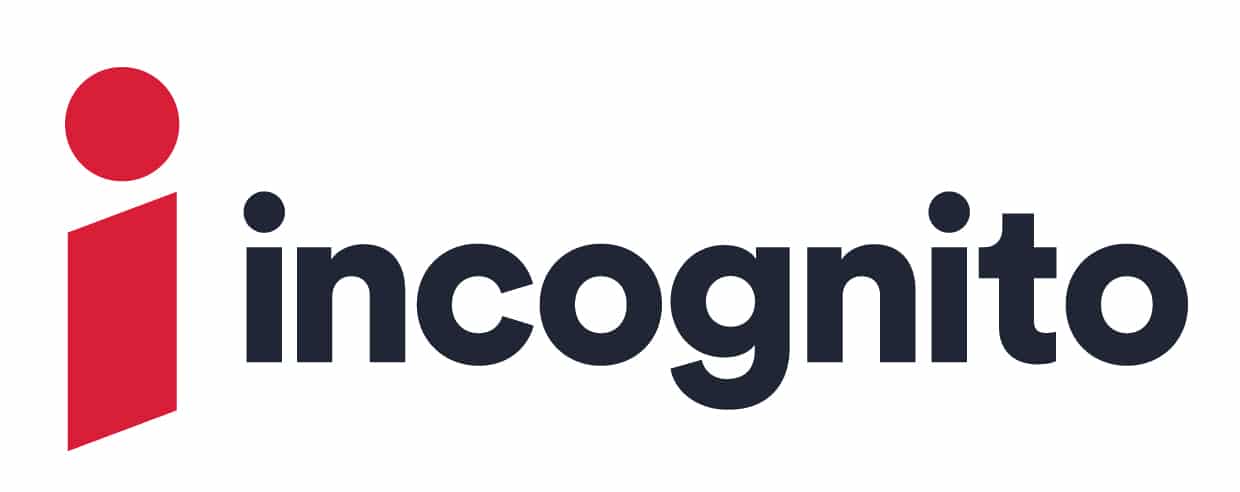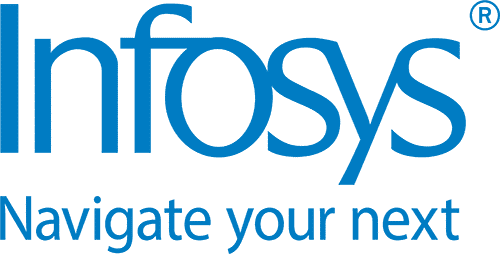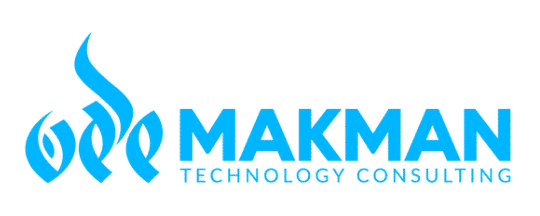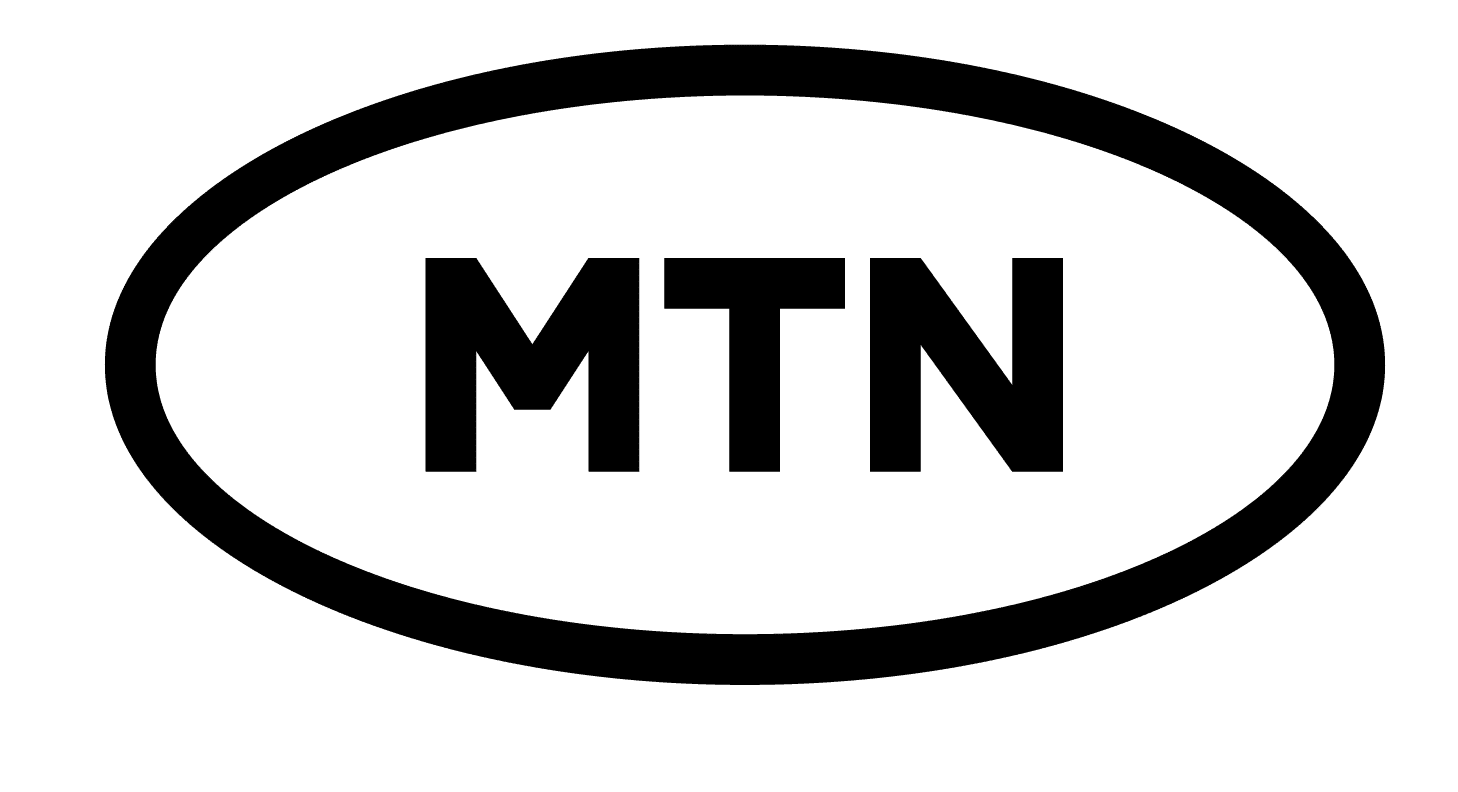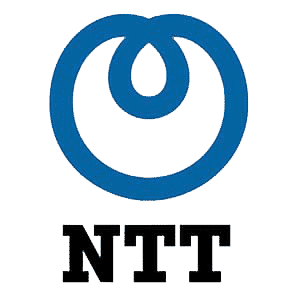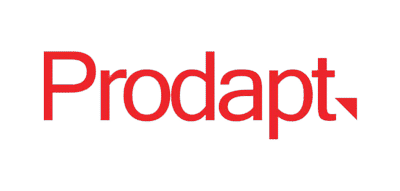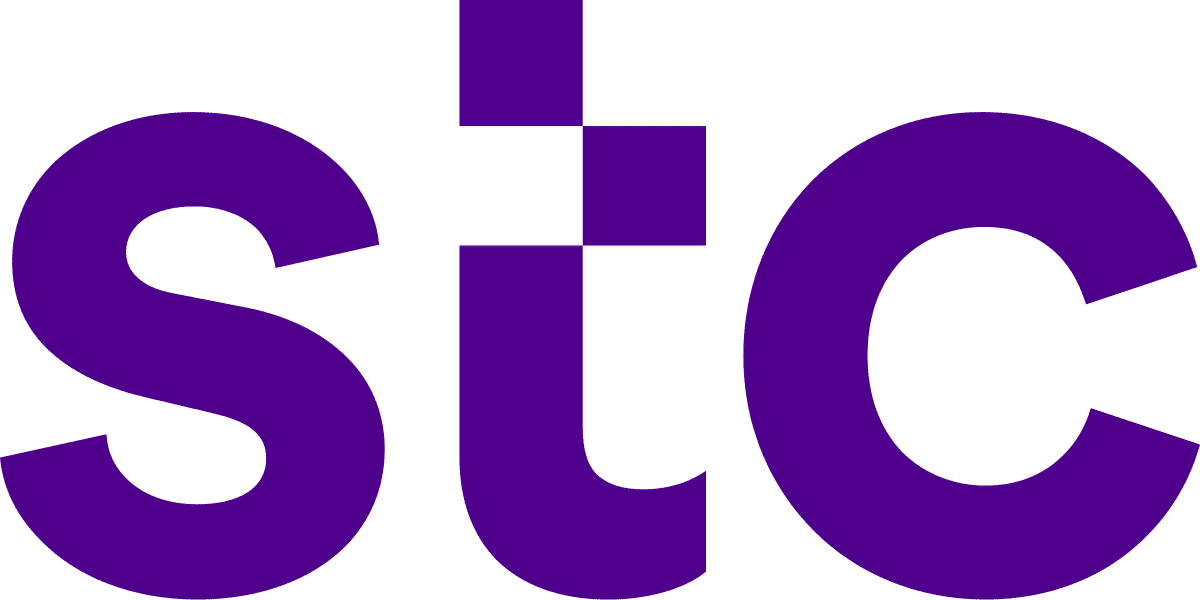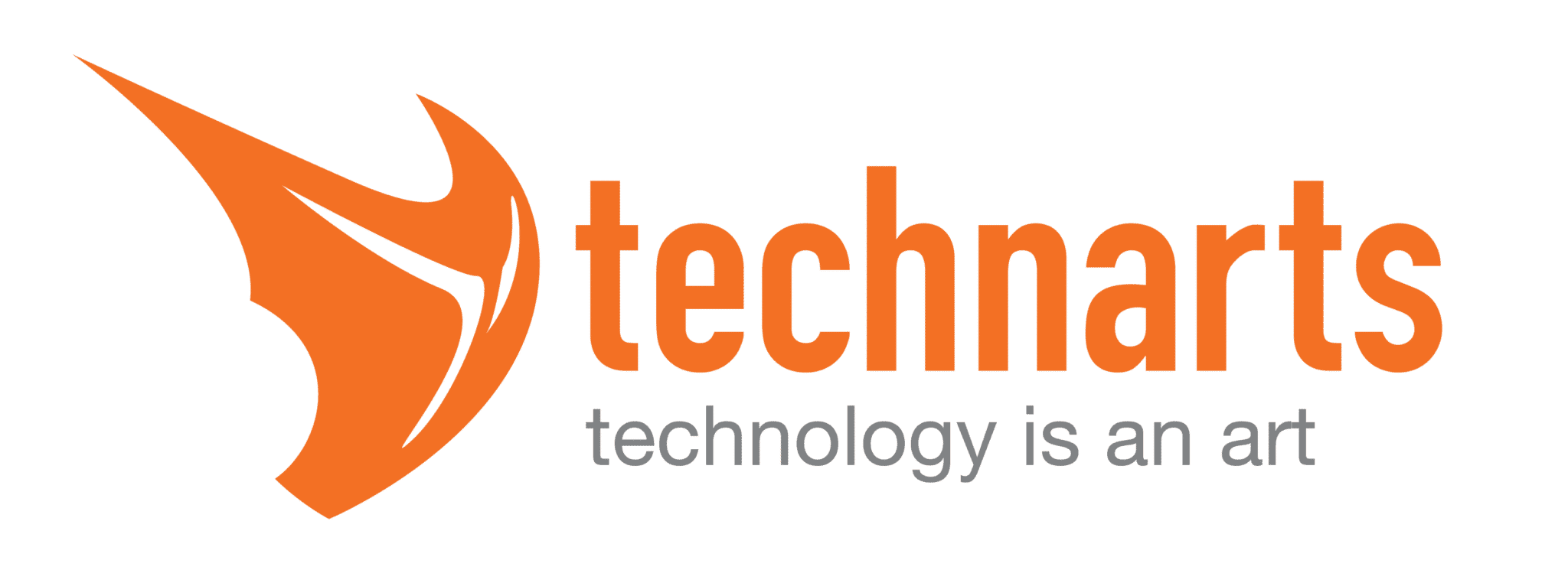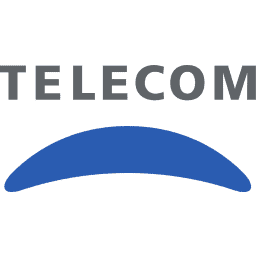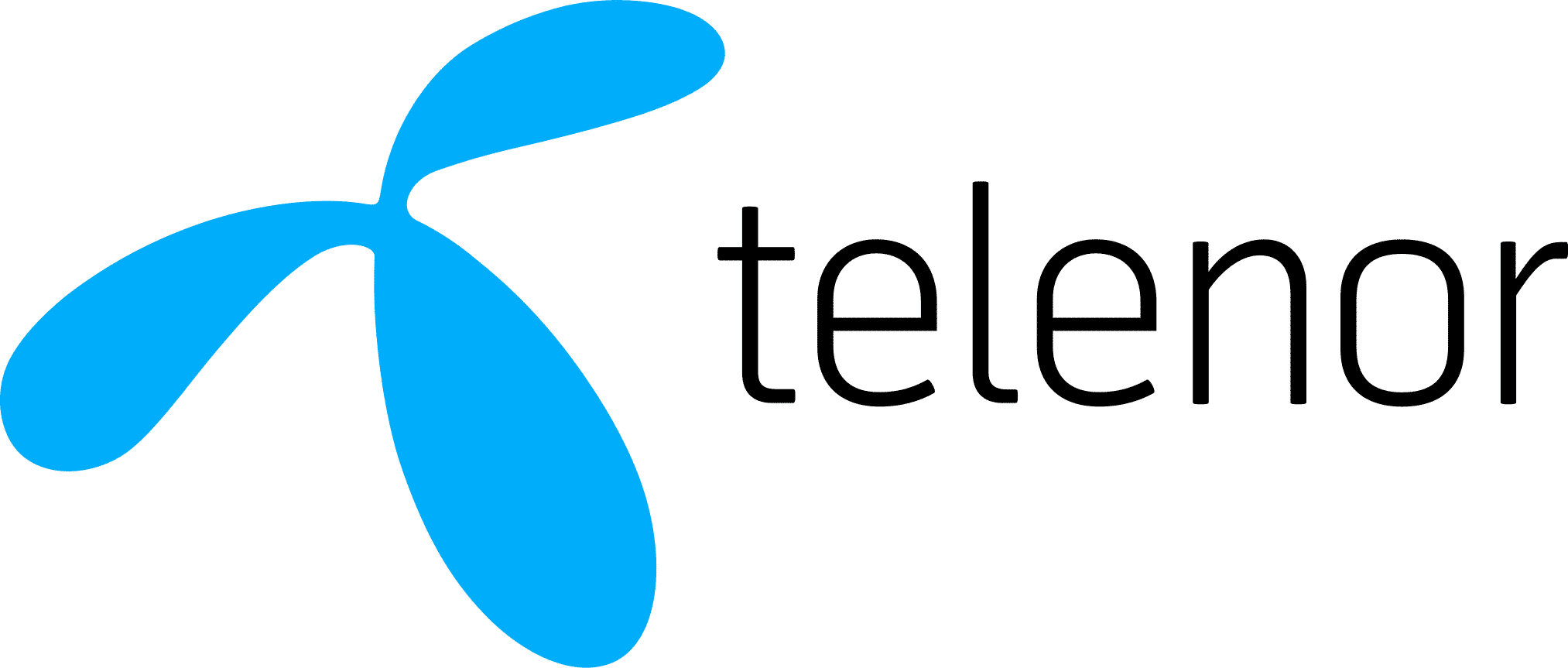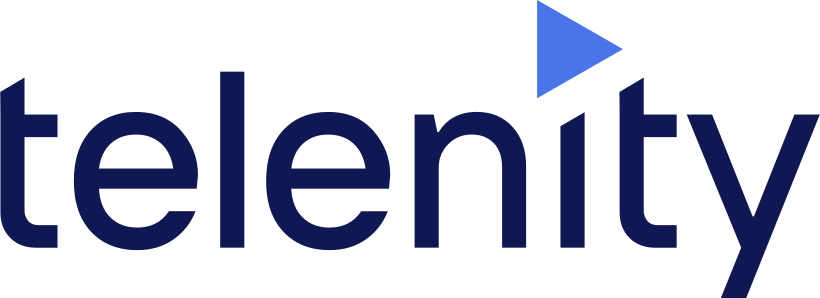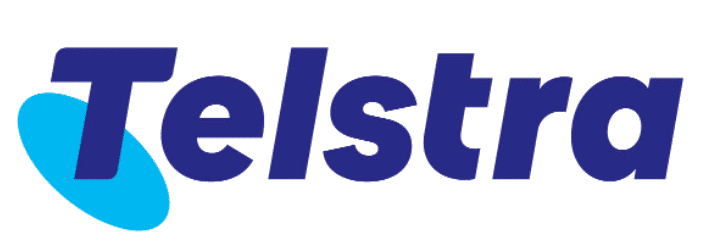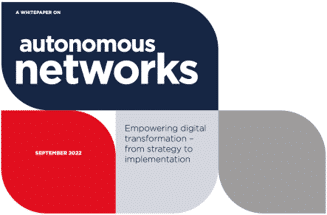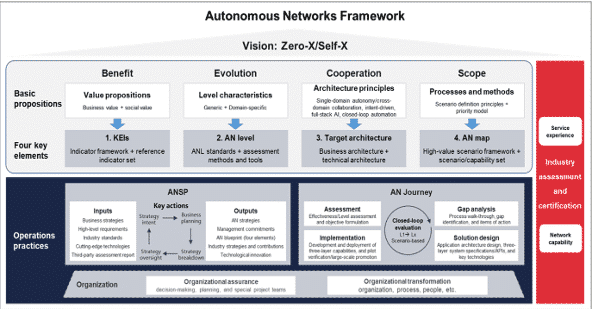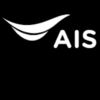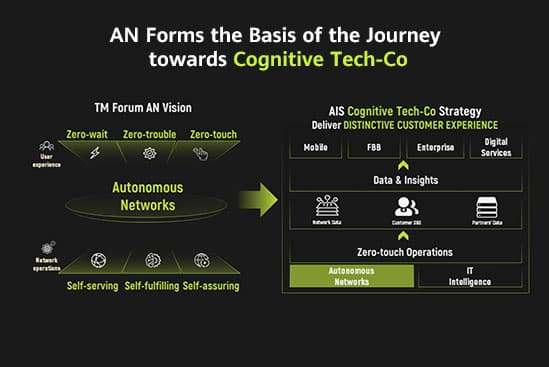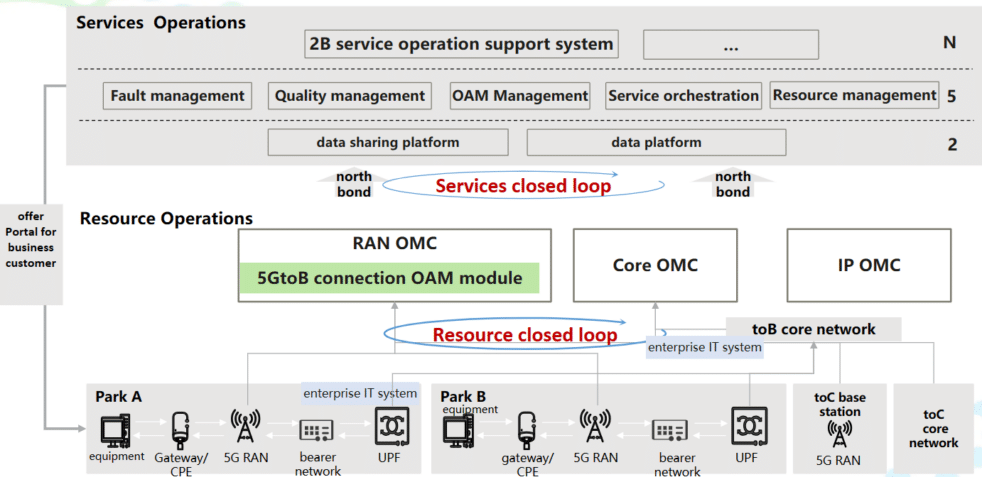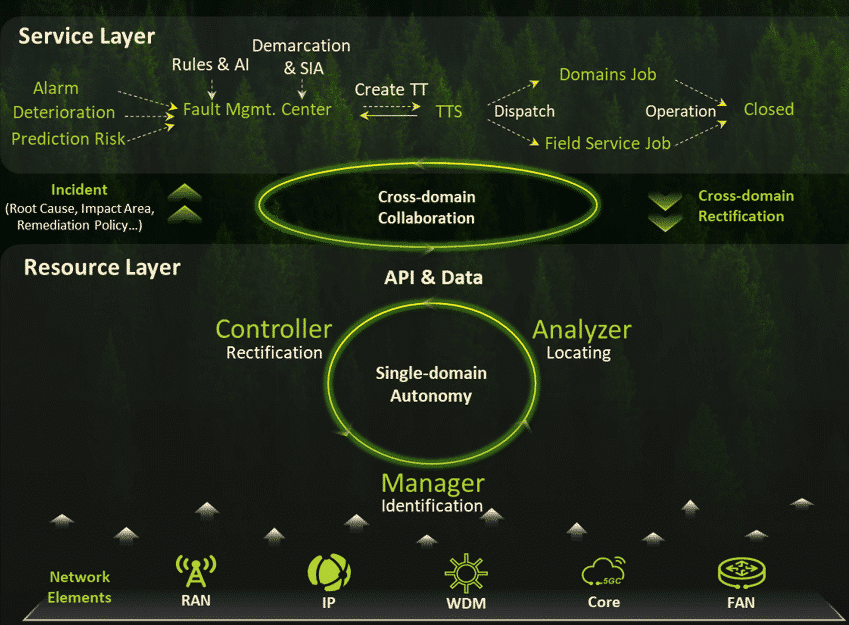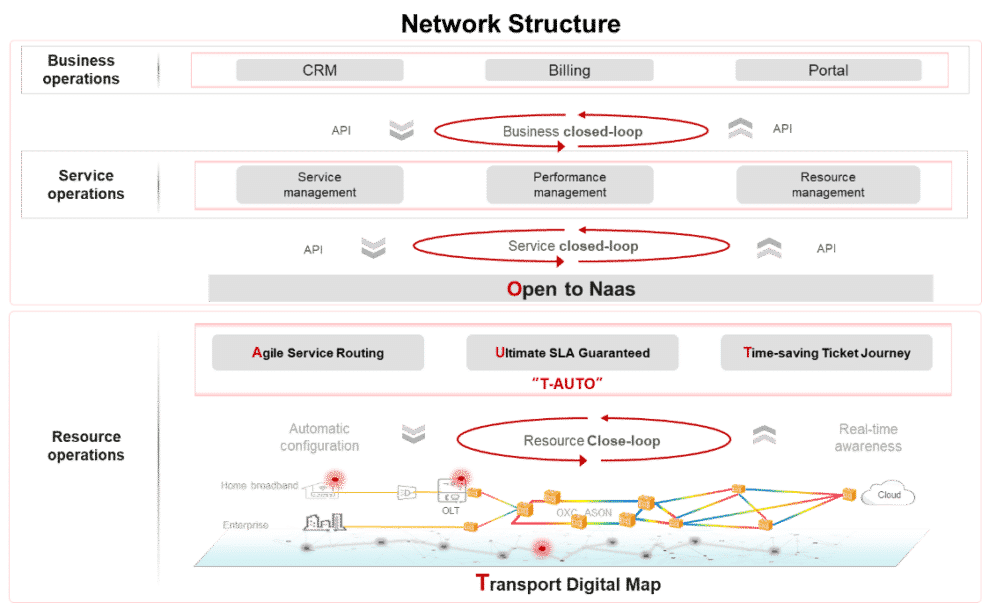Topics Wholesale Web 3.0 Value stream Technical debt Sustainability Software architecture Skills transformation Service orchestration Service assurance Security SDN (Software-Defined Networking) Satellite SaaS (Software as a Service) Revenue assurance Retail & distribution Resilience RAN (Radio Access Networks) Quantum computing Product lifecycle management PaaS (Platform as a Service) OSS (Operations Support Systems) Organizational transformation Order management Open source Open RAN (Open Radio Access Networks) Open APIs ONAP (Open Network Automation Platform) Omnichannel ODA (Open Digital Architecture) NFV (Network Function Virtualization) Networks Network transformation Network slicing Net neutrality NaaS (Network as a Service) Multi-cloud management Mobile private networks Microservices Metaverse Marketplaces M&A (Mergers and Acquisitions) Leadership IT transformation IT & process automation IoT (Internet of Things) Intent-based networking Innovation Information modelling Industry 4.0 Hyperscalers Governance GenAI (Generative AI) Gaming Fraud management Fixed wireless access Fault management Enterprise architecture Edge computing Ecosystem management Diversity, equality & inclusion Digital twin Digital transformation Digital maturity DevOps Data monetization Data model Data management Data federation Data analytics Customer lifecycle management Customer experience management Culture transformation CRM (Customer Relationship Management) Containerization Connectivity Cloud native Cloud migration Closed loop automation Charging & billing CapEx/ OpEx CaaS (Connectivity as a Service) Business process modeling Business models Business assurance Business architecture Business agility BSS (Business Support Systems) Blockchain Big data Beyond Connectivity B2C services B2B2X B2B services Autonomous operations Autonomous networks AR/VR (Augmented Reality / Virtual Reality) API management AI readiness AI management AI (Artificial Intelligence) 6G 5G 5G SA 5G monetization
Companies 郑州市江海通信技术有限公司 美团网 智邦科技 北京邮电大学PCNCAD中心 中国联通 中国电信 ขายยาปลุกเซ็กส์ Старт2ком Петер-Сервис ZZNode Zurich University of Applied Sciences Zurich Financial Services Zup Innovation Zuora, Inc. ZTEsoft Technology Co., Ltd ZTEA ZTE Telecom India Private Limited ZTE Corporation ZTE Corporation Zscaler Inc. ZS Associates Zorlu Holding Zong – China Mobile Pakistan Zong Zones, Inc. ZON TVCABO ZON Multimedia ZOL Zimbabwe Zoho Development Centre Pvt Ltd ZOHO Corporation Private Limited Zoho Corporation ZK Technology LTD. Ziraat Teknoloji ZIRA Ltd. Ziply Fiber Ziotis Zinnov LLC Zinkworks Zinier Inc. zinc solutions zin technologies Zimory ZIM Connections Ltd Zigurat Institute Ziggo (Corporate B1) Ziggo ZiComm Zhuoneng ZhongXing (Yinchuan) Intellectual Industry Co Ltd Zhongguancun Sifang Model Service Industry Technology Strategic Alliance Zhongguancun IQ Alliance for Software Services Industry Zhilabs Zhejiang University Zeus advanced systems consulting Zettics ZephyrTel Zeotap GmbH Zentrum Servicios Zentive Limited ZENTITY a.s. Zensar Technologies Ltd. Zensar Technologies Zensar Zenoss Zenith System Solutions, Inc. Zendesk Zen Internet Ltd Zen Internet Zeligsoft Zelax Zeetta Networks Zeepabyte Zed USA Zebra Technologies ZDSL.com ZCTT ZCorum ZCOM Systems Group Inc. zcom systems zbe Zayo Group, LLC Zavosh Advanced Consulting Group Zavosh Zat Consulting Zat zap ZAO "Glasnet" Zantel Zandi Zambia Telecommunications Company Zambetti & Partners Zalando SE Zajil International Telecom Co. Zain Sudan zain sd Zain Lebanon Zain Iraq Zain Iraq Zain Group – Mobile Telecommunications Company K.S.C.P Zain Group Zain Group Zain Bahrain zagrebconsultores Zaeim ZAA Architects z-rands Z-Lift Solutions Inc. Z-Lift Solutions Yyield Group BV Yuppp Yupiik YTL Communication Sdn Bhd YrQ bv Yozma Timeturns Yousee YourBA Consultancy Limited Yota Group Yota York University Yoigo, Xfera Moviles Yo.com Ymens YITSOL Yinchuan City of China Yettel Hungary Yettel Bulgaria Yes Telecom Yes Satellite TV YemenTelecom Yemen Mobile company Yemen Mobile Yellow Pages Canada Yehey! Corporation Yatanarpon Teleport PLC YASH Technologies Inc Yara International Yang Xun Yandex Data Factory Yandex Yamu Technology Co., Ltd Yamaha Motor Corp. U.S.A. Yahsat yahoow yahoo inc Yahoo Yaana Ya Y Corporation Limited Xyzjdjdj XYZ LTD Xynexis International Xygot xy plc xx xx Xura XtremeData xTata Consultancy Services xsoft xShell XS4All Xportalgroup Xplornet Communications Inc. Xplorium Xpertnest Xpert360 Xpand XON XO Communications, Inc XMPro XLRI Jamshedpur XLN Telecom XLENT Strategy XL8 Inc. xkr Xius Xinwei XINTEC S.A. Xidian University Xerox Corporation Xero Xeotech Ltd. Xelsus, C. A Xelas software Xebia BV XDG XCO Xchanging PLC xchanging xcelframeworks Xceed Xavient Information Systems Inc. Xavient Digital LLC. Xavient Digital LLC Xavient Development Xantaro Deutschland GmbH Xalted Information Systems Pvt. Ltd. XALTED INFORMATION SYSTEMS PRIVATE LIMITED XACRIA s.r.l X8 Solutions X3T Broadband Ltd x-Optus x VMware, Inc. x TURKCELL x Telenor ASA x Swisscom (Schweiz) AG x Sunrise Communications AG x SK Telecom Co Ltd x Regent University x OneWeb x NCS Pte Ltd x MYCOM OSI x KPMG International-Global Membership x Ipsphere x Huawei Technologies Co., Ltd x Huawei Software x Hitachi x Google Inc x Ericsson Inc x – Ernst & Young LLP x – Ernst & Young India x – Ernst & Young Finland x x Wytec International, Inc WWWalker Web Development Pty Ltd www.onlinetrainingbd.com www.more.ch www.itrc.ac.ir www.fel.cvut.cz WWS data technologies wurd Wuhan University WTW WSP Global Inc. Wroclaw University of Technology WRM Consulting Wrightia Wray Castle wr corp WOW! Internet, Cable, and Phone Wovenware WorleyParsons Worldstream Systems & Services WorldNet Telecommunications Worldmedia Consulting Worldline WorldCell World Wide Technology world intellectial property organization World Bank Group Workz Group WorkSpan Works System WorkOpt Solutions Private Limited Working ICT Workato Europe SA Work from home Woolworths WOM Wolters Kluwer WolfTech Wojciech Marzec WNS Global Services (www.wns.com) WNA WMATA WKP Consulting Ltd WKM Global wittenberg-net GmbH Wittel Comunicações Ltda. Wit Software Wison WiseStrokes WiseSpot Wise.io Wisdom Networks Co.,Ltd. Wireless Maingate Nordic AB Wireless Infrastructure Group Wireless Industrial Technologies Wireless Federation Wirecard Wipro Technologies Wipro Ltd Wipro Inc Wipro Winkler Consulting WingArc Australia Windward Consulting WindUp Software WindTre SpA Windstream Communications Windstream Wind Tre S.P.A. Wind Telecomunicazioni SpA Wind River Wind mobile, Canada (Not a member) Wind Mobile Corp Wind Hellas Telecommunications SA WIND Hellas Wind Win SA Willis Towers Watson WILEY JOHN & SONS, INC Wikidot Inc Wideopenwest, Inc. WiConnect wi-mobile Research Group, University of Augsburg Whitestack WhiteSky Labs Whiteheart Group Ltd White Hill Media Whirlpool Whale Cloud Technology Co., Ltd WG2 WFP WestWingPrime Westport Group Westpac Banking Corporation Limited Westernacher Westcon Group westcall Westbray Limited West Corporation West Avenue Capital Markets Partners Wessex Internet WesBank Welltel Wells Fargo Wellink Wellington City Council weiming Weightless SIG WeCity Webulizer.com Webstep AS websoftex software solutions pvt. Ltd webslave webreactive WebRadar Weber Shandwick Webe Digital Webcircles BV Webafrica Networks Web Africa Web Action We Tel AG We Love Micro WDW-Consulting WDS Waylay Waycom WayAheadConsulting Ltd. wawa Wavestone wavesouth Wavenet Pte Ltd Wavemaker Wavelo Wavelength Communications Ltd Waterfront Toronto Waterford Institute of Technology Watercare Services Limited Wateen Telecom WatchGuard Technologies, Inc. WATCH4NET SOLUTIONS INC Wataniya Télécom Algérie S.P.A Wataniya Palestine WASU WASKO S.A. Washington University in Saint Louis Washington Core Wasel-Online Warner Media Warid Telecom Pakistan Warid Telecom Waoo wandobah Wananchi Group Kenya Ltd WANA CORPORATE WAN-AI Wan IT Walt Disney Parks & Resorts Wall Street Journal WalkMe Wakaru Consulting Wadaro Limited W.E. Parks Vyom Labs Pvt. Ltd. VWFS vvv Vuyo Robert Mfazi Vumatel (Pty) Ltd VUB a.s VTT VTR Group (Chile) VTR GlobalCom VTNvnpt vtn VTLINH VTL Ltd Vtal VT Idirect, Inc. VT iDirect VT Customer Service VSS Monitoring VSP VSNL International VSE NET GmbH VSE VP Consultancy Services Limited Voyager Internet Ltd Voyager Internet Voyager Innovations Inc Vox Telecom VOX CARRIER VOSS Solutions Voronezh State University VOOXELL VOO SA Voo Vonage Volvo IT Volvo Group Volt Active Data Volkswagen VolkerLiehr Volia Volars Inc Volaris Group VokeTel Voitel Ltda VOIPFUTURE Voiceworks Voice Insights Vogel VoerEir AB Voentelecom VODO VodafoneZiggo Vodafone via Glue Reply Vodafone UK Ltd Vodafone Turkey Vodafone Sweden AB Vodafone Spain Vodafone Shared Service India Vodafone Romania SA Vodafone Qatar Vodafone Portugal Vodafone Omnitel S.p.A. Vodafone Netherlands Vodafone Malta Vodafone Ireland Vodafone India Services Private Limited Vodafone India Limited Vodafone Idea Limited Vodafone Iceland Vodafone Hutchison Australia Vodafone Hungary Vodafone Group Vodafone Greece Vodafone GmbH Vodafone Global Enterprise Vodafone Ghana Vodafone Germany Vodafone FO Vodafone Fiji Vodafone Egypt Vodafone Egypt Vodafone D2 Vodafone Czech Republic Vodafone Automative Italy vodafone Vodacom Tanzania Vodacom Mozambique Vodacom Lesotho Vodacom DRC Vodacom (Pty) Ltd. Vodacom VOCUS PTY LTD Vocus Group New Zealand VNPT-International (VNPT-I) VNPT Vinaphone VNPT International VNPT Group VNPT vnp vn VMware by Broadcom VMware VMT Spinning Company Limited VMS Vlocity VL-telecom Ltd VizuaMatix Private Limited Vivid Edge Corp. Vivas Vivacom Vivacell-MTS VIVA Bahrain (Not a member) vitroconnect GmbH Vitrifi Limited Vitria Technology, Inc. Vitis Consultoria Vitesse Vital Process Consulting Vistratec Visionstream Pty Ltd Visionael Vision-2-Action Vision OSS Visible Vishloff & Associates Vísent Visa ViryaNet, Inc. Virtusa Polaris Virtusa Corporation Virtusa Consulting Services Virtusa Consulting India Pvt. Ltd. (Not a member) virtusa Virtusa Virtus IT Limited Virtuos Corporation Virtueyes M2M VirtualNuggets Virtual1 Virtual Instruments Virtual Clarity Ltd. Virtrium Virginia Tech Virgin Mobile Middle East Virgin Mobile Australia Virgin Mobile Virgin Media O2 Virgin Media ireland Virgin Media Virgin Entertainment Vipnet d.o.o Vinu Vintcom Technology Vinoth Kumar S Vincent Maseko Consulting Vinaphone Vimpelcom1 VimpelCom Russia VimpelCom Ltd. Vimpelcom LTD vimpelcom Vimarshana Academy of Learning Villanova University Villaggio Store Vilicom Vijfhart IT-Opleidingen Vijay Consultants Vigilmetrics VIEWNEXT SA Viewnext Viettel Group Viettel Digital VIETTEL CAMEROUN S.A Vietnamobile Vietnam Posts and Telecommunications Group (VNPT) Vietnam Posts and Telecommunications Group Vietnam mobile Vietnam Digital Transformation Ecosystem Vietnam Datacomunication Compnay Vietnam Datacommunication Company Vietnam Airlines JSC Viet Hai Communication Inc Vienna University of Economics and Business Vidyalankar Institute of Technology Vidimax LLC Videotron G.P. Videotron Videocon Telecommunication Ltd Videocom Mobile Servcies VICTUS Networks VicTrack Victor Pinto viax.io ViaWest VIAVI Solutions Viavi Viasat, Inc. Viasat, Inc. ViaSat Viapass vianet srl Vialto Consulting VHCSoft VF Consulting SAC Vexma Technologies Pvt Ltd. Veureka, S. A. de C. V. VETRO FiberMap VETERANS AFFAIRS Vestitel BG Jsc Veschatel LLC Veryx Technologies Verveba Telecom Vertiv VertiGIS GmbH VertiGIS Verticurl Vertical Tilt Ltd Vertical Telecoms Pty Ltd Vertical Systems Group Vertica, An HP Company Vertek Corporation VERSOS Verso d.o.o. Verso Altima d.o.o. Version1 Verscom International VersatileCapitalist versatel Versante Software Technologies Versadial Solutions Versa Networks Verraki Verizon Wireless Verizon Telematics, Inc. Verizon Enterprise Solutions Group Verizon Data Services, LLC Verizon Communications Verizon Veritas UK Verisure Danmark A/S Verify Dynamics Verduin CRM Consultants Verbio Inc VEON Armenia VEON Amsterdam B.V. VEON Veolia Environnement Venturus VentureTech Alliance LLC Ventura Next AB Ventum Ventraq, Inc. Ventelo Networks AS VenKizmet PERU SAC VenKizmet PERU SAC VenKizmet Venkateswarlu VELV VELEBIT Velcom Velanknai Software Pvt Ltd. Velankani Software Velankani Communications Technologies Vegayan Systems Vedi Veda Advantage Ltd Vectra.pl Vector Technologies SA Vector Communications Ltd Vecta Strategy Vecima Networks Vebsel Systems VEA VDVL vdsi VDN VCT International VCI SA VCE VC4 B.V. Vattenfall vass Vasona Networks, Inc VASHCM VN VASC Vas-X Various Telecom Operators and Service Providers Various Clients (Independent Contractor) Vanu, Inc. VANTIQ Vantage Towers Vanrise vanke VanillaPlus Vanessa Hunt Consulting Ltd VANDU Worldwide VanceInfo Technologies Australia Pty. Ltd. Valvo Automation Valueteam Spa ValueTank Value Team S.p.A. Value Quest Value Partners Valu Connex Telecom Services Valtech Deutschland Valo Networks Valetel corp. Valantic V3D V-Nova Ltd UXP Systems UXC Consulting UXC Australia UXC UWV UTStarcom, Inc Utilligent Utility Networks Information Systems Consultants (UtilNet) Utilicast UTFPR UTAD university USU Software UST-Global UST Global UST Global USP usm university Ushacomm© (Redtech Network India Private Limited) USCredential USC – University of Southern California USAA US Dept of Agriculture US Cellular Corporation US Cellular Urzad Miejski w Gdansku URSUS Software-Service GmbH URS Systems Uros Ltd urliburly sll uReach Technologies Urbatech Group FZE UrbanPeer Ltd Urban Economic uralsvyazinform JSC Uralsviazinform, OJSC uqam Upstream Systems UPS Upp Corporation Limited Upknowledge UPES Updata Infrastructure UK Limited UPC Austria Services GMBH UPC UPB UOL unver MTUCI Unspecified (Not a member) UNSPECIFIED Unsere Grüne Glasfasser Unscrambl LLC UNRYO unomena Unlimit IoT Private Ltd. Unknown Univict Univerzita T. Bati University Politehnica of Bucharest — Computer Science Department University of Zilina University of Zagreb, Faculty of Transport and Traffic Sciences University of Zagreb, Faculty of Transport and Traffic Scien University of Zagreb, Faculty of Electrical Engineering and Computing University of Zagreb-Faculty of Organizing and Informatics University of York Communications Research Group University of Witwatersrand, School of Electrical & Information Engineering university of wisconsin-madison University of Western Australia University of Washington University of Warwick – School of Engineering University of Vienna University of Versailles Prism Lab University Of Utah University of Twente – faculty of Electrical Engineering, Mathematics and Computer Science University of Turku university of Tunis University of Toronto University of Tokyo University of the West of England, Bristol University of the Highlands and Islands University of the Basque Country (UPV/EHU) University of Texas M.D. Anderson Cancer Center University of Texas at Dallas University of Technology, Vienna University of Technology Sydney University of Szeged University of Surrey University of Strathclyde University of St.Gallen University of St. Gallen University of Split, Faculty of Electrical Engineering, Mechanical Engineering & Naval Architecture University of Southern California – Annenberg School for Communication & Journalism University of Southampton University of South Africa University of Sheffield Dept. of Electronic and Electrical Engineering University of Sarajevo, Faculty of Electrical Engineering university of Salento University of Rome “Tor Vergata” UNIVERSITY OF REGINA University of Reading — School of Systems Engineering University of Piraeus — Department of Digital Systems University of Petroleum and Energy Studies University of Pennsylvania University of Peloponnese University of Patras — Department of Electrical and Computer Engineering University of Padova and University of Genova – Computer Platform Research Center (CIPI) University of Ottawa University of North Texas UNIVERSITY OF NICOSIA — Department of Electrical & Computer Engineering University of Newcastle University of New Brunswick University of Murcia — Departamento de Ingenieria de la Informacion y las Comunicaciones (DIIC) University of Milano-Bicocca University of Michigan Institute for Social Research, Communications Studies University of Melbourne University of Manchester University of Management and Technology University of Málaga University of Ljubljana, Faculty of Computer and Information Science University of Leicester University of Leeds University of Kuala Lumpur University of Jyväskylä University of Information Technology and Management University of Indonesia University of Illinois University of Houston University of Greenwich University of Genova University of Gda?sk University of Florida, Warrington College of Business Administration, Public Utility Research Center University of Florida, Warrington College of Business Admini University of Exeter university of exeter University of Erlangen-Nuremberg, Chair Information Systems II University of Deusto — Deusto Institute of Technology University of Deusto – Deusto Technology Foundation University of Colorado School of Law University of Colorado university of chicago University of Castilla La Mancha University of Cape Town University of Cantabria University of Cambridge University of California, Office of the President University of California, Davis University of California University of Calgary University of Cagliari, Department of Electrical & Electronic Engineering (DIEE) University of British Columbia University of Bradford university of borås University of Bonn University of Birmingham University of Auckland — Department of Information Systems & Operations Management (ISOM ) University of Applied Sciences Konstanz University of Antwerp Department of Mathematics and Computer Science University of Amsterdam, Informatics Institute University Duisburg Essen University College London School of Management University College Dublin University College Cork University Campus Milton Keynes University Belgrade, Transport and Traffic Engineering Faculty University “POLITEHNICA” of Bucharest – Automatic Control and Computers Faculty University UNiversiti Tenaga nasional Universiti Putra Malaysia Université Libre de Bruxelles Universite Laval Universite du Quebec en Outaouais université de technologie de troyes UTT Université de Rennes 1 — Laboratoire de recherche IRISA Université de Paris Universität zu Köln Universitat Politècnica de València Universitat Politecnica de Catalunya Universität Paderborn Universitat Oberta de Catalunya Universitat der Bundeswehr Universität Bremen Universitas Multimedia Nusantara UNIVERSITAS GADJAH MADA Università di Napoli Federico II — Dipartimento di Informatica e Sistemistica Universita degli Studi di Milano Università Bocconi Universidade Presbiteriana Mackenzie – UPM Universidade Federal de Santa Catarina (UFSC) – Network and Management Laboratory Universidade do Minho Universidade do Estado de Santa Catarina – UDESC Centro de Ciencias Tecnologicas – CCT Universidade de Sao Paulo Universidade de Coimbra Universidade de Aveiro Universidad Técnica Federico Santa María — Departamento de Industrias Universidad Pública de Navarra – School of Engineering UNIVERSIDAD PONTIFICIA DE SALAMANCA EN MADRID Universidad Pontificia Bolivariana — Engineering faculty in Information and communication technology Universidad Politénica de Madrid Universidad Politecnico de Madrid, Facultad de Informática, Ontology Engineering Group Universidad Politécnica Salesiana Universidad Politécnica de Madrid – School of Computer Science – Computer Networks and Web Technologies Laboratory Universidad Politecnica de Madrid – School of Computer Science Universidad Nacional de Ingeniería (UNI) Universidad Nacional de Colombia Universidad Militar Nueva Granada Universidad Mayor de San Andres Universidad La Salle Universidad Jorge Tadeo Lozano Universidad Icesi universidad distrital Francisco Jose de Caldas Universidad del Norte Universidad del Cauca Universidad del Azuay Universidad de Sevilla Universidad de San Buenaventura, Bogotá Universidad de San Buenaventura Universidad de los Andes Universidad de Las Palmas de Gran Canaria Universidad de las Américas Quito Universidad Continental Universidad Central “Marta Abreu” de Las Villas Universidad Cenfotec Universidad Católica de Colombia Universidad Catolica de Chile Universidad Autónoma de Madrid — Escuela Politécnica Superior Departamento de Technologia Electronica y de las Comunicaciones C/ Francisco Tomas y Valiente Universidad Austral Universidad Argentina de la Empresa Universidad Adolfo Ibañez – Faculty of Ingineering and Science Univerisity UNIVAG Unitymedia Uniti Wireless Unitel T+ Unitel one source limited Unitel one source limited Unitel Group Unitel Angola UNITED TELECOMS LTD United Telecommunication Services United Technologies United States Navy United States Department of Defense United States Army United Nations United Information Highway United Credit Bureau United Bank for Africa Unitas Global Unisys Corporation Unisys Austria UNIR Uniqum Solutions Ltd. Uniphore Union Telephone Company Uninor Unilever Unify Corporation Unifique Telecom Unifique Unified National Networks Sdn Bhd unifi Unicorn Systems Unicomms International Sdn Bhd Unico Computer Systems unico UNICE Unicauca UNIBERG GmbH UNI UNEXX UNET UNDIZ Unbiased Unal Unacast Umut Ersoy Umniah Mobile Company Umlaut Uminho UMBOSS d.o.o. umaqualquer UM6P UM FERI Ultrafast Fibre Limited ultraBASE Ulsystems Ulster University Ukrtelecom UkrNet Ukrinformsviaz Ukr.Net ISP LLC UKR.NET UK Broadband Ltd UIUC UHC Uganda Telecom Limited Uganda Revenue Authority uFONE (Subsidiary Member) UFINET ufida UESTC UERJ Uecomm Ltd UDP, Inc. Udmurt Machinery Cluster Udesc UCS GLOBAL TECHNOLOGIES PVT LTD UCS UCOM, Inc. UCI UChile UCELL LLC UCBL UC Davis UBS and ODCA UBITECH Ubisys Inc. Ubisense Limited UBiqube Ubicity Corp. ubatan Ubanquity Systems, Ltd. UANGEL UAB Addendum Solutions U2opia Mobile U.S. Cellular Corporation U Mobile Sdn. Bhd. U Mobile Sdn Bhd U mobile TynTec Ltd Tyk TXM Global Services S.A. de C.V. TWM TWIXIS Ventures TWINT AG Twinsec GmbH Twinklze Tech Twimbit Pte. Ltd. twim GmbH Twilio TWI TWA tw telecom Inc Tvingo Telecom TV-7 TV Globo TV AZTECA TÜV Rheinland Tutug Oncom tutoloco Tutela TUS Athlone TurningPoint Global Solutions Turner Turn TURKSAT AS Turknet Türkiye’nin Otomobili Girisim Grubu Sanayi ve Ticaret Anonim Sirketi turkish red crescent TURKISH AIRLINES Turkcell Telecommunications Turkcell Superonline (Not a member) Turkcell Iletisim Hiz AS. Turkcell Group Turkcell Turk Telekomunikasyon A.S. Turk Telecom Tupl Inc Tupl TUNSIANA SA Tunisie Telecom Tunisiana Tune Talk TUI InfoTec tuga Tuenti Tucows TUBITAK UEKAE TÜBITAK BILGEM Software Research Technologies Institute Tuatara sp z o.o. TUATARA SP Z O O TU/e TU Munich TU Dresden TU Delft TTSL TTNet A.S. TTH Consulting Services TTG Uluslararsi LTD TTG TT-Netværket TSTT Telecommunications Services Trinidad & Tobago tstonline Tsinghua University Tshwane University of Technology Faculty of ICT Tsenso GmbH tsel trustSolve Software Engineering TrustPower Trustonic Limited Trusteum ????? ???????? Trusted Shops GmbH Trusted Hill Trust5 Trust-IT Services Ltd Trust-Hub Ltd TRUPHONE LIMITED TRUONG Duy Khiem truly. Truespeed Communications TruePosition TrueMega Technology Solutions True Item True Information Technology True Corporation Public Company Limited True Corp Truata Tropico Sistemas de Telecomunicações Avançadas Trivadis AG Trium Source Trisotech Triple-Innovations Ltd Triple T Broadband PCL triPica Trinity College Dublin Trimble MRM Ltd Trimax TriLumen Technologies Trilogy-International Partners, LLC. Trilogy Software Bolivia, S.R.L. Trilogy Innovations Trilogy Dominicana Trilogy Communications Trilogy Trilations Trigon Trigital Technologies Tricom, S.A. Tricom SA Tribold Trianz Inc. Trianz Holding Triad Systems Trextel Trends.Net, Inc. Trend Micro Trektel Treasury Board Tre TRData Trbvm Travelport Travelping GmbH Travelers TravelAsia.tv TRASYS TransWare AG Transverse Transtelecom JSC TRANSTELCO Transparency Market Research Pvt. Ltd. Transnet Transmode Systems AB Translink TransGrid Telecommunications Transform & Trust Advisory Ltd Transfield Services NZ Ltd transfar Transbank TRANSATEL Transaction Network Services Trans Ware AG Trajkovski&Partners Consulting Trafikverket ICT Trafikverket Tracfone Wireless, Inc TRA – Telecom Regulation Authority Tr3dent TPG Telecom Limited TPG Internet Pty Ltd TPA MARKETING SERVICES TP EMITEL Toyota Motor Corporation Toyota India Town of Austin Toulouse Business School TouK sp. z o.o. touch Totogi TOTEMS Ltda Totalplay Telecomunicaciones S.A. de C.V TotalPlay Total Telecom Total Play Telecomunicaciones S.A. de C.V Total Office Systems and Solutions Total Access Communication Public Company Limited Total Access Communication PLC. Total Access Communication TOT Public Company Limited TOT Corporation Public Company Limited TOT Toshiba Solutions Corporation TOSAN Techno Torry Harris Integration Solutions Torry Harris Business Solutions (Europe) Ltd Torry Harris Business Solutions Torry Harris Business Solution Private Limited Torque Management Ltd Torchpmo (Pvt.) Ltd. torch topvision Toptal TopS BI Toppan America,Inc. Topos Technology tongzhou tongkeh Tonga Communications Corporation Tonex, Inc. Tomorrow BI Tom Sawyer Software Corp Tom Sawyer Tom Goodwin tolaga systems TOHEED TRADERS Togo Telecom Togo Cellulaire Together Business Consulting Toganetworks TOA Technologies, Inc. TO BE VERIFIED TO BE VERIFIED TNT Express tnsoft TNS Inc TNP Consultants TNO Information & Communication Technology TNG Technology Consulting GmbH TnBS tmu TMNsoft TMNS b.v. TMMK tmf.codes TMF Group Tmcel – Moçambique Telecom, SA TMC TMB Bank Pcl. TMB TmaxSoft TmaxCore TMA Solutions TM Technology Services Sdn Bhd TM Research & Development TM Forum New TM Forum Collaboration TM Forum Catalyst project team TM Forum TM TKstds Management TK Telekom titan Tishknet internet services Tiscali Spa Tiscali International Network TippingEdge Consulting Tiny Spaces Living Tinman Kinetics Tinkoff Bank Tinamica TIMWETECH TIMIR, TOO TimeWarner Cable Timepuls GmbH Time Warner Cable Bundles Time Warner Cable TIME dotCom Bhd. Time dotCom Berhad TIME Consulting TIM w.e. TIM BRASIL Tilted Solutions Tilgin IPRG AB Tile company Tigo Tchad Tigo Tanzania Tigo Panama Tigo Honduras Tigo EL Salvador (Not a member) Tigo Colombia Co. Tigo Colombia Tigo Tigerspike TietoEVRY Tieto Sweden Tieto TierOne, Inc. TierOne OSS Technologies Inc. TIC Tibit Communicaitons TIBCO Software Inc. TIBCO Software Inc TIBCO Service Pvt Ltd TI.IT Ti-Gestion Chile Ltd. ThyssenKrupp Thynkli Enterprises, Inc. Thuraya Telecommunications Company Thunderhead ThruPoint Three6five Network Solutions Three Ireland Three Indonesia ThreatConnect (Division of Cyber Squared) ThoughtWorks ThomsonReuters Thomson Video Networks Thomson Reuters Corporation Thirdera Thinkskink Thinkd Thilo Schwarz Thibera Consulting GmbH theskilledge thermal power plant Thellium.net thekeytoway TheDataTeam (TDT) theCMOoD The Wigwam Group The Walt Disney Company (SEA) Pte Ltd The Value Engineers The Value Enablement Group, LLC. The University of Tokyo The University of San Francisco The University of Nottingham Ningbo China the university of melbourne The University of Edinburgh The University of Adelaide – Teletraffic Research Center The University of Adelaide The Telecom Council of Silicon Valley The Spur Group The Social Effect The Robert Gordon University The Regional Council in Kalmar County The Rad Group The Quality Group it vision GmbH The Project Foundry The OpenNMS Group, Inc. The Open University The Open Group The Ohio State University The Northridge Group, Inc. The North Highland Company The Mx Code Solutions The Mobile Network The Marlo Group The Location Forum The Libyan International Telecommunication Company The KPI Guy The Key To Way The Kerton Group The IoT.nxt The Integration Practice Ltd The Institute of Electrical and Electronics Engineers Incorporated The Innovation Group the i4 group The Home Depot The Growth Company The George Washington University THE GC INDEX LTD The Gatekeepers Business Solutions The Futurum Group The Francis Crick Institute The Field Group, Ltd. The Fast Mode The Dow Chemical Company The Department of Internal Affairs Te Tari Taiwhenua The Cure Parkinsons Trust The Communication Solution The College Board The City of Calgary The Car Accident Lawyer The Capita Group Plc The Boston Consulting Group (Not a member) The Boston Consulting Group The Borough of Manhattan Community College The Bar Association of San Francisco The Australian Computer Society the arnold group The ACMA THE 5NINES DATA CENTER INSTITUTE CO., LTD. HANGZHO Thales Communications SA Thakral One Thaicom Public Company Limited Thai Transmission Industry TGC Technologies Pvt Ltd TfL TF1 Teyf sharif teyf Texas Tech University High Performance Computing Center Texas State University Texas Department of Information Resources Tester, Inc testdfffff Test911 Test123 Test of test test abc (Not a member) test abc test Tessarine TESEM ATC SL tesco tcs Tesco PLC Tesco Mobile Tesco Mobile Tesam Argentina SA Tesa SE TerreStar Solutions Inc. DBA Strigo Terrasoft Terradue Terra Info tech(Beijing)Co. ,Ltd Terra Firma TERI Engineering Teraquant Teralight Teradata Ukraine Teradata UK Teradata Malaysia Teradata Iberia Teradata Corporation Teradata (US HQ) (Member) TERADATA (UK) LIMITED Teracom AB Tepper School of Business TEOCO Corporation Teo Oman TEO LT, AB Tenzing Ltd – Management & Technology Consulting TenneT TSO GmbH tengxun TenForce Teneo Holdings LLC Tenea Tecnologias Tencent Cloud Tenaga Nasional Berhad Tenacity Works Temple University Tempest IT services a. s. Temono Temenos Telxius Telus Digital TELUS Telum Teltech Communications LLC Telsy Spa Telsur BOLIVIAr Telstra Corporation Telstra TELSOFT TelSign Consulting Telrad Networks Telpin TelOne Private Limited Telone TELNOR Telnexus TelNetInfo TELMORE TELMEX USA LLC TELMEX MEXICO Telmex Tellabs Operations, Inc Telkomvision (a Telkom Company) Telkomtelstra Telkomsel Telkomsat Telkom University Telkom SA Telkom Kenya – Orange Telkom Kenya Telkom Institute of Technology Telkom Group telix consulting Telit Wireless Solutions TELIOLABS COMMUNICATION PRIVATE LIMITED Telindus NV Telikom PNG Limited TeliaSonera AB TeliaSonera Telia Norge AS Telia Lithuania Telia Inmics-Nebula Telia Eesti AS Telia Company Telfort TelFlow TeleYemen TeleworX LLC TeleWorld Solutions Telewiz televisa telecom Televisa Teletimes International Teletalk Bangladesh Ltd. Telesystem Innovations Inc. Telesur Suriname Telesur Teleste telespazio spa Telesonic Networks Limited Telesom Telesoft Technologies Telesens IT LLC Telesens IT Telesat LEO Inc. TeleResources Engineering Telephone and Data Systems, Inc. Telepacific Communications Telenube telent Telenor Sverige Telenor Serbia Telenor Sebia&Montenegro Telenor Pakistan Telenor Myanmar Limited Telenor Hungary Telenor Denmark Telenor d.o.o. Serbia Telenor Connexion Telenor Bulgaria EAD Telenor ASA Telenor (India) Communications Pvt. Ltd. Telenor Montenegro Telenor d.o.o Telenity İletişim Sistemleri San. ve Tic. A.Ş. Telenity Telenet NV telenet Telener Telemovil El Salvador, S,A de C.V. TeleMedia Strategy Group, LLC Telematica, Inc. Telemach d.o.o. Telemach Telelogic Telekomunikasi Indonesia Telekom Srbija Telekom Slovenije d.d. Telekom Slovenije telekom sales and services sdn bhd Telekom Romania Communications Telekom Romania Telekom Networks Malawi Ltd. Telekom Malaysia Berhad Telekom Malaysia Telekom Deutschland GmbH Telekom Brunei Berhad (TelBru) Telekom Austria AG Telekom Applied Business Telekom Albania Sh.A. Telekinetics Telekinetics Telegence Corporation Teleform IS Telefonos de Mexico SAB de CV Telefonos de Mexico Telefonicax Telefonica Venezuela (Movistar) Telefonica UK Limited Telefonica Nicaragua Telefonica Moviles SA Telefonica Moviles Guatemala Telefonica Moviles España Telefonica Moviles del Uruguay Telefonica Moviles Colombia S.A. Telefonica Moviles Argentina Telefonica Mexico Telefonica Ireland Telefonica I + D Telefonica Global Technology SA Telefónica Gestión de Servicios Compartidos Telefonica Germany GmbH & Co. OHG Telefonica Ecuador / Otecel S.A. Telefonica Costa Rica Telefonica Chile S.A. (brand name Movistar Chile) Telefónica Celular del Paraguay SAE Telefonica Brasil S.A. Telefonica Brasil TELEFONICA Telefonía Celular de Nicaragua, S.A. Telefonaktiebolaget LM Ericsson Telefocal Asia Teleena B.V. Teleena Teledom d.o.o. teleDNA Telediscount CJSC Telecta Pte. Ltd. Telecomunications telecomunication company of iran ( member) telecomunication company of iran télécomunication Telecomunicações de Moçambique Telecomunicações Brasileiras S/A. Telebrás Telecomunicaciones Movilnet TelecomTV Telecoms Tracker Telecoms Consultants (UK) Ltd TeleComputing Telecommunications Services of Trinidad & Tobago Telecommunications Service Engineering Research Lab, Concordia University Telecommunications Regulatory Commission telecommunication planning reserch institute of MII P.R. china Telecommunication Company of Tehran Telecommunication Company of Iran telecommunication Telecommuncation Telecominication of iran Telecome TelecomCEM TelecomAdvisors International S.A. Telecom TV Telecom Technology Center Telecom South Africa Multilinks Telecom Source Consulting Inc. Telecom Review Group Telecom Review Telecom Regulatory Commission Srilanka Telecom redux Telecom Personal Argentina Telecom Personal (Paraguay) Telecom Personal Telecom ParisTech Telecom optimizer associates Telecom Namibia Limited Telecom Namibia Telecom Malagasy Telecom Italia Sparkle S.p.A. Telecom Italia SpA Telecom Infrastructure North Telecom industry Telecom Fiji Ltd TELECOM ENGINEERING CENTER ,DEPARTMENT OF TELECOMMUNICATIONS Telecom Egypt Data Telecom Egypt Telecom Consultants – TCOVA Telecom company of Tehran Telecom China Telecom Business Transformers Holding BV Telecom Bretagne, School of Institute Mines-Telecom Telecom Bretagne, School of Institute Mines-Telecom Telecom Argentina, S.A. Telecom Advisory Services Telecentro S.A. – Argentina Telecel Zimbabwe Telecel Telecarrier, Inc. Telecable de Asturias Telebras telearc Tele2 Sweden Tele2 Sverige AB Tele2 Shared Service Center Tele2 Russia Tele2 Netherlands Tele2 Kazakhstan Tele2 Group Tele2 Global Tele2 AB Tele2 Tele-Medios LA – TeleSemana.com Tele-Konsulting Tele-Hart Technology Tele Greenland tele TelCrOSS Telcovas Solutions and Services Telcotrend Telcoserv Telcordia Technologies Telcordia Technologies TELCOR, SA Telconet S.A. Telcoms Management Consultants Telcof Ltd. TelcoDR Telcocell Ltd Telco Vendor Telco Republic Telcel Mexico telaz Telax Voice Solutions Inc. Telarix Telappliant Ltd Telappliant TEL. KHORASAN RAZAVI Tel Aviv University – Urban Innovation and Sustainability Lab Tektronix Communications tekten sp. z.o.o.o. TEKsystems Tekpaths Tejas Software Pvt. Ltd. Tejas Networks Ltd Tejas Networks Tejas Israel tehran1 Tehran Telecommunication Company tehran Tegeria Tecom, LLC Tecnovos Technologies LLP Tecnotree Tecnológico de Monterrey TECNOCOM Tecnasa Baru SA Tecnalia Teck Resources TechStar Group TechSee Augmented Vision Ltd TechRightly TeChrea Techradar Middle East Technozor Technowave TechnoTree Technoserv Consulting Technoserv Technopsis Research Technology Transitions, Inc. Technology Business Research Technologij? ir inovacij? centras Technological Educational Institute of Crete Technologia Technograd Plus Ltd. Technische Universität Berlin Faculty IV – Electrical Engineering & Computer Science Technische Universitaet Muenchen Technikum Wien Technicolor Technical University of Sofia — Department of Communications Networks Technical University of Catalonia (UPC) — Department of Computer Architecture Technical Consulting Technica Corporation TechNexxus, LLC TechNEconomY DK TechNarts (Nart Bilişim) TechMode Techmatrix Techie Techemy TechDemarcy TechAccess Tech4purpose Tech Mahindra Ltd Tech Mahindra Limited Tech Mahindar Ltd Tech Insights Tech Data Azlan Tech Consult Tech City Labs Tech Acres Inc Tecapro TEC TEAVARO Teamsoft TeamBPM TEAM Professional Services Team Innovation Ltd TEAM COTE D’AZUR (Nice) TEAM COTE D’AZUR TEA Computers TE Data TE Connectivity TDW BI Consulting TDSTelecom TDS Telecommunications LLC TDS Telecommunication Corp TDF TDC NET A/S TDC A/S TDBG td-tech TD Synnex tcsin TCS27 TCS12 TCS1 TCS BRAZIL DELIVERY CENTER TCS TCP Sistemas e Ingenieria tci-khorasan TCI TCG Tamimi Consulting Group Tcf Tcell tce TBSP Engineering S.A. TBS Consulting TBayTel Taylor Wooding Ltd Taylor Warwick Consulting Limited Tayana Software Solutions Tawhiri Networks TAWAL TAUSPACE Tau Space Tattelecom Tatic Soluções em Informática Ltda TATIC ICT SOLUTIONS TataSky Ltd Tata Teleservices Ltd Tata Teleservices Limited Tata Tele Services limited Tata Technologies Tata Steel Tata Sky Limited Tata Play Tata Elxsi Ltd Tata DoCoMo tata consultancy services pvt ltd. Tata Consultancy Services Chennai Tata Consultancy Services Tata Consultancy Service Limited Tata Consultancy S Tata Consulatancy Services Tata Communications Transformation Services UK Ltd Tata Communications Transformation services Tata Communications Ltd TasNetworks Tasmanian Government TashiCell Tas Rajutan Tarshan Tarifflex Telecom AB Target Solutions Targa GmbH Tareq Rasul Tarantula tapchidanong Tanzania telecommunication company limited Tantallon Tanium Tangoe Inc. Tango Telecom Limited TANGO S.A TANGLIN GROUP Tane Residence Tampnet tamintelecom Tamin Telecom (3rd Mobile Operator) Talys-consulting Tally Solutions Pvt. Ltd. Tallence AG TalkTalk Technology TalkTalk Business TalkTalk Talkdesk, Inc. Talk With Us (Pty) Ltd. Talk Talk Technology Talk Talk Group PLC Talk Talk Taliya Talento Consultores Talent Vectia Oy Talas Taking Care Of Canadian Business TakeNET Takas taiwanmobile TAIWAN MOBILE CO., LTD. Taiwan Mobile 2 Taiwan Mobile Taiwan TAIT Resources Tait Radio Tail-f Systems Tacira Technologies TAC A.S. tac Tableau Software Tabadul T8, LLC T8 T2 Yazılım Ltd. Şti. T2 Yazilim Ltd. Sti. T-Systems Magyarország Zrt. T-Systems International Services GmbH T-Systems International GmbH T-Slovak Telekom, a.s. t-online T-Mobile USA T-Mobile Poland SA T-Mobile International AG T-Mobile Hungary Communications Company Limited by Shares T-Mobile Czech Republic a.s. T-Mobile Czech & Slovak Telekom, a.s. T-Mobile (UK) T-Mobile (CZ) (Subsidiary Member) T-Home T-exec Solutions Ltd., t SYTOSS Sytel Reply Srl Sytel Reply srl Sytel Reply Ltd UK Systex Corporation Systems Mechanics Systems Limited Systematics Consulting Inc Systemat System Tjenester as System Group SYSO SysMap Solutions Software e Consultoria Ltda SysMap Solutions Sysdate Ltd Syscom AS Sysbiz Technologies Pvt. Ltd. sys technologies SyroCon Consulting GmbH Syriatel Mobile Telecom SyraNET Global Enterprise Syracuse University Syntologica Synthesis-systems Synthesis Systems, Inc. Synthesis Systems Inc SYNTAX I.T. inc. Synopsys Synopsis S.A. Syniverse Technologies, Llc. Syniverse Technologies, Inc. Synerthink Solutions LLP Synergy-MTC Synergy Consulting Synergetics Synclab Synchronoss Technologies, Inc. Synchronoss Technologies, Inc. Synchronoss Synaptitude Synaptique MAGHREB Synapsys Inc. Synapp Symsoft AB Symsoft Symphonyteleca Symphony Teleca Corporation Symphony Teleca Corp. Symphonica Symmetry Solutions Symmetricom Europe GmbH symmetra Consulting Symbox Ltd Symbision Symbiotics Applications Services Symbiosis Telecom Symbiosis Institute of Digital and Telecom Management Symbiosis Centre for IT Symbiosis Centre for Information Technology Symbiosis SYMBIO NETWORKS PTY LTD Symbio Symantec Corporation Sykora Data Center Sykes Enterprises, Inc. Sygo Telecom Sydney Trains Sydney James Recruitment, Sydney James Sybica Sybase, an SAP Company SxTelecom SWM GmbH Switch Chile Switch Swisscom AG Swisscom (Schweiz) AG Swisscom Swiss Re swiss railways Swiss Post Ltd Swiss Mobility Solutions Swiss Life Swiss Federal Office of Information Technology, Systems and Telecommunication Swiss Business Connections LLC Swish Fibre Swirlds Swinburne University SWIMS Swiftnet (Pty)Ltd SWIFT Networks Nigeria SWIFT Swerve Limited Swell consulting Swedbank Swansea University Swakop Uranium(pty) LTD Svyaztransneft Svarog Technology Group Inc. SV Technologies JSC Suvitech Co. Ltd. Sutherland Labs Sutherland Global Services Susan Salkind Surminds Surgut State University SURFnet Surfly SURFLINE COMMUNUCATIONS LIMITED SURF Sure (CIIM) Support Robotics Superonline SuperMicro Computer, Inc. Superloop Superlative Solutions Ltd. Superior Consulting Services Superig Supahands SUP’COM Suomen Erillisverkot Oy Suny Buffalo SunTrust Banks, Inc Suntech Sp. z o.o. Suntech S.A. SUNTECH S.A SunTec Business Solutions Pvt Ltd sunsigma limited Sunset Technologies Sunrise UPC GmbH Sunrise Communications AG Sunnur Network Sungard Availability Services LP SunGard Availability Services SUNESIS Ltd. sunera Technologies Inc suncorp Suncor Energy SUNAT Sun Microsystems sumtwo Summit Technology Solutions Summit Tech Summit Business Technology Summit Broadband INC Summa Telecom Summa Technologies Sumitomo Electric Industries, Ltd. Sumitomo Corporation Sumit Agrawal Sumicity SugarCRM SUEZ in North America Sudo Technology Co. LTD SUDO Sudatel Telecom Group co. Ltd. Sucesu SP SuccessFull Telecom Technology Co., Ltd. Subtonomy AB Subhankar Pal Subex Inc Suasive Consulting & Analytics SU Stuttgart University Student154 student STS Arabia STS Stryker strict Striata (Australia) Pty Ltd Striata StreamOn Technologies Stream-Technologies.com Stream Technologies Ltd Stratus Technologies Stratis Consulting Strathcona County Stratesfy Strateq Strategy for Success Strategy Analytics Strategic Telecom Initiatives Strategic Management Partners Strategic Imperatives Limited Strategic Alliance Consulting Strategic Alignment Initiatives Strategeies Force S.A.C. Stratecast Stratagem Belize LLC Strand Consult Stralsund University of Applied Sciences Straits Times, Singapore STP Stova Stortech Stora Enso Stoplight Inc stonesoft Stonebranch, Inc. Stone Consulting Group Stofa A/S STL Partners STK stingrayconsultation Stingray Consultation Stiftelsen Flowminder STI Steward Bank Stevens Institute of Technology Sterlite Technologies Limited Sterlite Technologies Limited sterlite technologies Steriliz Stericycle Steria UK Ltd Steria Mummert Consulting AG steria mummert consulting Steria Mummert Steria Stephen Fratini Sole Trader Stepchange Kft. Step Logic Step Ahead Consulting Stelligence Co.LTD STEFANINI IT SOLUTION STEFANINI GREECE IT SOLUTIONS SINGLE MEMBER P.C. Stefanini Colombia Stedin Stechs STC Solutions STC Pay STC Kuwait STC Channels STC Bahrain B.S.C. Statnett SF Statista Statflo Inc. Stater Bros. State University of Campinas State Street Corporation State Information Technology Agency (SITA) Start.ca Start Innovations LLC stars Starpol Starpoint Solutions Starnet SRL Starnet Solutii SRL Starmind International AG Stark Technology Inc. StarHub Ltd Starhome Mach Starhome Stargue Starbucks Standout Systems Ltd Standing on Giants Standard Chartered Bank Standard Bank Standard & Poor’s Financial Services LLC. Stanbic IBTC Bank Stamford University Staex Stadtwerke Norderney Stack Soft Stabilizer ST2i St. Petersburg State University of Telecommunications St. Petersburg College ST Telemedia ST Electronics (Info-Comm Systems) Pte Ltd sstringdotcom ssss SSS SSI sse telecoms SSE Electricity sse SsangYong Information & Communication Korea SS8 Ss. Cyril and Methodious University — Faculty of Computer Science and Engineering ss Sryas Software Pvt Ltd SRWTech Srivari Incorporated DBA Viswambara Software Systems Sriram Venkataraman Srinivas Srijan Technologies Ltd. Sriaknt Sri Lanka Telecom PLC Sri Lanka Telecom ( duplicate) srco SRA International squaretek Squadra SQS India Infosystems Pvt Ltd SQS SQISOFT SQDM Spurs and Galilleo Limited SPTC SPSC Sprosty Network SprirtOne Sprint Sprinklr Spring Wireless Spread Systems SPPrac Spotify SPNP Consulting Splunk SPJIMR SPIRIT SA Spirent Communications GmbH spirent Spirit Spinnaker Support Spindox SpikeeLabs SPIIRAS SPIE Communications SpiderCloud Wireless Sphinx Spence IT Speedy Movil Servicios SA De CV Speednet Wireless Speedflow Communications Ltd Speedcast International Ltd. Spectrum Consultants Specmatic specialized by stc Special meanings Special Applied Intelligence SPbSUT Spas Inform Sparx Systems Pty Ltd Sparx Systems Sparx Services North America sparqs solutions SPARQ Solutions Sparklehaze Sparkbloom Spark New Zealand Limited Spark Growth Spark SPAR Solutions SpaceNet AG spacecom Space Systems/Loral, LLC Space Star Technology Co., Ltd. SPACE HELLAS SP Telecommunications Pte Ltd SP Jain Center of Management Southern Response Earthquake Services Ltd Southern Polytechnic State University – Department of Information Technology Southampton Solent University SourceConnect Source8 Source for Consulting Soulstice Consulting Soul system SOTETEL Sordic Sorbonne University Abu Dhabi Sorbonne University SOPRIS Technologies Sopra Steria TME SOPRA STERIA GROUP INDIA Sopra Steria Group Sopra Steria Group Sopra Steria Sopra Consulting Sopra Sony Corporation Sonus Public Relations Ltd. Sonus PR Sonus Networks, Inc. Sonorys Technology Sonoran Systems Sonogy Research LLC Sonata Software Ltd. Sonalake Sonaecom Sonae Retail Sonae IM SON Co. Somtel Somos SOMATECH Solypse Solvership Ltd. Solventa solvatio AG Solution Worx Solution straight Solortek Solon Management Consulting solon solo Soliton Soliel Solidi Pte Ltd Solent University Solcon Solario Technologies soladis SOIN Soluciones Integrales SoHu Sogeti Nederland B.V. Sogeti Sogetel Inc softweb Solutions Pvt Ltd Software Professional Software Mind Software in Life Software Associates Internacional Software AG (UK) Ltd Software AG – USA SOFTVISION Softtek Softserve Inc softniche Softline softlab Softhouse Softera Oy Softelnet softech systems pvt ltd. Softech Systems Softec s.r.o. SoftCom Consulting GmbH SOFTBRIDGE TECHNOLOGY SoftBank Corp softbank bb softbank Softage Information Technology Limited Soft-ex SOFT Technologies solutions soft bank bb (Not a member) Soft Sofrecom Tunisie SofitLabs Sofiène Kamoun SOFIA Sodhanai.com SODEXO Comercio Ltda Société Nationale de Radiodiffusion et de Télévision Société Internationale de Télécommunications Aéronautiques (SITA) SOCIETE GENERALE SocialBizFactory Social CRM Squad SOCAR Türkiye Soc.io SoApplied Soain Software Associates SAS SO4IT So-net SO performing ! SNT Snowflake Inc. sngular SNG ICTA Sneeyeg sncf Snaplogic, Inc. sn4you2 SMS Management & Technology SMS Global Technologies, Inc. SMS Cellular Services (Pty) Ltd SML Technologies Smithville Fiber Smith Micro Software Inc Smile Communications Uganda Ltd Smile SMICS SMG SMBD SMATMASS Pty Ltd Smat Management Advisory Services (SmatMass) Smartz SmartTel Plus OÜ SMARTS Smartrek Smartpipe Solutions SmarTone Telecommunications Ltd SmarTone Mobile Communications Limited. SmartNet SmartMass pty Ltd SmartMark Communications SmartLiverpool Limited Smartlink LLC SmartLeaven Technologies Smartiks Smartgroup Trading Ltd. Co. Smartgeo Solutions Smartfren Telecom, Pt Tbk Smartelco Solusi Teknologi SmartDev SmartComm. Smartbox Equipment SmartBear Inc. Smart-in Sp z o.o. Sp K. Smart-in Sp z o.o. Smart Village General Trading & Cointracting Smart Social City Smart Metropolis Smart IPX Smart Grid Library Smart Grid Consumer Collaborative Smart Global Systems Smart East africa smart earth network Smart Dublin, Dublin Region Smart Dublin Smart Digital Smart DCC Ltd Smart Communicatons Inc SMART COMMUNICATIONS, INC. Smart Communication Inc Smart Com Inc Smart Com d.o.o. Smart City College of Beijing Union University Smart City and Intelligent Computing Research Center of Lanzhou University Smart Cities Lab Smart Cities Council Smart Axiata Co. Ltd. Smart AV Smart Assistant Smallworld Systems AS small company SM Optics S.r.l. Slovensko Slovak Telekom, a.s. Slovak Telekom a.s. SLMM International SLL SLK Software SLB Slalom Consulting Slack Technologies, Inc. SLA Mobile SLA Ltd SLA Ltd SLA Digital Skyward telecom Skyvera Skytree Skytel SkyMesh Skylogic S.p.A. Skyline Communications SkyCable Corporation Sky UK Sky Television SKY Network Services – BSkyB Sky Mobile Sky Limited Sky Italia Sky Deutschland SKY Brasil Serviços Ltda. SKY BRASIL Sky SKTA skr Skitter, Inc. SkillNet Solutions, Inc. SKCNC skcc Skanska Sverige SK Telecom Co., Ltd. SK Telecom Co. Ltd. SK Telecom Co Ltd SK Telecom SK Inc. C&C SK broadband SK Ackerton Partners sk Sixt AG SixSigma Networks México, S.A. de C.V. Sixbell Sivnet, Inc. SIVI Sivaji Venkat Situation Publishing Sitronics Telecom Solutions Co. (Pvt.) Ltd Sitra Sitel Worldwide Sitel (Not a Member) SITAONAIR SITA Defence SITA Sistemas Ltda Sistema Turkey Sistema Telecom Sistema Shyam TeleServices Ltd. Sistema Shyam Teleservice Limited (MTS India) SISTEER Sirti spa Sirris SiriusXM Connected Vehicle Services Inc. Sirius XM Siris Capital Sirion SIRIM Berhad Siobhan Lyons Sintesa Sinergi Terpadu Santri SINTEF Sintec SinoVa Commercial Consulting Singular Logic SingtelOptus Singtel Optus Pty Limited SingTel Optus SingNet SinglePerson Singlar Technologies Ltd Singer TC GmbH Singapore Telecommunications Ltd Singapore Telecommunications Limited Singapore Management University Singapore infocomm Technology Federation (SiTF) Sinergia de Negocio Consultores sinem yenisey Sineloco ltd Sinefa Sinch Sincera Consulting, LLC Sinag Solutions sina Sina Simpliv Inc Simpledata Group S.A. Simple-Wire Mexico Simple Data Group S.A. Simple Consulting Simon Light Simon Fraser University Siminn Simfonics Iberia S.L. Simeon Cloud SIMBA Telecom Pte Ltd Simato Solutions SIMartis Telecom Silverfern Solutions Inc. Silver Spring Networks Silva & Asociados Silknet Silicon Image SIKO Containerhandel GmbH Sii Sp. z o.o. SigScale Global Inc. SigScale SigScale Signavio Inc. Signavio GmbH SIGNATURE ICT CONSULTING SERVICES Sigmatech Sigmatao Sigma Technology Sigma Softwares Sigma Software Solutions Inc Sigma EMEA Sigma AB SIGMA Sigfox Sigfox SIGET-SUPERINTENDENCIA GRAL DE ELECTICIDAD Y TELEC Sify Technologies Ltd. SIFY TECHNOLOGIES LIMITED SiFox Sierra Wireless, Inc Sierra Systems Group Inc. Siemens Networks GmbH & Co. KG Siemens d.d. Siemens Convergence Creators GmbH Siemens AG Siemens Sidero SID LEE SID Global Solutions SiCoTec GmbH Sichuan university siberian networks sibelga SIAE Microelettronica Sia Partners Si.mobil SI-TECH Information Technology Ltd. Shyam Spectra Pvt Ltd SHS VIVEON Shoghi Shiraz University of Technology Shiraz University Shiraz U Shilo Industries shiksha infotech pvt ltd SHIFTINGSOLUTIONS ShiftingEdge Ltd Shift Thought Shift Technologies SHI International Shezartech SHENZHEN YUNSHAN TECHNOLOGY CO.,LTD. Shenzhen Tianyuan DIC Computer Co.,Ltd. SHENZHEN NETINFO INTELLIGENT TECHNOLOGIES CO., LTD. SHENZHEN MASTERCOM TECHNOLOGY CO.,LTD Shenzhen Huge Information Technology Co.,Ltd Shenzhen Greater Bay Area Financial Institute Shentel (Shenandoah Telecommunications Co. Shelter Shell SHCG Shaw Communications Limited Shaw Communications Shatel shaskam Sharif University sharif Shared Services Canada shaparak shanks Shanghai Wison Telecomm. Techn. Co. Ltd. Shanghai Sincere Technology Co,. Ltd Shanghai Jiao Tong University SHANGHAI ITEST TECHNOLOGY CO., LTD. Shanghai iResearch Co., Ltd, China Shanghai Fudata Technology Co.Ltd Shanghai Academy Shangcheng CO,Ltd Shamrock Solutions Shakespeare Advisory Ltd Shai Calev -Affiliate Membership Shabodi Corp Shabakkat shabakah Net Shaanxi Normal University Shaanxi Fast Gear Co., LTD Shaanxi Fast Auto Drive Group Co., Ltd. Shaanxi Construction Engineering Digital Technology Corp. Ltd. SGV SGI CANADA SG Analytics SFR SFM Telecom-SFM Technologies SFIA Foundation sfdaf Sex Toys Ratings SevOne, Inc. SevOne SevenTest R&D Centre Co.Ltd. SevenMentor Seven seas technologies Setics SETI S.A SETI SETEL S.A. SETAR NV SETAR SEST/SENAT SESA NV Brasil SES TechCom Ses SA SES Astra S.A. Servup (Pvt.) Limited Servup Servicios Axtel, SAB Servicios Alestra, S.A. de C.V. ServiceNow, Inc. ServiceNow ServiceMesh, Inc. ServiceMax from GE Digital Service Management Connect Ltd Service Integration & Performance Serve Servcorp SERPRO Serole Technologies serima Consulting GmbH seriends serenata Sercomtel Serco Serbia Broadband Serasa Experian Sera4 Sequoia Telecom Associates Sephora Separate Reality Ltd Sepanta Senza-Njalo Management Consuting Senza Fili SENVI Sustainability Consultants Sentech Sentaca, Inc Sentaca Consulting Sensis Pty Ltd Sensedia Sense.ly Senoko Energy Pte Ltd Senetas Sencinet Senacor SENAC Semanticore Systems Semantic Research SEM SelfX Now Technologies LLC selfminecorpnot Selfemployed Self-employeed self-employed12345 self-employed Self-abhinay Self Owned Company Self Learn Self Employed management Consultant Self employed Self Chapin self Selex ES Selector AI Select Solutions Selatra Limited SEKOM Sejong Telecom SeIA SEHA Segra SEFIN – UDEM seesaavn Seeking opportunity Seedonk Sedona Systems Sedicii Innovations Limited Sedam IT SecurityHQ Securitas Direct AB Securitas Direct SeCure LTD Seconda Universita’ di Napoli — Dipartimento di Ingegneria Industriale e dell’ Informazione Second Kinetik Pty Ltd Secom Sec SEB Retail Bank Seavus DOO Seavus AB Seavus AB Sears search Telecom Search Engine Optimization services Seamless Distribution Systems Seacom ltd SEACOM Sea Street Technologies SDxCentral sdde SDC sd China mobile Scube Technologies Pvt. Ltd. Scube Technologies Ltd Scube SCTE SCSK Corporation ScottMadden Scottish Enterprise Scotibank Scorecard Systems Inc. Scope SCOOP Software GmbH Scom scivi Scitum, S.A. de C.V. SciSys UK Ltd. Scills BV ScienceLogic Science Applications International Corporation Schwarz-Schilling & Partners Schulich School of Business Schuler Business Solutions Scholl Schneider Electric Schmitt Consulting Schiphol Telematics Schindler Informatik AG Schindler Group Schells Schaman sce SCC Scartel LLC Scarlet S.A Scarlet Scapaflow Consulting SCANVA Scania IT Scancom Ltd Scality EMEA Scale Focus AD Scale AI Inc. sbm SberCloud Sber SBB Telecom SBB – Serbian Cable Networks SBB Saygo SAYBI Ltd Savvi AU Pty Ltd Savvi Au Savage Minds Sauerborn Management Consulting GmbH Saudi Telecom Company Saudi Ericsson saudi electricity Company Saudi eGovernment Program Saudi Call Saudi Business Machines Saudi Aramco Satnetics SATEC SA SATConsult Sasol Sasktel International SaskTel Sasken Communication Technologies Limited Sasin Graduate Institute of Business Administration SAS Institute Inc SAS Institute SAS Digital SAS Sarus Marketing Pvt. Ltd. Sarpal Consultancy SARB Saravana Prabakaran Sarathi Softech Pvt. Ltd. Saras Partners LLC SARALUX LLC Saralam Technologies Saracus Consulting GmbH Sapphire Company SAPO (PT Comunicacoes) Sapir Academic College sapienza Sapient GmbH Sapient Consulting Ltd. Sapi Potong Saphety SAP Ukraine SAP SE SAP AG SAP Santosh Kumar Santander sanofi-aventis groupe Sanlam Sandvine, Inc. Sandvine Sandvik IT Services AB Sandhill Consultants Sandhata Technologies LTD Sandhata Technologies Sand Technologies Sanctum Networks San Miguel Corporation San Miguel San Citi SRL Samsung Research Institute UK Samsung Electronics Co., Ltd. Samsung Electornics SAMK SAMARIN.BIZ SamaraSvyazInform Saman payment service provider SaM Solutions SAM Company Salzburg AG Salvat Consultors Salthouse Consulting Salt Mobile Salmat Salesforce SalesAgility sales makeover Sales Explorers sales advanced Salar FZ Salamadian Saksoft Inc Sakal GB Solutions Ltd Saitro Networks Saitro Saisei Networks Saint-Petersburg State Transport University Sailstone SAIC Sahabatnesia Sagnard Marketing Associates SAGMart Cars India Saggezza sagemCom Sage Pay Sage Management, LLC Sage Sagacity Softwares Private Limited SAGA d.o.o. Belgrade SAG IPl Safra Bank Safoura Nouvelles Technologies safira Safe Data Matters Safarifone Private Limited Safaricom Telecommunications Ethiopia Safaricom PLC Saei sadf sachdeva associates sabre, inc. SABIC Sabanci University Sabafon Saba Saab Grintek Technologies SAA SA EIOU S4Business SAS S4-Digital S4-Digital S2Net S2B S&T S&T Ukraine S&T Serbia S/E S.I Group S-Consult s RXP Services Limited RWTH RWE IT RVS COnsultancy Russian Teleradio broadcasting Network Russell Reynolds Associates, Inc. Rumos Rumble Asia Ruisai M&E Rubixile Rubiem RTVM RTVC RTU RTlabs RTE RTComm.RU RTC ARGUS RTA Telecom Inc Rsystem RSM-Consulting RSL RSCC RSA-TAILINGS RRD SRL – Reti Radiotelevisive Digitali Srl RP International Resources Pte Ltd RP International Royal Technology Solution Royal Sun Alliance Royal KPN N. V. Routz Network Professionals RouteThis Rote Consluting Rostelecom PJSC Rostelecom NWT Rostelecom Ross McKinnon Rosner & Tucker, P.C. Roshan Telecom Roshan TDCA Roscom Ltd Room One Roojoom Romtelecom SA ROMSYS Romasch Analytics Romanian Financial Supervisory Authority ROLLS-ROYCE PLC Roland Leners & Associates Roland Berger UK Roland Berger Rohde & Schwarz USA, Inc Rogers Communications Inc. Roehn Management Consulting RodgerTech Rockwell Collins Rockport Software Rock Mobile Limited Rochester Institute of Technology Roche Robots RoboFold Ltd RoboCorp Robi Axiata Limited Roberto Grasso Robert Harrison Robert Bratulic Sole Trader Robert Bosch Gesellschaft mit beschränkter Haftung Roamware Inc Roads and Transport Authority, Dubai (UAE) Road Accident Fund RMSI Private Limited rmsa RMS RMP Consulting Limited RMIT University RME RMC Consulting COM TR rmbit RLTT RJIL Riyadh Riyadah Co Riverbed Technology, Inc. Riverbed Technologies Riverbed Rivada Space Networks Riu Global Services Pvt.Ltd. Ritcey Inc. RISHON Communication Technology Rishi Rise Self Esteem Risa Lavizzo-Mourey Rio Tinto Rio Business Consulting RingCentral RINF Tech Rignet Righteous Technologies RighTel RIFT.IO Inc. RIFT Inc. riemen4ICT Ridgeline Solutions Australia Riddle & Code GmbH Ricoh USA, Inc. Ricoh Spain Rico Chiang Richard Ivey School of Business Rich Earth Farms Limited Ribbon Communications Rialto technologies Bangladesh Limited Rhapsody Ventures RGP RG Labs rg RFS RevSoft Global Revenue Risk Management Solutions Revenue Protect Limited Revel Consulting Reve Systems Revalora Beta Consulting, S.L. Reutlingen University Reuters Rettungsdienst-Kooperation in Schleswig-Holstein (RKiSH) GmbH Retixa retired Rethink Technology Research retelit rete ferroviaria italiana Resolvetel Ltd Resolve Systems Resolve Solution Partners Resolute Education (Pty) Ltd Resilience RESI Reserve Bank of Malawi Research Nester Research In Motion Research Bird Media République et canton de Genève REPLY SPA REPLY SPA Reply S.p.A. Reply ReplenishIT reorient Renoir Consulting Renkan Ltd RemOpt Reliance Industries Ltd Reliance Industries Limited Reliance Communications Limited Related Reksoft Reinfer Ltd REID-NET Rehmaniyah Management Consulting Regify GmbH Reggefiber Regent University Reed Business Redwing Asia Limited REDtone IOT REDtone RedShift Communications Redmill Communications Ltd Redline Communications, Inc. Redknee Solutions Inc Redknee Inc. RedKnee redkee rediffmail REDERESIDUO Rede Nacional de Ensino e Pesquisa Red Uno Red Sea Red Pepper Consulting BV Red Hat, Inc. RED Digital Cinema Red Dawn Consulting Red Chip India Pvt Ltd Red Bee Red Banana Wireless Recon Analytics Realworld Systems RealWireless Realtek Semiconductor Corp. realdolmen Real Time Engineering Limited Real IRM Solutions (Pty) Ltd Real Reaktor Reailize, a B-Yond company ReadWrite Readiness IT Systems Integration, S.A. Reach Ten Multimedia SB Reach Consulting RDS&RCS RDFCO RCR Wireless News RCN Corporation RCBG RBS RBEI RBC Razor Solutions Raytheon Company Raytheon Raysoft Technologies Rayjtel RAY-ALLEN, Inc. Rawlani Ravensbrook Associates ravenglen limited RASSE Rashy Solutions RASHA COMMUNICATIONS DEVELOPMENT LTD Raricon Rapport Consultoria e Tecnologia da Informação Rapidbounce.com Rapid Developent RAPF RAPA RAO Infosystems rann Rankone Consulting Pvt Ltd Ranck Consulting Ranbir Singh Parmar Ranbir Consulting (Online and private) Ramyam Intelligence Lab Ram Rakuten, Inc. Rakuten Symphony Rakuten Mobile, Inc. Rajesh Menon Rajeev Ranjan Freelancer Rajanish Raja Sekhar Raistron Consulting Raisecom Technology Co. Ltd raisecom (Not a member) Raisecom Raino Kolk Rain Networks RailCorp Railcom Raahbar Raiffeisenbank RaiffeisenB Raiffeisen Bank Raidió Teilifís Éireann Rai RahyabTelecom RAHUL KUMAR COMPANY Rahib Consultling Rahib Rahavard Telecom Research Raha Engineering Workshop Raginwald Radwin radware Radware Radix Radisys Corporation Radiografica Costarricense S.A Radical Radian RADCOM RADCOM RAD Data Communications ltd Rackspace Hosting raaiim ltd RA Advisors LLC R88 Consulting Ltd r3think R3D Consulting r3. R2M Solution R&G Company R Systems International Limited R Software Inc. (dba Rapid) R Cable y Telecomunicaciones Galicia S.A. R CABLE Y TELECOMUNICACIONES GALICIA qwertypincopallo Qvantel Software Solutions Ltd. Qvantel Oy Qvantel QUT Quortex Quob Park Estate QUNIE CORPORATION Quixoticity quintly Quintica Quintas Capital Holdings (Hong Kong ) Ltd. quint wellington redwood Quindell Telecoms QuickMediaSolutionain Office QuickLine AG Quexor Group Questzones Net Questex Asia Ltd Questex Asia Limited Quest Software QuEST Forum Queensland University of Technology Queensland Health Queen’s University Quebecor Inc. Quby Qubital Solutions, Qubital Quattrosoft quarterly annex & co kg Quantrio Consulting Quantexa quanta Qualycloud Qualycloud Qualtrics QualliSystems Qualitynet Qualitest Group QualiSystems Qualicom Innovations (Asia) Limited Qualcomm, Inc. Qual IT Solutions Quadro Group QSS d.o.o. QSC AG qsc Qrious Qquest BV qqqqqqqqqqqqqq qq QPR Software Qorvo Qore Technologies qool Qolor qnetstaff QNet QLik Qligent qiyuqi Qiy Foundation QINSHIFT AB QinetiQ qilinsoft QGEx QGCIO Qentelli Qeema Consultancy and Technology Service QCOM, Inc. QC Improve IT QBIX qazvin islamic azad university Qatar National Broadband Network qatar airways Qarbon Technologies PTE LTD Qanawat QAI GLOBAL QA Mentor, Inc. QA Ltd. Q1 Labs Q_PERIOR AG Pyxis Pyramid Research/ UBM LLC PWS Consult & Execute Limited PWGSC PwC Strategy& PwC Consulting – UK PwC Push Science Purearth Infrastructure Ltd. Pure Storage Puntonet Punta Alta Digital Puncom PUBLICIS SAPIENT Publicis Groupe Public Telecommunications Company Ltd. Public Telecommunications Company Limited Public Telecommunication Corporation (PTC) Public Investment Fund Public corporation “Scientific and production association “Radioelectronics” public PTS ptk PTI Pacifica, Inc. dba: IT&E PTI PTCL (Etisalat) PTC pt.telkom indonesia PT. Telkom Indonesia PT. Telkom Akses pt. telkom PT. Telekomunikasi Indonesia, Tbk. PT. Smartfren Telecom PT. Sigma Metrasys Solution PT. Sharing Vision Indonesia PT. Putra Perdana International PT. PROFISIEN CIPTA SOLUSI PT. PLN (PERSERO) PT. Mahardika Teknotama Integrasi PT. IP Network Solusindo PT. INDONESIA MEDIA TELEVISI PT. Immobi Solusi Prima PT. Heksatama Persada PT. DUA EMPAT TUJUH (Solusi247) PT. Dayamitra Telekomunikasi (Mitratel) pt. bentoel prima PT. Aplikanusa Lintasarta PT XL Axiata Tbk. PT Tricada Intronik PT Telkomunikasi Indonesia PT Telelekomunikasi Indonesia PT Telekomunikasi Selular PT Telekomunikasi Sellular PT Telekomunikasi Indonesia International PT Telecom/Indra Portugal PT Techno One Consulting pt tangara mitrakom PT Smartfren Telecom, Tbk PT Sigma Cipta Caraka ( telkomsigma ) PT Sigma PT RSM Indonesia Konsultan (RSM Indonesia) PT Perusahaan Gas Negara (Persero) Tbk PT MULTIPOLAR Tbk PT MNC Kabel Mediacom PT LINK NET TBK PT Inovação PT Industri Telekomunikasi Indonesia PT Indonesia Comnets Plus (ICON+) PT Hutchison CP Telecommunications PT FIRST MEDIA Tbk. PT Datacomm Diangraha PT Comunicacoes PT Brainmatics Cipta Informatika PT Berca Global Access PT Bali Towerindo Sentra, Tbk. PT Bakrie Telecom PT Aplikanusa Lintasarta (an Indosat Company) PT Aplikanusa Lintasarta PSTech PSNC PSITex, LLC. PSI Transcom GmbH PSI pty ltd PSI Incontrol Sdn Bhd PSEINFO PSE S.A. PSE PS:KAAS GmbH Pryv Prudent Counsel Ltd. Prozess-Beratung Markus Jessen PROYA Prof. Soft. & Consultancy Proxwel Proximus SA Proximus Proximus ProximaX Province of BC Proventa AG Proven Consult ProtonMail Protiviti Member Firm Qatar LLC Protiviti Member Firm Protiviti Global Protiviti Consulting Pvt. Ltd. Protiviti prothmann consulting PROTEI Prosilient Technologies AB Prosegur ProRail Propulsar Estrategias Proprio Proof Serviços de Segurança ProNET Promotops PromonLogicalis Tecnologia E Participacoes Ltda. Promentum Equity Partners PrologMobile ProKarma Inc Projekt202 Project Management Institute Projeca Oy Progressive Web Solutions FZE Progressive Progress Software Progresif Cellular Sdn Bhd Progresif Cellular Programa das Nações Unidas para o Desenvolvimento PNUD Progan Consulting Group Profesional Services Prodapt North America, Inc Prodapt North America Inc Prodapt Procuretel Pte Ltd Procter & Gamble ProCom Consulting Process Factory PROCESS ASSET SYSTEM SOLUTIONS Procesix Inc. Procera Networks, Inc. Procera Networks PROCEMPA SA PROCEED DEVELOPMENT CO. proCATT ProBizMix probitas consulting ProArchCon GmbH Proagile S.A. Proagile S.A. Pro Net Plus Co.,Ltd. PRO IP SOLUTIONS PrJSC ‘VF Ukraine’ Priyanka Shishodia Private0000000000 Private User Private telecom consultant Private Tech Inc. DBA Cape Private Student 123 Private owned Private Investments, LLC Private consultant private consulancy PRIVATE COMPANY 123 Private business private consultant Private priv Princess Cruises Primus Telecommunications Group Primus Telecommunications Canada Inc. Primus Primforce Technologies Ltd. PrimeTel plc primecoinc PRIME FiBER, LLC Prime Creation Technology Limited PriceWaterHouseCoopers LLP – Russia PriceWaterHouseCoopers LLP – India PricewaterhouseCoopers LLP – Edmonton PricewaterhouseCoopers LLP PricewaterhouseCoopers International Limited PricewaterhouseCoopers Business advisors S.A Pretius PRESECURE Consulting GmbH PremiumLane Premavals Prefeitura Municipal de Porto Alegre Prefeitura da Cidade do Rio de Janeiro Precedence BV PRD Technologies Ltd PRBL Advisory PRB Advisory Praxiem Praxedo Praxa Ltd Prapara2Ltda PRAL Pragma Consultores Praczis Practiv (NZ) Ltd Practia solutions PPF Group Poznan University of Technology, Politechnika Poznanska Powerprograms Powerlink Powercom t/a leo Namibia POWERACT Consulting Power & Telephone Supply Company Potenza PosteItaliane Post Office Limited post office Post Group Post Capital Partners Post and Telecommunication Institute of Technology Poslovna inteligencija d.o.o POSITIVE PROJECT SOLUTIONS PTY LTD POSITIVE MOMENTUM LIMITED POSCO ICT PosAm Pos Malaysia Berhad Porto Seguro Telecomunicações Portland Community College PortaOne, Inc PORTA Port of Passion Pontoon Germany Pontis Inc. Pontificia Universidade Catolica de Campinas. Pontificia Universidad Católica de Chile — School of Engineering Pontificia Universidad Catolica de Chile Pontifical University of Salamanca in Madrid Polystar OSIX AB Polystar Polynetics BV Polymorphik Consulting Ltd Polyconseil Polycom Polska Telefonia Cyfrowa (PTC) Polkomtel sp. z o.o. Polkomtel S.A. (PLUS) Polkomtel S.A. Politécnico do Porto Politecnico di Milano Polish Telephones Foundation Pole Star Polarising Polaris Technology Polaris Software Lab Polaris Consulting & Services Ltd Polar Cape Consulting POL Pohang University of Science and Technology POCA Group PNS Consulting Ltd PMG PMCL MOBILINK PM-Partners Plusnet GmbH Plusnet Plus TV Plus Communications Sh.a Plum Consulting Plintron Global Technology Solutions Pvt Ltd. PLINTRON Global Technology Solutions Private Limited Plexus Tech. PlektonLabs Playit Consultoria Playgiga PLAY Platinion GmbH PlatformX Communications (PXC) Platform Innovation IVS Plaggenhoef PKF Malaysia Sdn Bhd. PJWSTK PJST Consulting Pivotal Pivetal pitree Pitney Bowes, Inc Pitney Bowes Inc. Pitney Bowes Inc pishimishi Piran Partners LLP Pipeline Pinplay pinkii Pink Elephant Ping Identity Corporation Pima Community College Pillenpalast pifpaf enterprises Pierre Audoin Consultants pianigiani PiA-TEAM INC. PiA Bilişim Hizmetleri Ltd. PiA (People In Action) PI WORKS TR BİLİŞİM HİZMETLERİ SANAYİ VE TİCARET ANONİM ŞİRKETİ Phonero Phoenix Career Phintraco Philips Lighting Philips Electronics Nederland B.V. Philips Electronics Philippine Long Distance Telephone Company (PLDT) Philippe Imoucha Philip Wong Philip Morris International Inc Philip Morris Philam Life PGI PGE S.A. PGASCOM PG&E Pforzheim University Pfizer PeykAsa Group PETRONAS ICT Sdn Bhd Petroleos Mexicanos (PEMEX) PetroKazakhstan Petrobras PETER-SERVICE Peter Ghys – individual contributor Peter – Service 222 Pessoal Pervazive PERÚ Connect SAC Perspectium Perspecta Inc Personal SA Personal Interest Personal Education Personal Account Personal (not a company) Personal Persistent Systems Ltd Persistent Systems Inc Persistent system Persian New Ideas PerronConsulting Perpetual Solutions Perot Systems TSI (India) Ltd. pernec Peritus j.d.o.o. Peritus Consulting Periscube Ltd. perigeum Performance Technologies Performance Solutions International (PSI) Performance Innovations Perform Group Ltd. Perficient Perfectsource Sp. z o.o. Perfectionism IT Percipio Industries LLC Perceptive Software division of Lexmark Perception IT Peraton Pera Soft PepsiCo Pepperdine University pepkor IT Peoples Friendship University of Russia PenTeleData Pentegy PENTASYS AG PENTASIS pensa tu! Penn State Pendragon Consulting Pendar Pajouh Electronics PELIGAN LIMITED pelephone ltd Pelatro Pelagis Data Solutions Peking University Pegasystems, Inc. Pegasus Consulting Services Ltd Pegah Pearson PLC Peak360 IT PEA pdvWireless PDQM PCS-Menon PCMG Ltd PCI Inc. PCCW-HKT DataCom Services Limited PCCW solutions PCCW Mobile PCCW Limited PCCW Global PCCI Group PC-Ware information Tecnologies BV PC Press PC Management PBN Global paymark PAXIO Pavel Ston Paus TV (barndoor Technology Limited) Paul Jordan Patrik Dufresne Service Logiciel Pathway Of Lakeland Passionate About OSS Passio pasargad Partner Communications Company Ltd. Partner Communications Company Ltd ParStream ParsPooyesh Parsons Corporation Parsijoo Pars Online ParryKoCo Parma-Telecom Parlem Parkyeri ParkPlus System Pariveda Solutions Paritel Parhelion Global Communications Advisors parcelLab GmbH Paratus ParaQum Technologies Paranesis Ltd paraisten puhelin oy Paragon Europe Paradise Mobile Paradima Consultores Asociados Parachute Billing PAO MTS Panorama Software (Europe) Ltd Panorama Consulting and Business Solutions Pannon GSM Pankaj Goyal Panel Panasonic Avionics Corporation Panamax InfoTech Ltd Panamax Inc. Panama Canal Authority Paltel Group Palo Alto Networks Inc. Palladin Tech Palindrome Technologies Palestinian Telecommunications Company Palantir Technologies Paladion Networks Pakistan Telecommunication Company Limited PTCL Pakistan Telecommunication Company Limited (Not a member) Pakistan Telecommunication Company Limited Pak Telecom Mobile Limited pajaa.com Pagesjaunes Padtec Padi.io Pactera Packetware India Pvt. Ltd. PacketFront Software Solutions AB Packet Design Pacific Rubiales Energy Pacific Gas and Electric Pacific Broadband Networks Limited Pace University pace PaaSoo Technology Limited PA Consulting Group P4 SP Z O O P3 Group P&T Consulting SA Ownet own Ovunc Yazilim Danismanlik Ovum Limited OVUM OVHcloud Ovetix Overture Networks Ove Arup Ovalinfo OutScope Outremer-Telecom Outbox Sp z.o.o. OUT THINKING ELECTRONICS PRIVATE LIMITED OTT IT OTSI OTR Global OTP Bank OTI others other Othaim Markets OT/Partners OT-Optima Telekom Österreichsche Rundfunksender GmbH OSSVISOR Ltd OSSOFT OSSEra, Inc. OSSEra OSS Wave OSS UBG AG OSS Nokalva OSS Invent Consulting OSS Integrators Inc. (OSSI) OSS Evolution OSRAM OSN osmanscam Oskar consulting s.r.o. ositi OSIsoft OSI Osho Ventures Oselix OSDE Osaka University OS group OryxGateway FZ LLC Ortelius Management AB ORS Comm GmbH & Co KG Orion telekom doo Orion Innovation OrigoConsult Origin IT Orientek Ori OrgWis Corp Orga Systems GmbH orga Org-Blueprint Oredata Ordnance Survey Ordipros Ordina Orchestral Networks Orchestra Technology Orchest Orbus Software OrbMB Orbitage Sdn Bhd orbisdata ORB SOFTWARE AND SYSTEMS PTE LTD Orascom Telecom Holding Orascom Telecom Algeria orangeMali Orange Tunisia Orange Slovensko a.s. Orange Romania Orange Polska Orange partner communication Orange Moldova Orange Maroc Orange Mali SA Orange Madagascar Orange Luxembourg Orange La Reunion Orange Jordan Orange Guinee S.A. Orange Group IT Orange Espana Orange Espagne S.A.U Orange Egypt Orange Dominicana Orange County Public Works Orange Cote d’Ivoire Telecom Orange Communications Orange Caraibe Orange Cameroon Orange Belgium NV/SA Orange Oracle South Africa Oracle Corporation OPXL Opus Software Opus Consulting Solutions Optus Networks Optulink Inc Optix Pakistan (Pvt.) Limited Optiva Inc. Optimus- Comunicacoes SA Optimum Telecom Optilink Corporation Opticca Consulting Inc. Optical Networks S.A.C. OPTARE SOLUTIONS, S.A. OPT/NET B.V. OPT Nouvelle Calédonie OPT OPPF OPNFV OPNET Technologies, Inc OperTune Ltd OpenWorks Technologies OpenVault OpenTide OpenText Corporation OpenTech Comercial Serviços Imp/Exp Ltda OpenSignal Openserve Openrun OpenPLC OpenNet Comunicaciones OpenNet A/S OpenLimits Business Solutions Lda Openet OpenCloud OpenCell Open-Xchange Open University – Milton Keynes Open Text Open Technologies Solutions SA Open Systems S.A. OPEN SAS Open Networking Foundation Open Labs Open Insights Open Hack Open Decisions Inc. Open Ooredoo Tunisie Ooredoo Tunis Ooredoo Qatar Ooredoo Palestine Ooredoo Oman Ooredoo Myanmar Ooredoo Maldives Pvt. Ltd. Ooredoo Kuwait Ooredoo Group Ooredoo duplicate Ooredoo Algeria Ooredoo (Former Qtel International) ooredoo OOO Sulus OOO Profnastil Ookla OOCL Ontology Systems Ontix OnSeer OnPoint Solutions OnMobile Limited Onmobile Global Limited Online Business Systems Onisys Solutions Inc. ONIS Solutions Oni Communications Onetelecom Onesto Services Oy oneSkyKing Bussiness Solution OnePhone Services AB OnePhone Deutschland GmbH OneNet Ingeniería S.A. OneNeck IT Solutions ONEiO Oneinfoconsulting OneCupAI Onecom OneCo Networks OneBill, Inc. OneAcess ONEACCESS One97 Communications Limited One37 ID one2tribe Sp. z o.o. ONE Telecommunications, Macedonia One NZ Group Ltd. One Man Shop OnConference Inc on24 On-Line ON Brazil Omniware Solutions, Inc. Omnitele Ltd. Omnitel Lithuania OmniSci OMNIDATA Omniclimate OmniaCRM Omnes Tecnologia Omidvars OmidShamla OMH, s.r.o. Omera Consulting P/S Omdia OMD OMANTEL Oman Data Park Oman Broadband Olivetti Oliver Wyman Oliver Solutions Ltd Olga Martynov OldShaterland Olds Fibre Ltd okistudio OKI Electric Industry Co. Okera OK Middle East Productions OJSC Uralsvyazinform OJSC “VimpelCom” OJSC “Megafon” OIZ OIQ OIES Consulting (Not a member) OIES Consulting OI/Telemar Oi S/A Oi S.A Oi Brazil SA Oi OHA Systems OGIS International, Inc. Ogi Ogero Oger Telecom Management Services Company Ltd OGC OGB International Ogarev Mordovia State University OFFIS e.V. Office of Emergency Communications Office of Communications (OFCOM) Oesia OES Allworld Oelckers Consulting OEC ODS ODR Technologie Services GmbH Odido Netherlands B.V. ODG Technologies Oden Solutions AB Odacius Octopus Energy Ltd Octopus Data Inc Octolytics Inc Octo Technology Octant Ocient Objectivity, Inc. Objective Technologies SA Objective Systems Integrators Objective Solution Objective Designers Object Management Group Obeo Obatrindu Oasiswork Oasis Systems Pty Ltd OASIS Open Oakton O3b Networks o2.pl O2 Slovakia, s.r.o. O2 Czech Republic,a.s. NZ Government NYXALE Nymgo Nyland TEch nxt statista GmbH & Co. KG NXP Semiconductors Germany NXN NWU NWNetworks NWC NW Consulting NVision-group NVision group NVision Czech Republic a.s. Nvidia Nuwave Communications Nuvola Tech Ltd Nuviso Networks Pvt Ltd Nuvento Nuuday Nutanix, Inc. NUS Numericable Numbers Nuiva s.a.r,l Nuevatel PCS de Bolivia Nucleus Connect Pte Ltd Núcleo SA Nucleo S.A. Nuance Communications NU Pte Ltd NTUST NTT QONOQ, INC. NTT Group NTT Global Networks NTT Europe Ltd Ntt east Group NTT DOCOMO NTT Data Italia S.p.a. NTT DATA CORPORATION NTT DATA NTT COMWARE CORPORATION NTT Communications Corporation NTT America NTS Retail GmbH & Co KG NTS Retail NTS New Technology Systems GmbH NTRA EGYPT NTL NTG Clarity Networks Inc. nTels Co. Ltd. NTEL Nigeria Limited Ntegra Limited NTE Holding nsv Nstream NSpark Software LLC NSIntel Inc. NS Solutions USA Corporation NRB NQUIRINGMINDS Ltd nQueue NPC nowYoYo Now New Zealand Limited Novum Networks novotelecom NovoTel Limited Novicell DK noventum Consulting GmbH Novell Novatec Novataris A/S Novartis Pharmaceuticals Corp Novartis Pharmaceuticals Corp NOVARE TECHNOLOGIES LIMITED Novare Technologies Novabase NOVA IMS Information Management School Nova Iceland Nova Nous Infosystems Nous info systems nous et vous nothing not provided Not Official Company Not found Not Employed Not applicable not affected Not a member not NOS Technology Norwood Systems Northwestel Inc. Northwestel Inc Northstream Northrop Grumman Corporation Northpower Fibre Northeastern University Northeast Utilities North-Caucasus Federal University North State Telephone Company d.b.a. NorthState, A North Carolina corporation North Highland Nortal Norse Corporation Norlys Nordiska Servercentralen AB NordenTech Ltd (MBNL) Nordea Poland & Baltic Countries Nordcloud Oy NORDAKADEMIE – Hochschule der Wirtschaft Norconsult Telematics Nonewert noneofyourbusiness NoneNonexptolxcpy None2 None1234 None of your business None (Not a member) None Noname_company noname non Nomura Research Institute Nomensa NOMD NoMagic Nokia Siemens Networks Nokia Networks Nokia Noesis Communication Pvt Limited Nodir Nazarov NodeWeaver Corporation Noblis Inc. Nobill NOA No Name No member No Company ex TM Forum employee No Company NMT TIMES Consultancy Ltd NMSWorks Software Pvt. Ltd. NMS Prime NMS Nkonki Inc NKIA Njuskalo d.o.o. NJUPT NITES NISZ Zrt. (Nemzeto Infokommunikacios Szolgaltato Zrt.) NIST NISH Business Solutions NISCERT Corporation Nipun Niometrics Hellas Niometrics NIO FTTH Nintex ninehq solutions sl Nile University NiL Labs nil NIKSUN Inc. Nikkei Newspaper Nike Niji-SA Niji NIIT Technologies Ltd. NII Holdings, Inc Nihon Unisys, Ltd. Nihilent Technologies Pvt Ltd Nigerian National Petroleum Corporation NIGERIAN COMMUNICATIONS SATELLITE Nigerian Communications Commission Nielsen Media Research Nidhi NiCT – National Institute of Information and Communications Technology NICOWAS NIGERIA nicheprofit NICE Systems Nice Cote d’Azur Metropolis Niaorm Ni2 Inc. Ni2 NHS NHH NORWEGIAN SCHOOL OF ECONOMICS NHB Management Services SARL Nguyen Tat Thanh University NGTI NGOSS Lab of Lanzhou University ngmn ngines NGenious Solutions Inc. ngapaknet NG Technology NG Media nft consulting nfotex IT DL GmbH NF CSB d.o.o. Nexwave Technologies Nexus Telecom AG Nextworks NEXTTEL CAMEROUN NextGenTel AS Nextgen Networks Pty Ltd Nextel Mexico Nextel Communications Argentina Nextel Brazil Nextbrain Technologies Pvt Limited Next Curve Nexonera Nexon Asia Pacific Nexius Solutions, Inc. Nexius Nexio Nexign-Systems Nexign NexGen Group Nexge Technologies Nexcom Nex-Tech Nex-G Exuberant Solutions Pvt.Ltd Nex-G Exuberant Solutions Pvt. Ltd. NEWTOMS newtec Newt Global Consulting LLC News Ltd Newry Corp. Newroz Telecom NewNet Newmont Mining NEWGIZA Newgen Software Newgen Newcon Newcastle City Council NewAgent Business Consulting and Solutions New Zealand Government New York University New South Wales Government Telecommunications Authority New Ocean Solutions New Light Technologies New Generation Management Consulting Pty Ltd New Energy Group new company New compani New Amsterdam Technology & Business Ventures Nevin shelley Neutrona Neutrona Neustar, Inc. NeuStar, Inc. Neustar Neustar Neusoft Inc Neusoft Neuronworks Indonesia Neurocom SA Neural Technologies NeufCegetel neues consulting Neueda NetYCE Netxcel Systems Pte Ltd Networks NetworkMining Networking Technology Laboratory (BUTE) NetworkedAssets GmbH Network Technical Authority, UK MoD Network Rail Network Operations and Management Lab, Institute for Network Sciences and Cyberspace, Tsinghua University Network Management Network Laboratory, Department of Information and Communication Engineering, The University of Tokyo Network Equipment Tech Network Dynamics Associates LLC NETvisor Netuno Netshare Ireland NetServ Netscribes NetScout Systems, Inc. Nets International LLC NETS (M) SDN BHD Netrounds Netronome Netradar NetOneSystems NetOne NetNumber Netnordic NETMIND netlinktrust Netlink Trust Netkite NETKA SYSTEM COMPANY LIMITED Netka System Netia SA NetHarmonix Inc. NetHarmonix Netgnosis Solutions Sdn Bhd NetFoundry Netformx, Inc. Netflix neteXpose SARL Neterra EOOD NETECOM Netcracker Technology NetCracker NETCON LTDA. NETCOMPANY-INTRASOFT S.A. Netcomp Peru Netcomp ITSM SAC NetCom BW netcom (Malam-Team Communication) Ltd NetCentrics Corporation NetByNet Holding NetBoss Technologies, Inc Netas NetApp, Inc. NetApp NetApp Netadmin System i Sverige AB Net2Chain Systems Inc. Net Style Net Servicos NET residencial Net Group Net Feasa Net AI Tech Ltd Net Activity Nest2 Ness Technologies & Systems Group (TSG) Ness Technologies Ness Hungary Ltd. Ness Czech Nespon Neptune Consulting Neppo Tecnologia da Informação Nephologic Ltd Nepal Telecom neoxia Neotel (Pty) LTD Neotel (Proprietary) Ltd NEOS NETWORKS Neos d.o.o Neoris Usa, Inc. Neoris USA Neoris México Neoris Co. Neoris Argentina Neoris NeoNetpoint NeoConsult ApS Neo4j Neo Technology Inc. NEMO Nelson Mandela Metropolitan University Neil Mewes Nedbank Neda Gostar Saba Necto Panorama Software NEC Netcracker NEC Corporation Nebula nearmap Nearby Computing Near BPO NDS NDLO/CIS nCube NCS Pte Ltd NCS NCR NCO Bilişim NCI Solutions Ncell NCC Group ncc NC Systems GmbH NBNCo Ltd NBN Co Naychenko Nawras NavoshGaran Asre Parseh NavisRx IT Solutions India Pvt NaviSite NaviParking Navimentum Information System Ltd. NaviGo Global NAVER Corporation Naveen Suri Sole Proprietor NAUTULSAI TECHNOLOGIES NAUMEN Nauka-Sviaz, LTD Natural Intelligence Solutions Natura NATO Communications and Information Agency Nationwide Building Society National University of Singapore National University of Ireland Maynooth National Telecom Public Company Limited National Technical University of Ukraine “Kiev Polytechnic Institute” National Technical University of Athens – Network Management & Optimal Design Laboratory National Semiconductor National School of Applied Sciences of Tangier National Network New Media Center of Engineering Technology Research, Institute of Acoustics, CAS National Military Academy National institute of telecommunications National Institute of Information and Communications Technology (NICT) national institute of development administration National Information Solutions Cooperative, Inc. National Health Laboratory Service national grid corporation of the philippines National Grid National Commercial Bank Jamaica Limited National College of Ireland National Chiao Tung University National Car and Truck Rental National Broadband Ireland National Autonomous University of Mexico National Australia Bank Limited (NAB) National and Kapodistrian University of Athens, Department of Informatics and Telecommmunications Nashua Communications (Pty) Ltd NASERTIC Naseej Nasc Technologies Ltd NAS Nara Institute of Science and Technology Napatech NAO EXISTE Nanyang Technological University Nanyang Business School nanoLogika GmbH Nanjing University Nanjing Howso Technology Co., LTD Nanjing Bestlink Technology Co. Ltd. Nakina Systems nak co. NAK -MCI Naim Networks nago Nagarro Software Pvt Ltd NAG Nae Mexico Nae Costa Rica Business and Services S.R.L NAE COMUNICACIONES SL NAE nada Nabstract Technologies Private Limited NA N/A N.C.G. N-Pulse GmbH N-able Pvt Ltd N-able (Pvt) Ltd MythicPaint mytelecomcompany Mystes Oy mySFR myselflax myself12 myself MyRepublic Group Limited Myprofessional Myplanet myowncom MyOwn MyHouse.ph MyCompany321 MyComp123 mycomosi Mycom mybusiness Myanmar Post and Telecom My Republic My Private Work My Net Fone Australia Pty Ltd. my firma My fast learn My Evolution S/B my company My Canal MY Business MXCGI Multispex Consulting Group Inc. MWEB MWD Advisors MVNC Serviços e Participações Ltda MVN University Mvine Limited MVINE mvine MVCorp MUT Agency Musala Soft Murali krishna Jayaraman Municipality of Eindhoven Munich University of Applied Sciences MÜNCHNER KREIS Multivision Inc Multitel – Serviços de telecomunicações Lda Multistrada Arah Sarana Multisource Telecoms Group Multisoft d.o.o. multipolar Multiple Sclerosis Queensland Multiplan Multinational Alliance for Collaborative Cyber Sit Multimedios Redes Multimedia Polska S.A. Multimedia Development Corporation MULTICOM d.o.o. Multicom Multichoice Support Services (Pty) Ltd Multichoice Global & Africa Multichoice Multi Technology Solutions Multi Dimensional Thinkers MuleSoft Muhammad Asyrof MTUSI MTUCI MTT (Multiregional Transit Telecom) MTT MTS-Belarus MTS Ukraine MTS Russia MTS IT MTS Group HQ MTS Group MTS MTNIRANCELL MTN Zambia MTN Yemen MTN Yemen MTN Uganda MTN Swaziland MTN Sudan MTN Sudan MTN South Sudan MTN South Africa MTN South Africa MTN SA (Pty) ltd. MTN Rwandacell MTN Nigeria MTN Liberia MTN Irancell MTN Guinea Conakry MTN Guinea Bissau MTN Group Limited MTN Group Dubai MTN Ghana MTN Dubai MTN Cyprus MTN Côte d’Ivoire MTN Congo MTN Cameroon MTN Benin MTN Afghanistan MTN MTM MANAGEMENT LIMITED MTL mtel Banja Luka Mtel MT MSU Consulting GmbH MSTelcom MSRCOSMOS LLC MSI msg systems AG ms-CNS Communication Network Solutions GmbH MRV MRB Management Ltd MRA Consulting mquadr.at MPLimited MphasiS Ltd Mphasis Limited Mphasis Corp MphasiS Mpei Mozaic-Services Limited Moyo Business Advisory Moviri Movicel Mountain Connect Mott MacDonald Motorola Solutions Ltda. Motorola Solutions Motorola Motivity Labs Inc Motive, Inc. Motadata Moseco Group Moscow City Telephone Network (MGTS) Mosaic Island Ltd Mortoff MorganFranklin Morgan Stanley Morgan Clark & Company moreCom as More4Biz S.R.L. More Telecom Moov Togo MOOV Central African Republic Moorhouse Mooreland Partners moonlight-networks Moogsoft Inc. MONTELNOR SCG Monolith Software MongoDB Inc MONDRAGON monash Monal Tech Pvt. Ltd. Monaco Telecom Momenta Partners Momemtum MOLIMAR Consulting Moldtelecom Moldcell JSC Moirin & Assoc. LLC MOI Global MOI mohaymen Mohammed Abdul Khaliq Mohammad Rasteh Moflix AG [email protected] Modirum Platforms DOO Modern Times Group MTG AB Modern Telecom Systems IT Modern Education Society’s College of Engineering, Pune MoCA technology MoCA technology Mobius Wireless Solutions Ltd. Mobitel Limited Nigeria Mobitel (pvt) Ltd., Mobitel (Pvt) Ltd Mobisle Communications Ltd. Mobiquity Inc. Mobinomics Mobinnnet Mobinnet1 MobinNet Telecommunication CO (Iran) MobinNet Telecom Co. (Iran) MobinNet Telecom Co (Iran) Mobinnet Telecom (Iran) Mobinnet Mobinets Mobin Khavar MOBIN Enterprise Mobily Infotech MobilTEL EAD Mobiltel Mobiliti-1 International Mobilise Consulting Mobilink Pakistan MOBILINK Mobileum Inc Mobileum Inc MobileTV (Pty) Ltd mobileLIVE inc. MobileAware, Inc. Mobile-Technologies Co., Ltd. Mobile TeleSystems PJSC Mobile TeleSystems OJSC Mobile TeleSystems OJSC Mobile Telesystems JLLC Mobile Telephone Networks Group Mobile Telephone Networks Mobile Telecommunications Saudi Company (Zain KSA) Mobile Telecommunications Limited (MTC Namibia) Mobile Telecommunications Limited Mobile Solutions Mobile Monday Thailand Mobile Market Development Mobile Magazine and Data Centre Magazine Mobile Internet Limited Mobile Europe Mobile ecosystems Mobile Communications Company of Iran (MCCI) Mobile Communications Company of Iran Mobile Communication Company of Iran mobile communication company mobilcom-debitel GmbH Mobigen MobiFone Corporation Group Company Mobifone Corporation MobiFone Corporation Mobifone Mobielwerkt Mobicom Corporation Mobicom Communication mob Moakt Mail MNS Consulting Group mnn MNCo. MMC Group mm1 Consulting & Management PartG MM-TEST-FEB17 MM MLOZ MLNetworks MLL Telecom Limited MLIGML MJV Technology and Innovation MJcorp MJBTech Mitsubishi Research Institute, Inc. MITSUBISHI ELECTRIC Corporation, Communication Systems cente Mitsubishi Electric Corporation Mitsubishi Electric mitsot Mitsix Group Mitre 10 NZ Ltd MITRE mitra integrasi informatika Mito Mitel Networks MIT School of Telecom Management, Pune MIT Communications Futures Program MIT MIS Mirs Communications Ltd miratech Mirantis Mirakl mipitech ltd MioSoft Corporation mintpolo Mint Systems Limited Minsait Brasil LTDA Minsait Minnova Ministry of the Armed Forces France Ministry of National Defence Ministry of labour and social development Ministry of Justice Ministry of Foreign Affairs of Denmark Ministry of Finance Ministry of Education Ministry of Defence (NL) Ministry of Culture Ministry of Communications Kuwait Ministry of Communications & I T ministry of commerce iran – eCommerc Development Office Minima Global Minim Minerva Networks Mindworks Global Mindware Systems Kft. MindTree MindShift Ltd Mindmatics Sdn Bhd MindMajix Technologies Pvt. Ltd. MindFlow (M) Sdn Bhd Mindarray Systems Pvt. Ltd Mind2Biz Mind CTI MIND C.T.I. LTD MINcom Smart Solutions GmbH MIMOS Mimik Millicom Tigo Honduras Millicom Tigo Guatemala Millicom Tigo Bolivia Millicom International Cellular S.A. Millicom International Cellular Millicom Cellular, Ghana Millicom Cable de El Salvador S.A. de C.V Millicom Cable Costa Rica, S.A. Millicom – TIGO – Colombia MillenniumIT Millennium I.T.E.S.P Private Limited Millennium Millenicom Miles Mila ehf Miguel Marra MightyHive Mieschke Hofmann und Partner GmbH MIDA Microtest Education Center MicroTelecom Systems Microsoft Corporation Microsoft microsoft MicroSigns, Inc. MicroNova AG Micron Microlink Solutions Berhad Microland Ltd Microblau Micro Focus Micrium Soluciones Michi Creative City Designers Inc. Michel Goes MIC Vietnam MIC Miandem Mi-C3 International MHP Management MHM & Partner AG MGI Research MG-SOFT d.o.o. MG Consulting MG Communications MFEC PLC. MFB MF Consultancy Meucci Solutions MetTel Metrotel Argentina Metronet telekomunikacije d.d. MetroMAX metrojoder Metrofibre Networx Metro Fibernet, LLC Metro East Technology Resources, Inc. Metrinomics MetricStream Metricell MetraTech Corp. Metosin MetLife Methics Meteor Mobile Communications metaWEAVE METAVSHN Metaswitch Networks Metaswitch Metasite Data Insights Metaset CC Metamatics GmbH Metaliquid Mesiniaga Mesh Interactive Mesada Information and Technology Co., Ltd. Mersin Informatics Consultancy Co. Ltd. MERRYIM Merkle MeriView.in Merit Systems Meridian North America Meridian Advisory Group LLC MergeONE Group Mercy College – School of Liberal Arts Mercury.one Mercury Creative Merck KGaA Merck Merchants Ltd Mercer Mercedes-Benz Tech Motion GmbH Mercato Mera Networks Mera Mentopolis Consulting & Software Concepts Menta Group Menlo Park Associates LLC Mengeder Yogaraum Mendix Inc MELITA plc Melita MelbourneIT Melbourne IT Melaneu (Not a member) Melaneu Meiji University Megron Tech Ltd Megapath Inc. MegaLabs MegaFon Retail MegaFon JSC MegaFon CJSC (Not a member) Megafon MEGA International MEGA CABLE S.A. DE C.V MEF.DEV MEF Forum MEEZA MEDULLA CONSULTING, LLC Medtronic MedPal Health Solutions Meditelecom MediaTek Mediashark Inc medialog Mediacom Communications Corp. Mediaan/abs bv Media-Tel LLC Media-Saturn Media Trovert Media Immerse Media Development Authority Media Commerce Media Broadcast GmbH MEDI TELECOM MedAssets MecaTech MEASAT BROADCAST NETWORK SYSTEMS SDN. BHD. MDS Global Ltd MDP Consulting S.A.C MDI MDC (Management and Development Company) md8n MD Healthcare Consultants Ltd MCXess MCNC Mcmaster University McLaren McKinsey & Company, Inc McKinsey McKesson MCI MCH-Group MCH information & communication solutions MCH Advies & Automatisering B.V. McGladrey Mcel McDonald Butler Associates mcci McCann Desciplane mCarbon Tech Innovation Pvt Ltd McAfee MC5G LIMITED MC Consulting MBR Partners MBNL MBA Student Mazars Maynooth University Maykor MayerConsult Inc Mayer Consult Maxis Broadband Sdn Bhd Maxis Maxindo Network Maxcom Telecomunicaciones SA de CV Maxcom Telecomunicaciones Maxbyte Technologies Pvt Ltd MaxBill Max Maveric Systems Limited Mavenir Systems Maven Mule Mauritius Telecom Ltd MauerGroup, LLC Matsei Technologies and consulting (PTY)Ltd MATRIXX Software MATRIXX MatrixIntel Matrix MATERNA GmbH Match-Maker Ventures Mastertel Masters Worldwide Mastercom TechServices Pvt Ltd. Mastercard Worldwide Mastercard Europe Master Works Master Merchant Systems Ltd t/a Maplewave Master Merchant Systems MASTEC QUADGEN WIRELESS LLP MAST Services Massy Group Mason Duan masof computers MÁSMÓVIL Telecom 3.0 S.A. MÁSMÓVIL maskan bank Masiya mashtab Mascom Wireless masbidin group Masaryk university – Faculty of Informatics marthan ltd marsh Marsa Maroc Mars & Co. Maroc Telecom Marmarcomputing Marlink Marlabs Inc. Markku Huhn Consulting MarketVue Consulting LLC MarketsandMarkets Research Private Ltd. marketsandmarkets MarketResearchReports.Biz Marketing Interactions, Inc. Market Mettle MARKET DATA SERVICES LIMITED Mark Cudden Mark Ashford Consutling Mario Briz Marino Software Mariner Partners Maria Musillo.com marginheight Marcus Aurelius Marcin Więckowski Marcin Wi?ckowski Marcatel Com, S.A. De C.V. Marcatel COM Marble Arch Partners Marben Products Maravedis Inc. Marand, software ltd maranatha christian university Mara-Ison Connectiva Limited mapsa Mappiah Consulting MAPNA GROUP MApN Maple Rock Partners Mapfa Mapco Manx Telecom Ltd.Manx: Chellinsh Vannin Manx ICT Association (MICTA) manulife ManTech Mansystems ManpowerGroup Mannai Trading Manila Electric Company (MERALCO) Manhattan College — Computer Information Systems Mandarin Associates Manchester City Council Manatys manaty Managment Partners Management Solutions ManageEngine ManageEngine Managed OutTasking Int’l MAN Accounting – MAN Truck & Bus malomatia Malaysian Communications and Multimedia Commission Maksen Consulting, S.A. Makman Technology Consulting Makemecloud Makedonski Telekomunikacii Makedonski Telekom AD Skopje ( T- Home ) Makedonski Telekom Make Positive Maintel Mainsoft Consulting mainsoft mainan anak Main One mailinator.com Mailinator mailbox92 Mail.Ru Group Maiden Technology Magyar Telekom Plc. Magyar Telekom Magya Magticom Magtel Sistemas Magnet Systems MagnaQuest Pvt Ltd. Magna Sistemas magima Magic Solutions MAGFA Magenta Telekom Magenta srl Magenta S.A. Mageda Maestracom Madison Data Consulting MadDog Technology Mad Enterprise Macroview Telecom Limited Macroview Telecom Macquarie Telecom, Pty. Ltd. macquarie bank Macnica Networks Maciej Mierzejewski IT Machogo Incorporated MACH49 Macellan MACCSA (Multinational Alliance for Collaborative Cyber Situational Awareness) MACCSA MAC Consulting Group Mabna Telecom Mabledon MaAF M3 Management Consulting GmbH M247 M1 Limited M&Q M.Video M-Team M-net Telekommunikations GmbH Lyse Tele AS Lyse AS LYNX ANALYTICS PTE. LTD. LycaMobile – Spain LycaMobile Lycadigital Luxoft Romania Luxoft LUXGSM S.A. Lutech Lumos Networks, Inc. Lumitas Lumine Group Lumina Networks Lumen lumata LUMAN LUKOIL-INFORM Luke Lim Lufthansa Industry Solutions Lucerne University of Applied Sciences and Arts Lucas Andrés Muñoz Henao LTC International Inc LSI Consulting LPTIC Loyola University New Orleans College of Business, Business Administration LotusFlare Lotus Microsystems ApS Lotus Innovations, LLC Lotus Communication Inc. Loopback longshine London School of Economics, LSE Network Economy Forum Lomao Loita Business Marketplace Loikka Logo Design Best Lognet Billing LTD. Logitel Ltd. LogiSense Corporation Logis LOGICALIS GROUP LIMITED Logica Logic Consulting Logate d.o.o. log Lodgenet LodestoneLearning Lockheed Martin IS&GS Lockheed Martin Corporation Locker Shop UK Ltd Locatium.AI LocalSearch Web Pty Ltd Local Council Local Backhaul Networks LOC Loblolly Consulting LO ZNIIS lnt LMU Munich lmg Lloyds Banking Group LLC INLINE Technologies LLC Astelit lkjk Lixar LIWEST Lividia LiveWired, Inc. Livewire Enterprises Limited Liveware IS Liverpool John Moores University — School of Computing & Maths LivePerson LiveHYPE LiveAction LIVE.com Little Dog Writing Service Litmus Group Pty Ltd LITMUS GROUP PTE. LTD. LitFibre Group Ltd. LITC Lisbon City Council LIRIS Lab (Personne Morale) LiquidHUb Liquid Telecommunications Operations SA Pty Ltd Liquid Telecom South Africa Liquid Telecom LionGate Linx S.A. Linux Foundation lintasmedia telekomunikasi Lintas Teknologi Indonesia Lintas Media Danawa LinQuest Linkyfi Linktel Linktel Linkem Spa Linkem LinkedIn LINKdotNET (Subsidiary G) LINKdotNET LINKdotNET Link Mobility Group LINK Development Link lindy20 Lindsay Rodgers Limn Analytics Limestone Labs Limerick City and County Council Limellight Networks LIME (Caribbean) (Prev known as Cable & Wireless) LIGNUM Lightstorm Telecom Ventures Pvt Ltd LIGHTSTORM TELECOM CONNECTIVITY PRIVATE LIMITED LightSquared Lightpath LightEdge Solutions LightCell Information Technology Light Reading LigaData LIGA:ZAKON Ltd. Lifetech Liferay LifeData Lifecycle Software Lifecell Ventures Coöperatief U.A. lifecell Ukraine Duplicate Lifecell Ukraine lifecell Life Time Fitness life Libyana Mobile Phone Libyan Technology NGO Libyan Post, Telecommunication and Information Technology co Libyan Academy For Telecom and Informatics Libya Telecom and Technology Librestream Liberty Latin America Liberty Global Services B.V. Liberty Global Inc LIBERTY CABLEVISION OF PUERTO RICO Liberated Cloud Limited Libéo inc. Libelium Comunicaciones Distribuidas S.L LH Consulting LGTELECOM LG UPlus Corp. (LGU+) LG UPlus Corp. (LGU+) LG Uplus LG UPLUS LG TeleCom LG CNS India Pvt Ltd LG CNS Entrue Consulting lg cns LG Business Research LFV LFDJ LEXTA CONSULTANTS GROUP Lexis Nexis Lewis Insight Levio Consulting Inc. Level 3 Communications Lepton Software leonardo consulting Leo TechnoSoft Lenovo PCCW Solutions Limited Lenovo Lemontree Norway Lemontree Enterprice Solutions AB Lemonscreen Ltd Leidos Leibniz Supercomputing Centre Legião da Boa Vontade Legal Practice Technology LeewayHertz LeelenPillay.com Leeds City Council Leeds Building Society LEDHouse LTD Lebara Services Ltd learnittechno LearnerHome LeanLaunch LeanIX GmbH Leading Point Leading Edge Cash Leader Group LE SAVOIR-FAIRE ITIL LCC International, Inc. LCA Consultores LC Consult Leszek Czarnota lazus layline.io Layer3 Limited Lawrence Tremmel, Inc Lawland Professional Services LAVENIR Lavastorm Lautaro ICT Consultancy Laurentian University LaunchBadge Laudate Oil & Gas Limited LATVIJAS MOBILAIS TELEFONS SIA lattelekom Lattelecom Latro Services Latin American Byte, Inc. Latin America Business Consulting Mexico, S.A. de C.V. Latest Database Latentview Analytics Latelz Co. Ltd. (Smart) LastMileXchange, Ltd Lasse Degner LASOTEL LARSEN & TOUBRO LTD Larsen & Toubro Limited Large Government Organisation LAP GreenN laotelecom LANIT Land Registration Systems Inc Lancaster University lalala Lake B2B Ladoke Akintola University of Technology Ladbrokes PLC LabsXD Laboratory For Telecomm-Faculty of Elect. Eng. University of Ljubljana LabLabee LABCITIES LABCITIES labb ltd Laan & spar La Universidad Global de Honduras La Poste La Polar S.A. La Banque Postale L3Harris Technologies, Inc. L&B Solutions GmbH L&T Technology Services Limited L&T Infotech l KZA Kyushu University, Faculty of Economics Kyung Hee University Kyros Tecnologia Kyros (Not a member) Kyocera Document Solution Europe Kyocera Communication Systems Kyndryl Kyivstar PJSC (Not a member) Kyivstar JSC Kyivstar JSC KX KVINT LLC KVH Industries KVH Co, Ltd Kuwadate Inc. Kurrant Kumoco Ltd Kumaran Systems Inc Kuai Tema KU Leuven, Belgium KTH kt.com KT networks kt ds KSA Kryptopos Kruger Corp KROSS Consulting Kron Telekomunikasyon A.S. Kromann Reumert Kristijan Matoski Krissu Krish InfoCom B.V. Kreare Assessoria Empresarial Kratos krakensoft Kraken Technologies Limited Kraemer imd KR IT Inc KR Corp KPMG.com.au KPMG South Africa KPMG Singapore KPMG Poland KPMG International-Global Membership KPMG International KPMG India KPMG Global Services Pvt Ltd KPMG Afghanistan KPMG Advisory Spolka z ograniczona odpowiedzialnoscia sp.k KPMG Advisory (KPMG Luxembourg) KPMG Advisory KPMG – Mexico KPMG KPIT Technologies Ltd. Korus Consulting Korn/Ferry International Futurestep Inc. Korn Ferry Korek Telecom Korea Telecom (Corporate A3) Korea Telecom Korea Research Institute for Human Settlements Korea Institute of Science and Technology Information Korea Information Technology & Telesys Korea Association of Cloud Industry KORE Wireless Group Inc. Kordia Kopac Consulting, LLC Koonsys Ltd. Konsulting Konsortium Logistik KONSALT Konik Konica Minolta, Inc. Kompression Kolos Systems di Daniele Farci Kolos Systems KOLANOT KODILO 8 Kft. KoçSistem KocharTech koben Knut Johannessen KNTU KnowNow Information KnowIT Specialists KNOWHAWK sprl Knowesis Pte Ltd Know IT Net Result AB Know IT Knot Solutions Pvt. Ltd Knology, Inc. Knobloch & Gröhn GbR KM Kloudville Inc. Kloud Solutions Klaus Petrowich Klarus Communications Ltd. KJM Consulting kjjjjjjg KIT Kishore Jethanandani KIO Solutions SPA Kingwood Services kingsoft Kingfish Solutions Pty Ltd Kingdee International Software king-ict.hr King Mongkut’s University of Technology Thonburi — School of Information Technology King Faisal Foundation King AbdulAziz University Kinetic IT Kinetic Kimberly-Clark Kimalo Kiltartan Consulting KHYAS Conseil khorasan telecom Khispa Khemo IT Solutions KhalsaIT Kforce Keyware Solutions Inc. (in Japan) Keysight Technologies Sweden AB Keyserve Kft. Keyrus Keypro Keymile AG Keymile Kevin Scaggs Kevin O’Reilly Consulting Keste, LLC Kessel Pok kerman telecomunication Kentor IT AB Kentik Kenneth Dilbeck KENMEI TECHNOLOGIES, S.L. Kellogg Keller Williams Kedar Shejwalkar KDext j.d.o.o. KDDI Research, Inc. KDDI Research Institution KDDI R&D Laboratories Inc. KDDI CORPORATION KDDI America KCOM Group Limited KCOM Kcell KCCS Mobile Engineering KBZ Gateway SI Company Limited KBZ Gateway Company Limited KBC KBank Live KB KNOWLEDEGE KazTransCom Kazsatnet NC JSC KAZAN STATE POWER ENGINEERING UNIVERSITY Kazakhtelecom JSC KayCon IT-Consulting Kavitha Shreedhar ltd KatteSoft Karibu Ltda. Karabin AS Kapsch CarrierCom AG Kapsch Carrier Com Kapsch BusinessCom KAPSCH AG Kansys, Inc Kansys KanjuTech KALSYM SDN BHD Kallidus Inc. Kaiser Permanente Kainos Software Ltd Kafein Technology Solutions KAF Consulting Kadium Publishing KADENCE Kabel Deutschland Vertrieb und Service GmbH Kabel Deutschland GmbH K2View K&L Gates LLP K.U.Leuven K-Digitale K C Armour & Co JV Infocom Juvo APAC Juvo JustOne Database, Inc. Jusie Jusan Mobile JSC Jurumani Solutions JUPITER TELECOMMUNICATIONS CO., LTD. JUNOSOFT CO., LTD. Juniper Networks Inc Juniper Networks junge haie GmbH JumpCo juliprn Juan Godínez JT Group Ltd jt co JT (Jersey) Ltd JSSJ Ltd jsptpd JSC UKRTELECOM JSC Sitronics JSC Silknet JSC Ingenium Mexico JSC “Transset” JSC “Supertel” JSC “IPNet” JSC “FPC” JPMorgan Chase JPMorgan JP Morgan Chase & Company Joze Kocijancic JOSS Joshua P. Light MD Joseph Ruffles Jose Guilherme Jordan Telecom Jordan Mobile Telephone Services Company Jonathan Goldberg Jolata Joint Electronic Teller Services Limited Join Wireless s.a. JOIN Johnson Controls johnson and johnson Johnson & Johnson Services, Inc Johns Hopkins University Applied Physics Lab Johns Hopkins University – Engineering for Professionals John Von Neumann Institute John P. Reilly Sole Trader John Michelmore John Lewis John Deere Johan Vandenberghe JODAYN Consulting Jochen Reinholdt jobless JMRConnect JM-DATA Telekom GmbH Jiwan Sandhu Jive Jishin desarrollo tecnologico Jisc Services Limited Jisc Collections and Janet Limited jiring Jio Platforms Limited JH Consulting Jetty Technologies Limited Jetsynthesys Jet Infosystems Jesus Barragan Garcia Jerusalem College of Technology — Department of Computer Science Jeppesen Jenny Huang Sole Trader Jefferson County Public Defender’s Office Jefferies & Co Jean-Luc Tymen Jean-Jacques Verhaeghe Jean Marc Bellmann JCS KazTransCom JBS JAZZTEL Jazz Pakistan Jawwal jawadsolutions Javeriana Jastorrie.com Jasper Wireless, Inc. JASINT Jasco Enterprise JAS Recruiting Japanesian Japanese Car Club japan Telecom Japan NonStop Innovation Janus Consulting Partners Janhavi Gupta Jan Kacina Jamnalal Bajaj Institute of Management Studies Jamii Telecommunications Ltd jameshaspy James Madison University James Dwyer Jamal Aboukarr Jaks Tech Solutions LLP JAIST知識科学研究科 Jaguar Land Rover Ltd Jacobs Technology Inc Jacada Europe Ltd JABB Technical Services Jabatan Pengangkutan Jalan JAB Technology Solutions LLC. J. Rosen Consulting KG J Izzi Telecom IZO iXventiv Ixia Technologies IXIA iWire365 iwanfals Ivr IVENT Ivanov Ivan Kirilyuk Iusacell ITWorx iTWire ITU-D ITU International itu ITT ITSTK ItsOn Inc ItsOn Inc itSMF Sudan (Emerging Chapter) itsarchitecture ITS4U its. ITS Telco Services GmbH ITS Servicios de Infocomunicacion S.A. ITS InfoCom ITS Digital Solutions GmbH ITS Digital Services GmbH its communications Inc. ITS – International Turnkey Systems ITRI itrc.ac.ir ITRC (Not a member) ITRC ITpreneurs Nederland BV ITPP SA ITP ITOS Information Technology Consultants LLC iToolsOnline Ltd. Itochu Techno Solutions Corporation ITNomads Itnetx ITL ITGOO ITG Itesm Iterim Iterato Itential item.ntnu Itehl Consulting iTechnologies JLT ITechArt ITEC ITEA Technologies, LLC ITE Services, Inc. itcps Management Consulting AG ITCenter ITCE ITC Infotech ITC Group Polska ITBureeauStudio italtel.com Italtel Spa Italtel S.p.A. Italtel S.p.A Italtel S.A. ITAF ITA-Consulting ita IT-Development IT WORKS S.A. IT TOUCH iT Synergy IT Studio d.o.o. IT Sonix custom development GmbH IT SmartFlex IT Skills Training Services IT Services Hungary LTD IT Services Hungary Kft IT SERVICES & GOUVERNANCE IT service provider IT Semantics Pty Ltd IT Managers IT Management LTDA IT MagMaAr IT Institute, VNU IT Co. IT Architecture and Strategy Inc. IT Addict ISTT Co.,Ltd Istituto di Tecnologie della Comunicazione, Informazione e Percezione (TeCIP) Scuola Superiore Sant’Anna Istanbul University Informatics Department Istanbul Bilgi University IST Holdings (Pty) Ltd IST – International Software Techniques S.A. ISPM ISPIN AG Isoton Pty Ltd Isoton Pty Ltd isoftstone.com Isle of Man – MICTA Island Bridge Networks Limited ISL Iskratel, d.o.o., Kranj Iskon Internet d.d. Iskander Business Partner iSite isilogica Sàrl Iset service Isdefe ISDD plus s.r.o. ISCTE-IUL ISC Isbank Isban Isbak Co. Isatel Group IS Communications Ltd IRM IRITEL ad BEOGRAD IRISnet IRIS Telecommunication and Engineering Services Iris Solutions IRIS Network Systems Iridium Satellite LLC Iriba oy IRIAN Deutschland GmbH Irem Gamzeli Aktas Irdeto BSS Irdeto Iranian Oil Pipelines and Telecommunication Co. Iranian Net iran university of science and technology Iran Telecommunication Research Center IRAN TELECOM Iran electronics development company IEDC iQuest Group Iquall Networks Inc iQmetrix IQgeo iqbis consulting GmbH IQ Hive IPvideosys Ipswich City Council IPsphere Ipsos IPSCAPE LTD Iprotel Limited Ipronto Communications B.V. IPR ipoque GmbH ipNX Nigeria Limited IPLAN IPL ipko IPgallery IPG iPass IP-Only Telecommunication AB IP TOTAL SOFTWARE S.A IP Nexia IP Infusion IoticLabs IoTdc (Pty) Ltd IOTA Foundation c/o Nextland IOTA Foundation IoT Lab IoT connctd GmbH IoT Australasia iOPEX Technologies iONLINE IonIdea iol IOK COMPANY Ioannis Sermetziadis IO-Transform Ltd inwi inwi INVITE Communications Co. Ltd Invitalia Invisible Puppy Invia Pty Ltd Invest4Justice Invercloud INVEPAR Inventum Technologies Inventec Corporation Invenio Growth Intune Networks Intuitus Cyber Intuit IntroPro Limited INTRAWAY R&D S.A. Intraway Intrasoft International SA intrasoft international Intracom Telecom Intouch intnet.mu IntJoors Holding AB Intive BLSTREAM S.A Intigral Interxion InterTrust Co. Interswitch Limited Intersec InterraIT Interoute Communications Ltd. Internexa, S.A. Internexa Internet Solutions Internet Initiative Japan Inc. international telecommunication union International Securities Exchange (ISE) International IT House International Free and Open Source Solutions Foundation International Engineering Consortium INTERNATIONAL DIGITAL SOURCES International Copyright Services AB International Business School of University Technology Malaysia International Business Machines Corporation Interlink srl Intergraph Corporation Interfacing Technologies Corp. InterDigital Intercai (Schweiz) AG Interadapt-Econocom Interactive Digital Technology Inc. Inter-American Development Bank Intent HQ inTension Intense technologies limited Intelys Technology Inteltion Intelsat SA Intelsat Intellyx Intello Group Inc Intellity Consulting, SpA Intelligile Excellence Intelligent Solutions Ltd Intelligent Services Solutions Telecom Intelligent Communication Software Entwicklungs GmbH Intelliden, Inc Intellica Intellias Intelli Solutions SA Intellexi d.o.o. Intellego Intellect Telecom Intellect International USA Inteliquent INTELIA Inteli Intel Corporation Intel Capital Intel (Not a member) Intel Integsoft SA de CV Integrity Vision Integrio Integrera IntegraTouch IntegrationWorks Integrated Telecom Company (ITC) Integrated Telecom Company Integrated Research INC Integrated Architectures, LLC Integracija od-do d.o.o. Integra Telecom Holdings, Inc integra telecom Integra Consultores C.A. Intechnology plc InSync Information Technologies Insurity Instituto Superior Técnico – Lisboa Instituto Politecnico Nacional Instituto Politécnico de Viana do Castelo Instituto Politécnico de Leiria Instituto Costarricense de Electricidad ICE Institute of the Information Society Institute of Telecommunications, Faculty of Electronics and Information Technology, Warsaw University of Technology Institute of Telecommunications, Faculty of Electronics and Institute for Telecommunication Sciences Institute for Problems in Mechanics of the Russian Academy of Sciences Institute for Information Industry Institute for Entrepreneurship institute electrical electronic engineers Institut National des Telecommunications Institut National des Postes et Telecommunications Instarea – Big Data Monetization Instacoll Insta Teknolog Inspur Communication Information Systems Co., Ltd Inspur Communication Information Systems Co., Ltd Inspur Communication Information System Co. Ltd. Inspirit Ltd inspired by life Inspired Inspirage Insper Inspearit insights Insight Research Insight Enterprises Insight Consulting Group Insight Consulting Inside Plan Inselleben.Berlin GmbH Inseego insead InsData INSA inq. Digital Nigeria inovativa jdoo INOSS, Inc. Inomial Pty Ltd INOMERA ARGE VE BILISIM HIZ. A.S. INOG-PS, LLC INOC Innowave Technologies InnoWave Innovo Technologies Innovise ESM Ltd. Innovile Technology S.L. Innovile Innovative Systems Innovative Apps Innovation Team Innovation Observatory Innovation Design Institute for training Innovation Consulting Group Innovate UK Innovaflo Innova Solutions Inc Innova IT Solutions Innova Bilisim Cozumleri Innova Innoeye Technologies Innobridge Services Inno.com Inner Mongolia Pingzhuang Coal Industry (Group) Co., Ltd. Inmanta Inline Telecom Solutions Inland Revenue InLab Software INK Injazat Data Systems INITI Inidat Consulting Ingres Software (M) Sdn. Bhd. Ingram Micro Inc. Ingram Micro Ingenuity Solutions, Inc. Ingenarius, Inc Ing. Jiří Smékal Ing. Ji?í Smékal ING Bank N.V. Sucursal en España ING Bank N.V. Inftec Provider AB infraware Infraon Corp infranics Infracast Ltd Infovista InfoVision, Inc. infotech enterprises ltd Infotech Enterprises India Infotech Enterprises EuropeLtd. Infosys Lodestone Infosys China Infosys Infosim GmbH & Co. KG Information Velocity Partners, LLC Information Technology Services Information Services Group information sec Information Innovators Inc. Information And Communication Authority Informatics Services Corporation Informatics International Ltd. Informatica Integral Empresarial S.A. de C.V. Informatica GmbH Informática el Corte Inglés S.A. (IECISA) Informatica Corporation Informatica Informa Telecoms & Media Infor Infopact Netwerkdiensten B.V. Infonova Infonas Infomineo Infoma Telecoms & Media (Not a member) Infoma Telecoms & Media Infogix, Inc. Infodom INFOdation Infocz InfoCumulus Infocomm Development Authority of Singapore InfoCom Research, Inc. Infocom JV infocepts Infocept Infoblox Infobip Info-Tech Research Group Info-M Számítástechnikai, Kereskedelmi és Szolgáltató Zrt Info-M Ltd. Inflectica Technologies Infinity SDC Infinite Computer Solutions Infinera Corp Infinera Infineon Technologies Infigo IS d.o.o. Inetum Inetra IneoQuest Technologies, Inc Inema INEA S.A. Industry Technology Research Institute Industrial Technology Research Institute Industria Indus Towers Ltd. Inducta d.o.o. Indra Sistemas S.A. Indra Sistemas México Indra Sistemas España Indra Pesquisa e Desenvolvimento Brasil Ltda Indra BPO IndosatOoredoo Indosat Ooredoo Hutchison Indosat Ooredoo Indosat Indonesia Telecom Indochina Telecom (Viet Nam) Indivudual Individual-Amit Individual Owner Individual Indigo Wireless indiaspend Indiana University School of Informatics and Computing Indian School of Business Indian Institute of Technology Bhilai Indian Institute of Management Indian Institute of Information Technology india infrastructure India Indepent Independent UY Independent Consultant Independent Consultancy Independent Analyst Independent – One-man-show Independent Independant- (Not a member) Independant Consultant Independant Indep Software Developer Indeliver tech InCyan Ltd Incudeas Ltd. Incotel Incognito Software, Inc. Incognito Software Systems inCode Wireless IncluIT Incision IT Inceptionals Incelligent Incedo Inc. Inbox INATEL – Instituto Nacional de Telecomunicacoes INACAP Inabox Group Limited In2IT Technologies in In&Out in.com In-Soft In-Corp AG in value In Time IMT Atlantique Implemental Systems Impeto ImperiTech, IT Governance And LifeCycle Management Company Imperial College London Impact Consulting iMocha ‘Mocha Technologies Inc’ IMMI Financial Solutions IMImobile Ltd Imicrit IME IMDA IMC Solutions Imana Foods Imagine Sdn Bhd Imagine Group imagine consulting imaginary srl Images & Réseaux IMA BA ILR iLLUMULUS iLink Systems iLAB (Pty) Ltd ILA IKUSI Ikue Limited iken Solutions Pvt. Ltd IKEA Ikara Group ikama IK Net IITM IITB iiNet Limited IIM Lucknow IIM Ahmedabad IIM III IHS Towers IHS Markit IHS iHeartMedia Igtel ltd iGROUP Innovative Group Ignitis Igec Igea d.o.o. iGate Corporation iGate Computer systems iGate IG Software House IG IFX Networks IFT IFS Probity IFS Iflytek Co., Ltd. IFLEX, OOO IET IESE IEP ieon consulting Ltd ieee standards association IEEE communications society idvlabs IDOM Consulting Idom IDI Billing Solutions IDG Communications IDEMIA Ideasoft Uruguay S.R.L. Ideasoft Uruguay Ideas@Work Ideas That Work, LLC Ideal Idea Helix Inc. Idea Cellular Limited IDC IDA iD Mobile id iCubes – Email marketing Company Ictual N.V. ictfactory GmbH ICT Solutions ICT Research Center of Institut Teknologi Bandung ICT intuition ICT Consulting S.p.A. ICT Authority ICT Asia Pacific Consulting ict iCONX Solutions Iconnectiva System Pvt Ltd iconnectiva iconectiv ICON AMERICAS ICOMINVEST ICoklat ICME International Consulting IClass Icesolutions Icesi University Icertis, Inc. Iceland Telecom Ltd. Iceland Telecom Ltd Icefire OÜ ICE Communications ICE (Instituto Costarricense de Electricidad) ICCE Systems ICBM Digital Life Icaro Technologies Icaro Tech ICA ic3s Information, Computer und Solartechnik AG iBwave IBS LTD IBS ibm india pvt limited IBM Corporation IBM IBISC – IBGBI – University of Evry Val D’Essonne Ibis Instruments IBERMATICA S.A. Ibermática Ibecom IBC IBB Consulting Group iBASIS, Inc. iBasis IAV IAT Iap Solutions Iani Ionidis Consulting IAGIT IAG IABM IABG Innovationen GmbH IABG i4Urban i4c africa (pty) ltd i4 INFOTECH PVT LTD I2S Business Solutions Ltd I2S Business solutions i2i Systems i2Factory I2C BVBA I2B Technologies S.A. I.O.P.T.C I.M. Corporation i-tec GmbH I-Systems I-SYS i-Rose, d.o.o. I-New i engineering group i HyTrust Inc Hypogeal Consulting Hypogeal Hypertelia Hyperoptic Ltd Hyper Island hynix Hydro-Quebec Hydro Tasmania Hycom S.A. hybris (U.S.) Corporation HWL HwaCom Systems HW Huwwi s.r.o. Huwaii Hutchison3g Hutchison Telecommunications (Hong Kong) Hutchison Global Communications Ltd Hutchison CP Telecommunications Indonesia (HCPT) Hutchison 3G UK Ltd Hutchison 3G UK Hutchison 3G Austria GmbH HURITS Consulting Pvt. Ltd Hume Institute for Postgraduate Studies Humbug Telecom Labs Ltd Humans Not Robots Humana Hughes Systique Hughes Network Systems Hughes Network System (HNS) Huge Ideaz Limited hub telecom Huazhong University of Science and Technology huawie Huaweiabc Huawei Technologies Co., Ltd. Huawei Technologies Co. Ltd Huawei Technologies Co. Ltd Huawei Technologies Huawei tech. Huawei Healthcare HuaWei huaha HTWG-Konstanz HTW Berlin HTW Aalen https://www.etisalat.ae http://www.top8pm.in/ http://www.top8pm.in/ HTG Solutions HT Mostar HT ERONET HSR HSMO hSenid Software International hSenid Mobile Solutions (PVt) Ltd hSenid HSBC Hrvatski Telekom d.d. Hrvatski Telekom Hristov Elekro dooel HR TECNOLOGIES AND CONSULTANCY Pty LTD HPW solutions HPT Vietnam HPP Strategy and Marketing Consulting HPConsultant HP inc HP Enterprise Services HP hotmail HOT Telecom Hostel Horváth Hortonworks Inc Horsebridge Network Systems Horry Telephone Cooperative, Inc. Horner Consulting Hoonar Tekwurks Consulting LLP. Honne Services hong kong university Hong Kong Telecommunications (HKT) Limited Hong Kong Productivity Council Hong Kong Broadband Network Limited Honeywell India Honeywell Home Holzbau-Nisch Holos Supply GmbH Holocentric Pty Ltd hollycrm Hokuriku Denwa Kouji Co Hogwart S.r.l. Hogeschool van Amsterdam Hodakowski Consulting LLC Hochschule RheinMain DCSM – Computer Science Distributed Systems Lab Hochschule Furtwangen University Hochschule für Telekommunikation Leipzig (HfTL) Hochschule für Telekommunikation Hochschule Fresenius University of Applied Sciences Hochschule Fresenius für Management, Wirtschaft und Medien GmbH HNS Hmae HLI HL komm Telekommunikations GmbH HKCSL HK BEA FBI Hot HJ Group Hiya Inc HiWeb HITSS SOLUTIONS, S.A. DE C.V. HITSS Hitron Technologies Inc. Hitit Computer Services Middle East Hitit Computer Services Hitachi, Ltd. Hitachi Vantara Hitachi Solutions, Ltd. Hitachi Ltd. HITACHI JTE Hitachi INS Software,Ltd Hitachi Data Systems Hitachi Consulting Hitachi Communication Technologies America, Inc. Hisashi Tada HiQ Stockholm AB Hinduja Global Solutions Hinacom Hilton & Somer, LLC Higher School of Economics Higher Logic, LLC high institute for management sciences HickoryTech hibu Hi3G Denmark ApS Hi3G Access AB Hi Net HHIT HHB SOLUTIONS LIMITED hh consulting HGTelekom HGC GLOBAL COMMUNICATIONS (M) SDN BHD HfS HFR HeyStaks Héxora hexaware technologies Hexagon AB Hewlett-Packard Enterprise Hewlett-Packard Hewlett Packard Inc Hewlett Packard Enterprise Hewlett Packard Ent HEWLETT PACKARD CUSTOMER DELIVERY SERVICES SL Hewlett Packard Het Strategiekantoor Hestia Solutions OU Herzum Herrick Networks Hermes Systems HERE Hera SpA henrry Hendy Group Hendrikx ITC Helsinki Institute for Information Technology HelloFresh helloFiber GmbH Hellenic Telecoms Organization Hellas OnLine HEISER.be heineken Hecotr Nunez HEC Lausanne, University of Lausanne Heavy Reading HealthCubed India Private Limited Healthcare Strategies Incorporated hdt HD Business Improvement Solutions HCSC HCL Technologies Ltd. BPO Services HCL Technologies Ltd. HCL Technologies Limited HCL Technologies HCL HongKong SAR Limited HCL Hong Kong SAR Limited Hayoz Engineering GmbH haykel Hayat Communications Co. HAWE Telekom Sp. z o. o. Hawaiian Telcom HAW Hamburg Havas Media Group Hatif Libya Company Harvey Nash Harvard University Harvard Harris Corporation Harmony Solutions Limited Harmony Harmonic, Inc. Harman Harish Hargray Communications Group, Inc. Hardey Consulting Hardesty, Tyde, Green & Ashton, P.A. HardenStance Harbor Research Happiest Minds Technologies Pvt Ltd Hanyang University Hantele Hansen Technologies Limited Hansen Technologies Denmark A/S Hansen Technologies Hans Rudolf Stucki Sole Trader Hans Guldentops Hans hanmail.net Hangzhou International Innovation Institute of Beihang University Hangzhou Eastcom Software Technology CO.,Ltd Hangzhou Eastcom Software Technology CO.,Ltd Handsome Media Hamrah Today Telecommunication Halleyx Inc. Halifax Regional Municipality Hai Telecommunications Habble Srl HAAMI Digital Consultancy H3G S.p.A. H3G H3C H+K Strategies H&D H. A. Shah & Sons H & P Solusi Indonesia GyA GWDG, Gesellschaft für wissenschaftliche Datenverarbeitung mbH Göttingen GVT Guy Lupo Distinguished Fellow GUY GuoChuang Software Co.,Ltd GuoChuang Cloud Technology Co.,Ltd. Gulfstream consulting GULF DTH FZ LLC (OSN) Gulf Coast Information Technologies Guggenheim Partners Guess again Ltd. Guavus Guangzhou wowotech Co., Ltd Guangzhou Sunrise Technology Co., Ltd. Guangzhou Highjet Technology Co., Ltd Guangdong Planning and Designing Institute of Telecommunications Co.,Ltd. GTT Communications GTStar GTS TechLabs GTS Central Europe GTnano Gtd Manquehue GTD Flycom GTA Teleguam GT Technologies GSTA GSM Systems GSM Association grupoamper GRUPO S21SEC GESTION, S.A. Grupo Quanam Grupo Oneo Grupo MPR Grupo Meta Grupo MASMOVIL Grupo Iusacell Grupo HEVI Grupo GTD Grupo GTD Grupo Carsa Grupo ASSA Growth Dynamics Groupon GROUPE ONEPOINT Group onePoint Technologies Group 2000 Groundhog Technologies Inc. Groundhog Technologies GRNET S.A. Grmalto Griffith University Gridtrix GridMiddleWare Spectra Grid Net GRID INFOCOM PRIVATE LIMITED Grid Infocom greyzip Greywale GreyCampus Greenlight Project Management GreenCom Networks Green Packet Greek Mobile Operators Association Great Lakes Data Systems (GLDS) Grease Press GRC Service IT GrayMatter Gravitas Global Limited Graphica Software Grape Up Grant Thornton Granite Telecommunications Grameenphone Ltd Grameenphone IT Ltd. Grameen Phone Graduate School of Management, SPbU Gradiant GPDI GP KS, FGUP GovNET Government of Ontario Government of Ontario Government of India Government of Catalonia Government of Canada gov Gotransverse Gorilla Grass GoRefCo Google Fiber Inc. Google Fiber Google Cloud Goodmannetworks GonOut Gomibo Group golf teetime goldman sachs GOGO LLC goget.com goetzpartners MANAGEMENT CONSULTANTS GmbH goetzpartners GoDaddy.com, Inc. Go plc Gncteklif.com GNC Alfa Gn0man gmx GMV GMF GMD GMCS GMC SOFT gmail (Not a member) gmail Gluu Glue Reply Glowmob Glowbyte Consulting Globys, Inc. Globys Globosat Programadora Ltda Globetouch Globetom GLOBEOSS GlobeNet Globema sp. z o.o. Globecast Globe Telecom Inc. GLOBE TELECOM INC Globe telecom Globant Globalstar, Inc. Globalstar GlobalNOC GlobalLogic Inc GlobalLogic GlobalLogic GlobalConnect A/S GlobalConnect GlobalCom Data Services Global Telecom Holding SAE Global Switch FM GmbH Global Logic Global IT (Not a member) Global Innovation Resources Global Data Solutions Global Data Global Crossing Telecommunications Global Consultants Group 2020 C.A. Global Cloud Xchange Global Capacity Global 4sight Vantage (G4V) Globacom Ltd. Globacom Limited Glo Mobile Glintt GlideFast Consulting Glide GLEZ Glendinning Research Gleamforce Glasoperator Glashoff Maughan Consulting Glasfaser NordWest GmbH & Co. KG Gizlo gizasystems Giza Systems Giulio Coraggio GITN Sdn Bhd GitLab Inc GISware Integro GISDATA GISCo Management Partners b.v. GISBA.NET GIP Exyr GmbH Gimlegroup Gimasys Co., Ltd Gilgamesh OSS Services Gilat Satellite Networks Gilat Peru Gijima GIIS Managed Services Ltd Gigsky Gigastream UMTS Technologies Giganet UK Gigamon GigaComm Pty Ltd Gigaclear Ltd GIGA TECNICA S.L. giffgaff Giesecke & Devrient Gibtelecom giancarloacuna&cia ggtre GG Media Resources Ltd GFT Group GfK GFI Portugal GFI Norte GFCL Getronics GETREVE LIMITED Getnet GetItRight Solutions Limited Get-360 GET AS GES S.A.C GEOSS mbH & Co. KG GeoSpock Ltd. Geospatial Media and Communications Georgia Tech Georgia Southern University Computer Science Faculty Georgia Institute of Technology George Mason University George Malim George Debbo Telecom (Pty) Ltd Georg-August Universität, Göttingen GeoIdentity Inc. Geocell LLC GeoActive Group Genuent Gentrack Ltd (Global) GENSULT India Private Limited Genpact LLC GENPACT Genix Consulting GenieDoc Technologies Pvt Ltd Genetec Genesys Genesis Energy Limited Generic Email Domains Generalitat de Catalunya General Services Administration General Organization for Social Insurance??????? ?????? ????????? ?????????? General Motors General Mobile Corporation General Electric General Dynamics Corporation General Dynamics C4 General Datatec General Communications Inc. Genentech genE GENBAND gen-E Gemma Jones GEMALTO SA GEMALTO Gelder Gingras and Associates Gegenbauer Holding SE & Co. KG GEDS Business GEC Development Corp. GearsCRM Dummy Account GearsCRM Gear Stream GEANT Vereniging GEANT Ltd GEANT Limited GE Smallworld GE Digital GDX GDS GDI Systems Inc. GDi Ensemble Global LLC GDANovin (Hiweb)- Delete Duplicate GCSO GCP Advisors Gconsult GCIO GCI Communication Corp GCI Communication Corp GBTEC Software + Consulting GBS-PLUS GBM de Guatemala GBM (Costa Rica) GBM GBI gazeta.pl Gaudium Gatwick Airport Gatif, Inc GasLINE Gas Natural Fenosa Telecomunicaciones Gartner Gartne Garex d.o.o. Gare Ventures GAPASK Inc. GAMTEL GammaAnalytics Gamma Analytics Gamma Gamestream Game Cloud Network Galp Energia Galileo Software Galex Services, Inc. Galaxy Backbone Ltd Gala Consulting Limited Gainspeed Gainesville Regional Utilities Gaiia Software Gaia Smart Cities Solutions Pvt Ltd GAD – IT für Banken GAB, LTD G3ict – The Global Initiative for Inclusive ICTs G. L. Bajaj Institute of Technology and Management G-ABLE Company Limited Futurum Research FUTURING Futurewei Technologies, Inc. Future Internet Consulting and Development Solutions S.L. Future Connections Holding B.V. Futem fusionPOINT GmbH FusionLayer, Inc. Fusion SOlutions Fusion Partners SA Fusion Business Solutions Furukawa Electric Latam FundacionTeleddes Fundació Privada i2cat Fundacao Universidade do Contestado — Engenharia Eletrica/Telecomunicacoes Fundação Para Inovações Tecnológicas – FITec Fundação Getulio Vargas São Paulo Fundacao CPqD Fundação Cearense de Pesquisa e Cultura Fullsix SpA FullFibre Limited Fulcrum Technologies Inc Fujitsu Network Communications, Inc. Fujitsu Fujitsu Fujian Newland Software Engineering Co., Ltd. Fuji Xerox FTTH Council Asia-Pacific FTS (Formula Telecom Solutions) FSUE ZNIIS FSUE LONIIS FSM Global Technologies FZ LLC FSK EES FSA FRQ FROX communication Frost and Sullivan Frost & Sullivan Frontiir Co. Ltd Frontier Communications Corporation Frontier Communications Front Porch, Inc. FromHereOn Fritz & Macziol Asia, Inc. Friendly Technologies FRiENDi GROUP Friedrich-Alexander-Universität Erlangen-Nürnberg Freshworks Freshup Fresenius Medical Care Frequentis AG French MOD Freestyle Technology Freestone Ltd freenet FreeMove Alliance FreeMinds Group Freemind Consulting freemail Freelink IT Ltd Freelancer.01 Freelancer Freelance writer Freelance Consultant Freelance FreedomMortgage Freedom Mobile Freedom Mobile free user free lance free Frédéric Martinent Frédéric Baland FRCT – Regional Fund for Science and Technology Fraunhofer-Institute for Algorithms and Scientific Computing (SCAI) Fraunhofer-Gesellschaft Fraunhofer IAIS Fraunhofer Fokus Fractel Technologies Fractal Analytics Inc. FPT Telecom FPT Software FPT company in Vietnam (Not a member) FOXTEL Management FOXCONN Fox Digital Entertainment FourSRC Inc. Four Principles Management Consulting FZ-LLC foryouandyourcustomers Forward, SA Forward Telecom LLC Forty Two Data Services Limited Fortux Fortune Internationa Fortuna Entertainment Group Fortum Oyj Fortinet, Inc. Forthnet S.A. Forthnet Forther Ltda Forte Forsk Forse Forschungsinstitut für Rationalisierung FORS DC Forrester Research Forrester Forrest Communications Fornebu Consulting Fornax ICT Kft. FORNAX d.o.o. Podgorica Formula Telecom Solutions FORMCEPT Technologies ForgeRock Ltd. ForgeRock Inc forestedge Forest Interactive Forensic Logic Inc ForeLogix Forefront Consulting Group AB ForecastCons Ltd Ford Force Multiplier International, LLC Fora FOO fonYou Telecom SL Fontys University of Applied Sciences Fonterra Fon Technology S.L. FocusOn Telecom FOCUS INFORMATION TECHNOLOGY PTY. LIMITED Focus Data Services Ltd Focus Consulting Services bvba FocalPointe Group FNT GmbH FNB Retail fnb FMS fmkco Flytxt Mobile solutions Pvt Ltd Flytxt B.V. Flytxt Fluxicon Fluid Consulting Fluent Logic, LLC Florida Workers Compensation Help Center Florida Institute of Technology floLIVE Flō Networks Flight Centre FlexiTon Kft. Flexiroam FlexiContact Ltd Flanagan Consulting FLAG Telecom Asia Ltd FIWARE FIWARE Five9 FITec FIS Firstwave Cloud Technology Firstsource Solutions FirstNet First:Utility First Rand Bank First Mile Networks First Derivatives Ireland Ltd First Data First Communications FireEye FIQAS Software B.V. Fiorel Systems Fintricity Finopt Management, Inc. Finnish Defence Forces Fingerprint Consultancy Finext Finecom Telecommunications AG Finciuc Eugenia FinaTel Technologies Pvt Financial Conduct Authority FinancesOnline Finance University under the Government of the Russian Federation FILL-THE-GAP CONSULTING LDA FierceWireless:Europe fielddrive Field Engineer Fido Biznes Fidelity Investments Fidelity Fideliscare FICO FICO Fibrecomm Network (M) Sdn Bhd Fibrasil infraestrutura e fibra otica S.A. Fibia Fiberlux Fiberlogic Fiberhome Telecommunication Technologies Co. Ltd. Fiberhome Software Fibercop S.p.A. FI2Q Consulting FHNW FHA IT-Beratung FH Aachen – University of Applied Sciences FGS ffcs fex feteastone Ferrologic Ferreyros SA Ferrao Inc Feras Shahin FER Feenix Communications Limited FEELingK Feedback Business Consulting FedEx Services Federos Federal University of Paraná Federal University of Espirito Santo Federal University of Ceará – Computer Science Department Federal University of Ceara Federal Telecommunications Institute Federal Agency for Public Safety Digital Radio Fed Insight FED Feathr FEAC FDIBA FBS fbdstrategies FATL Fastwire Fastweb SpA FASTWEB FastROI Plc FAST National University Farsight Security, Inc. Faroese Telecom Faradis Alborz informatics corporation. Faradis Alborz Far EasTone Telecommunications Co., Ltd. (FarEasTone) fanavaran mobin khavar (Iran) Fanavacard ePayment Inc. fanaptelecom FANAP Falcorp Technologies Falcon Technology Group, L.L.C. Fakulteti i Teknologjise se Informacionit Fakour FairPoint Communications, Inc. Faichi Solutions, Inc Fahad Facultad Regional Buenos Aires, Universidad Tecnologica Nacional Faculdade de Ciências Médicas Portugal (FCM) Factor Nova Oy Factdelta Facilité Informatique Fachhochshule Kiel Fachhochschule der Technik (FHDW) Facebook Fabrici Management Consulting FAA F5 Networks Inc. F2V CONSEIL F-Secure ezzat Ezelink EZECOM Co., Ltd. Eycarus AS EY Vietnam EY United Arab Emirates EY UK EY Tunisia EY Sweden EY Spain EY South Africa EY Singapore EY Qatar EY Portugal EY Poland EY Philippines EY Peru EY Netherlands EY Malaysia EY Lithuania EY Kuwait EY Italy EY Indonesia EY India EY Hong Kong EY Greece EY Global Services Limited EY Germany EY Colombia EY China EY China EY Canada EY Brazil EY Australia EY EXXON MOBIL CORPORATION EXXETA AG Exuberant Group extremeagile External Consultant Exterion Media Extended Systems Inc. Exprivia Expresso Telecom Group Expresso Telecom Exponential-e Exponential IT Solutions Expeto Wireless Inc Expertic SAS Experian UK Experian QAS UK Expereo International B.V. Expeditors Expedite Commerce Exos Systems Limited EXLs Exiscom SA EXIS EXFO Inc EXFO (Service Assurance) exeter Exelcia Execon ITS sp. z o.o. Excentis ExcelSol – Business Excellence Solutions Excelsa Technologies Consulting Inc. Excelacom, Inc. ExcelaCom Technologies Private Ltd EXATEL S.A. eXate Exacaster, UAB EXA Corporation EWE TEL GmbH EVRY EVOX (Evoluciona Comunicaciones, S.A. de C.V) Evolving Systems Evolving Consultant Ltd Evolved Networks Evolve Technologies eVOLVE Gestão Empresarial Evoluciona Ltda. Tecnología y Sistemas Evidian Eviden Evida Everywhere Wireless LLC DBA Zentro Everycomm Everware-CBDI Inc EverString EVERIS SPAIN SLU Everis Peru everis Chile S.A. everis Evergent Technologies, Inc. Evergent eVerge Group EverestIMS Technologies Pvt Ltd Eventually Evans Griffiths & Hart, Inc. Evamp & Saanga Evalueserve ev it Eutelsat Group Eutelsat Eutech Cybernetic Pte Ltd Euskaltel EUROSTEP FRANCE European Telecommunications Standards Institute European Patent Office European Dynamics S.A. European Commission Euromoney plc Eurofiber Nederland BV Eurofiber Euristiq Eurescom GmbH Eureka.ai Eurecom euNetworks etslt ETS DELTA GROUPS ETRI ETR Etiya Information Technologies ETIYA Etisalat UAE Etisalat Telecommunictions Corporation Etisalat Sri Lanka Etisalat Software Solutions (India) Etisalat Nigeria Etisalat Misr Etisalat Misr Etisalat Egypt Etisalat Cote d’Ivoire Etisalat Afghanistan Etisalat Etisalat ETIS Etihad Salam Telecom Company Etihad Etisalat-Mobily Etihad Etisalat Mobily Etihad Atheeb Telecom Company Etihad Atheeb Telecom Co. Etihad Airways ETI Software Solutions ETI EthioTelecom.et ethiotelecom Ethio Telecom Ethernity.live Eternity Systems, Inc. etek ETECSA etdc Etch Consulting ETAPA Eswatini Mobile Limited Estel Technologies Estação Internet III Serviços Ltda Essentive LLC Essence Group ESRI Esprit Espresso Collective Pty Ltd espol ESPIRE espion limited ESPH SA ESPCT Group esocon esmen ESKOM ENTERPRISES TELECOMMUNICATIONS Eskom (Not a member) eskom Eskadenia Software – Telecom Billing eServGlobal eServGlobal Escuela Colombiana de Ingeniería Escient Pty Ltd ESC Group ESB Telecoms Limited Ireland esa erste holding ERSAL FZCO Errigal Inc Erricson ERP Soluciones ERP People Ernst and Young LLP Ernst & Young, UK Ernst & Young, Indonesia Ernst & Young, India Ernst & Young, Colombia Ernst & Young, China Ernst & Young Tunisia Ernst & Young Global Ltd Ernst & Young CIS B.V., Moscow Branch Ernst & Young Pvt Ltd Ernst & Young Norway Ernst & Young AB Ernst & Young Ermin Systems Private Limited ERM Eridanis ERICSSONN Ericssonab Ericsson Telecomunicações Ericsson Spain Ericsson RO Ericsson Malaysia SDN. BHD. ericsson kolkata Ericsson Inovação S.A. Ericsson Inovação Ericsson India global limited Ericsson Inc. Ericsson Global Service India Ltd Ericsson España, S.A. Ericsson Aus Ericsson Algeria Ericsson ERICSON ERICO Eric G Troup Ergon Informatik AG Ergon Energy Corporation Ltd. ERGOMORO Ergo Renova Ergo Group Ercom erb eRamNET ER-TELECOM JSC ER Tech Equinox Information Systems Equinix, Inc Equifax Equiendo Equatorial Telecom Equateur Telecom Congo SA Epsilon Telecommunication ltd eProseed EPR epps EPN EPM (UNE) Telecomunicaciones S.A. E.S.P. ePLDT Inc. Episteme Systems Limited EPIAS epfl EPB EPAM_ Epam Systems Ltd EPAM Systems LLC EOS Consultants Ltd EOLO EOI EOH Enzen Global Enxoo Sp. z o.o. Envision&Company Ltd envia TEL GmbH Enttel Entronica Company Limited Entity Group Ltd EnterpriseWeb Enterprise Ireland Enterprise Information Solutions Ltd Enterprise Blueprints Limited Enterprise Architecture as a Service (EAaaS) B.V. ENTEREST GmbH Entelgy Digital Entelgy ENTEL S.A. (Corporate member) ENTEL S.A. (Chile) Entel S.A Entel Perú S.A. ENTEL PCS Entel Chile ENTEL BOLIVIA S.A. Entel Ensono Ensight Management Consulting Enreach ENNOVATE Solutions Partner Enivest AS Enit Eniig eni Enhancesys Innovations Pvt Ltd Enginyra Engineering IT Engineering Ingegneria Informatica Spa Engineering Ingegneria Informatica Engineering College Engineering Brasil engineer Engie Ineo Enghouse Networks (US) Inc. Enforta Enexis EnerNOC, Inc. Energisa S.A Energimidt Infrastruktur A/S Energia Communications inc. Energex Energa Enel Eneco ENEA Endava Endace Measurement Systems Ltd EnBW EOG Enablers Inc Enable-U Enable Enabil Solutions Enabil Emyode Emtelco S.A Emtel Ltd EMTEL LIMITED EMT AS Empresa Nacional de Telecomunicaciones S.A. Empresa Nacional de Telecomunicaciones Empresa De Telecomunicaciones De Bogota ETB Empowering Solutions Empirix Emmens.Biz Ltd. Emirates Investment Authority Emirates (Etisalat) Emil eMids EMGEA – Empresa Gestora de Ativos Emerson Network Power Emersion Software Systems Emersion Software Emersion Software Emerio Technology Emeralds Inc Emelgo Ltd Emeldi Software Services Emeldi Canada Ltd. EMEA Strategy EMEA MCS EMCALI Telecomunicaciones EMC Consulting EMC Embrix Inc. EMBRATEL -Empresa Brasileira de Telecomunicacoes Embassy Systems EMBARQ Eltel Networks Infranet AB Eltek Elster Solutions Elparazim elogroup Elm Information Security Ellipsiz Communications Taiwan Ltd Ellipsiz Communications (NZ) Ltd Ellipsis Technologies Elko Elitecore Elite Business Elisa Polystar Elisa Corporation Elisa Elia ELEVATE Elephant Talk Communications Elelwise IT Elektro- Slovenija d.o.o Electron Bridge Electrolux Italia S.p.A. Electricity Networks Corporation trading as Western Power elDesign Co. Ltd. Elcom Corporation (Not a member) Elcom Corporation ELCOM ELCA Informatique SA elca Elastic Path Software Inc Elastic Elaine Haher Distinguished Fellow EL2 Beratungsgesellschaft mbH EL CORTE INGLÉS, S.A. Ekinno Lab Sp. Z o.o. EKI Consulting EKENT EKantersConsultancy eJoinn Ejada Systems Limited EJADA EITC (DU) Eirteic Consulting Ltd Eirtech Communications eircom Eir Ireland Eindhoven University of Technology EIM Consulting Group Inc eightscopes.com Eigen Consulting Eidsiva broadband EI Telecom eHealth Ontario Ehdas CO EGYDE eGoevernment Authority EGM EGI Foundation EGH EGEM Bilgi Iletisim Ticaret A.S. EGAT eg1 EG Technologies Efiniti Services Effortel Technologies EfficientIP Effectus Research Effective Technology EFADATEK Eesti Telekom EE EDX Education GT Education EDUBRIDGE LEARNING PVT LTD EDU HSE EDS Information Services L.L.C. EDP Distribuição edotco Group Sdn Bhd Edita Food Industries Edinburgh University Edifict Edgio EDGETEL CONSULTING Edge Technologies EDF Luminus EDF Eden Mccallum Edelweiss Service Consulting SàRL EDELNOR EDCH Edapi Edafa Solutions Ecuadortelcom S.A. ECT Telecoms ECT LTD ecotel communication ag eContact Services eConsulitng Econet Wireless Zimbabwe Econet Wireless International Econet Wireless ECONET TELECOM LESOTHO (PTL) LTD ECOMM Co Ecolomy Inc. Ecole nationale Supérieure d’Informatique Ecole De Technologie Supérieure (ETS) Ecole De Technologie Supérieure (ETS) Ecole de Technologie Supereure ECODE Networks Ecobank Eclipse Foundation ECI Telecom Ltd. Echo5G echiron Echelon Edge Pvt Ltd eccenca GmbH ECbRB EC4U Expert Consulting AG EC4U Expert Consulting AG ebtclaro Ebistrategy Software (Shanghai)Co.,LTD Ebill Soft LLC Ebher eBay Inc. EATC EASY4 Eastwind Eastlink Wireless EastLink Eastern Telecom Philippines Inc. East West Bancorp, Inc. East China University of Science and Technology Easit EASIS CONSULTING EarthLink Earnan bvba EANTC AG Eandis EAESP-FGV EADS astrium EA-Workings B.V. EA Principals, Inc. EA Perspectives e2E services E&W Consulting AB E&Y e&PPF Telecom Group e.tere@ srl E.ON SE E.ON IT e.on e. Services Africa Limited e-téra e-téra e-Stratega S.R.L. E-Plus Mobilfunk GmbH & Co. KG E-Play Corporation E-Networks E-net e-enerji ltd. e-Boks E DZS Inc. DYXnet Dynatrace Dynamics Marketing Dynamic Research Corporation (DRC) Dynamic Consulting Dynacommerce Dyaus DXC Tecnhology Brazil DXC Technology DX garage DWP DUXDILIGENS, S.A. DE C.V. Duval Union Consulting Dutch Government Durmaz Group dupSterlite Technologies Limited DuPont DUOSON DunnHumby.com Dunasys Dulciana Ltd Duke University Ductus Ducen Dubrovin Consulting INc. Dublin City University Dubai World Dubai Roads & Transport Authority (RTA) Dubai Government DTV DTS Corporation DTI telecom dtac dtac Dstny DSTCom DST Solutions DST Group dscsdcds DSA Dryburn Associates Druid Systems Druid Software drosso time drop D DRIVENETS Drishti-Soft Solutions Dreamware, SA DragonWave-X DragonWave DR.PENG TELECOM&MEDIA GROUP DPDougherty, LLC. dpd Doug VanCura Double Dutch Dotlines Pte Ltd. DorukNET Dooley Direct DonRiver don flynn Domos Dominion Dominate Your Market With Damian Leon Dogus Teknoloji dody adhianto DoD/DISA DOD DocProcess Docomo Pacific DOCOMO Euro-labs Docomo Digital Docomo Brasil DOCENGINEERING.CH DNV GL DNV DNB bankas DNB DNA Plc DMX Technologies India Ptv. Ltd DMX DMI, Inc DMC Ltd DMB Communications DM Enterprises DLWs Enterprises djibouti telecom Diyar United DivX DITO TELECOMMUNITY CORPORATION DIT-UPM District of Welwyn Hatfield Borough district high local Distributel Communications Limited Disternet Technology Inc Distance Consulting LLC Disruptive.Asia Disruptive Views Disruptive Analysis Disrupt IT DishNetwork Dishank Dish Network Discovery Network Services Ltd disco.bg DISA Dirk Heuß Unternehmensberatung DIRECTV, Inc. DIRECTV Latin America DIRECTV Colombia DIRECTV Directual Technologies Directorate for Emergency Communication (DNK) Dipti Diplomatic Telecommunications Program Office (DTS-PO) DingLi Communications Ding Junqing DIMOCO Messaging Dimetis GmbH Dimension Data US Dimension Data South Africa Dimension Data PLC Dimension Data Brasil Dimension Data Asia Pacific Dimension Data Asia Dimension Data Dimark Software, Inc. DikshaTechnology Pvt Ltd (Not a member) Diksha Technologies Pvt Ltd Diksha Technologies (p) Ltd. Diksha Technologies Digpro Geographic IT Dignitas Solutions AB Dignitas Business Solutions Private Limited Digiturk (Not a member) digiturk Digitral Private Limited DIGITIN DIGITIMES Digitial China Digitata Networks Holdings Corporation Digitata Networks Digitata DigitalWave DigitalTown, Inc digitalthings DigitalRoute AB DigitalRoute AB DigitalML DigiTalk Limited DigitalGlobe DigitalC Digital Works Consulkting Digital Realty Digital Power B.V. Digital Nasional Berhad Digital Me Digital Marketing Focus Ltd Digital Jewels Ltd DIGITAL GLOBAL SYSTEMS Digital Enact Pty Digital Elite Digital Container Shipping Association (DCSA) Digital Cities Initiative of the Stanford Global Projects digital china sitech Digital Catapult Digital Afrique Telecom DIGIS Squared DigiPro, S.A. DigiPlusIT DIGILEAF INC. DIGIGLU Ltd. Digicel Trinidad Digicel PNG Digicel Papua New Guinea Digicel Panama S A Digicel Jamaica Limited Digicel Jamaica Digicel Haiti Digicel Haiti Digicel Group Digicaas Digia Finland Oy DiGi Telecommunications Sdn Bhd Digi Digetel Digalance Differentis Differ Strategy Consulting Dieter Ringhofer Elektronik – EDV Diego Francia Diebold-Corp Systems Sdn Bhd DICOS GmbH Kommunikationssysteme dic Diamond Business Technologies Dialogic Dialog Axiata PLC Dialog Diageo plc di Sekitar Yuzarsif Dhyan Networks DHL Dhivehi Raajjeyge Gulhun Plc dharanirockdrills DGIT Systems DGIT DGIT DGIT DGA DFG CONSULTING, d.o.o. dffdsf DFDS A/S DFDA Dewire AB Devoteam Teligent Devoteam Solutions AS Devoteam NV/SA Devoteam Group Devoteam Consulting A/S, Danish Telecoms Business Unit Devoteam Devo Technology Inc. Devo team Devino Telecom devilliers technology Deviare Deveo Development Christchurch Limited – DCL DevelopingTelecoms Devapo Sp. z o. o. Deutsche Telekom, AG Deutsche Telekom AG (Corporate A) Deutsche Telekom AG Deutsche Telekom (UK) Ltd Deutsche Telekom Deutsche Post DHL Deutsche Glasfaser Management GmbH Deutsche Giganetz Deutsche Bank Detecon International DETECON Gmbh Detecon Al Saudia Co.Ltd. Destiny N.V, Dstny DESS GmbH & Co .KG Desjardins Design 24×7 Desfossés Consultation Desca Des Moines Water Works Derivco DeployPartners Pty Ltd. DeployPartners Pte Ltd DeployPartners Pte Ltd Deploy Partners Pty Ltd DePaul University — School of Computing, College of Computing and Digital Media DePaul Department of Transport Department of the Premier: Western Cape Government Department of National Defence Department of Internal Affairs Department of Health & Human Services Department of Finance and Deregulation Department of Education and Training Department of Digital, Culture, Media and Sport Department of Computer and Systems Sciences, DSV, Stockholm University Department of Communities Department for Culture Media & Sport Deoca Denodo Technologies GmbH Denarit Consulting Ltd dems Demet & Company deltasolutions DeltaG Teknoloji Delta Solutions LLC Delta Partners FZ LLC Delta Networks, Inc. Delta Fiber Netherlands Delta Air Lines delta Deloitte Consulting Deloitte Dell Technologies Inc. Dell Inc. Dell Inc Dell Dell delhivery Delete this ac Delete this Delete Account Delete Account Delete – Etihad Atheeb Telecom Co. DEKRA Deitek Systems Defne Defense Information Systems Agency Defence Science and Technology Organisation Defence Science and Technology Laboratory Defence Science & Technology Agency Deepak Dedicated Computing Decisive Publishing Decision Making Decision and Data Sciences Inc. Decimal system Deborshi Gupta dealerdice DE-CIX DE Solutions Ltd De La Salle University De Jongh Computing Systems International De Ganck bvba de Brenni Executive Consulting Services DDS TELKOM DCD DCA group DBTech DBS Bank dbg DB Systel GmbH DB Schenker DB 360 Consulting Pty Ltd DB DayBlink Consulting, LLC. Dayan Tech Daxa.com.ve Daxa Dawiyat Davidson davidlwalters Dave Raymer dave milham consulting Dave Calder Davanti Consulting Daum&Co Daugherty Business Solutions Datwendo Datora Telecom Datis Pars Datavision Datatel Solutions Datastream Digital Sdn Bhd dataspell DATASPARK PTE LTD DATASORT DataProbity Datapply.ai Dataport Datang Software Technologies Co., LTD datang DataMi Datameer GmbH Datamatics Limited Datalytyx Limited Datalynx AG Datalite spol. s r.o. DataLine DATAKEN TECHNOLOGIES PRIVATE LIMITED Dataken Technologies India Pvt Ltd Dataken technologies Datak-Telecom Datacraft Asia Datacom Group Datacom Australia Datacom Databricks DataArt Data Service Technology Co.,Ltd Data Processing Company Data Edge Ltd. Data Ductus Inc Data Ductus Dassault Systemes Enovia Corp DASAN Zhone Solutions DAS Darussalam Assets DARTS Engineering Dartmouth College DartIT Darmawan Catering Dark Matter LLC Dark Fibre Africa Dario Staltari Daring Star DANU Technologies Ireland ltd. DANTE Danske Bank Danone SA Daniel Sanchez DANE Dandemutande Investments Dande Stratics, LLC. Danawa Resources SB Daman Dallas Technology Solutions Daintta Daimler FleetBoard GmbH dagar DAFP Daemon Technologies Dadehban DADEH GOSTAR e ASR e NOVIN (DGA Novin), DaaNaa da D’CIDE Consulting GmbH D-Smart D-id D-AIM Czech Technical University in Prague CYSCE Cyrus Technoedge Pvt Ltd CYPRUS TELECOMMUNICATIONS AUTHORITY cyneric Cyma Cyient Limited Cyient Inc Cyient Cyient Cyfrowy Polsat S.A. Cycle30 CyberVision, Inc Cybernetica AS CYBERNET CyberMAK CyberFlow Analytics Cybercom Sweden AB CyberAccess, Inc. Cyber Internet Services (Pvt.) Ltd. Cybage Software Pvt. Ltd. Cyan Optics CW CVTelecom cVidya Networks Ltd. Customertimes Customer Oriented solutions ltd Customer Centria CUSTIS Cuscal Limited Curtin University Current Analysis Curamando CUJO LLC CUJAE Cuckoo Fibre Limited Cubika S.A. Cubicon Cubic Telecom Cubic CUBE.ITG S.A. Cubastion Consulting Private Limited CTTC CTT Ctp CTO Marketing CTM, SARL CTIC Inc CTI Group CTI CTC Media CTC Ltd. CTBC Multimidia Data Net S/A CTBC Bank CTBC Ctac CST Telecom CSS Corp CSquared CSPQ CSOB CSL Limited CSJC BeST CSIT CSI Consulting AG CSI CSG Systems, Inc. CSG CSCO CSC India CSC CSBS Crystal ASP Services Ltd CRP Henri Tudor CROZ Crown Interactive Limited Crown Castle Crowe Crowd Frame Consulting Limited. crossnet Crossjoin Solutions Lda Cross Network Intelligence s.r.o Cronos NV Cronos Foresee Cronos cronn CROC Inc. Croatian Telecom- HT Crnogorski Telekom A.D. CRM.COM Software Ltd. Critical Software, SA Critical Services CRInstitute Crimson & Co CRIF Decision Solutions Crickshot Cricket Wireless CRICBAILS Crédito y Caución Atradius Credit Suisse Crédit Agricole CIB Credit Agricole Credimetrica Credence Research Creator Tech Pty Ltd Creativity Software CreativeMonk Technologies Creative Management CrEAting Waves AS Createive Communication Solutions CREANTECH CONSULTING LIMITED Creanord Cranfield University CQuantt Cqisense CPSTG CPqD CPIT Co., Ltd. CP Consulting SAS Cox Enterprises Cox Communications, Inc. Cox Automotive Coweaver COWAY CoVirtual.Net Pty Ltd. Covalent COVALENSE DIGITAL SOLUTIONS LLC Covalense Digital Covage Coup doeil Consulting AB Counterpoint Research Council for Scientific and Industrial Research (CSIR) Couchbase Limited Couchbase Couchbase Cotton Management Consulting Cotham Technologies Ltd COTESMA COTEC Limited COTAS Cosmote Evalue COSMOTE – Mobile Telecommunications S.A. Cosmote – Mobile Telecommunications Cosmote Cosmonic Cosmo Bulgaria Mobile EAD(Globul) COS Systems Corvinus University of Economic Sciences Corvinus University of Budapest CORTEX CORRELOR TECHNOLOGIES PTE. LTD. Corporate Solutions Co. Corporate Software Corporación Novavisión – Sky México Corporacion Nacional de Telecomunicaciones CNT EP Corporación Ecuatoriana para el Desarrollo de la Investigación y la Academia CEDIA. Corporacion Digitel, C.A. Cornwall Council Corning Incorporated Cornell Cornastone Telecommunications (Pty) Ltd Cornastone Telcoms Cornastone Enterprise Systems Corivus Coriant GmbH Coriant corentsol corebit Core9 Ventures Pvt. Ltd. Core3 Core Information Consult Cordys Cordial Business Advisers AB Coraltree Systems Ltd Coraltree Systems Deutschland GmbH Copernico Technology Services Ltd Copenhagen Business School Copel Telecomunicações Copel Telecom COPEL Cooptelco COOPEGUANACASTE Coomeva Cookie Jar Convx Conviva Convergys ConvergeOne convergence accelerations group Converge Networks Corporation Converge Information And Communications Technology Solutions, Inc. Contus Controlware Continental Automated Buildings Association Contextual Conterra Broadband Services ContentGuru Contentful ContactEngine Consumer Cellular, Inc. Consultoría de Negocios y Calidad Consultores Tactos Consultor Independiente Consultor Independente Consultor Consulting Technologies Co. LTD Consulting Services Consultants PP Consultant1 Consultant Services BSS/OSS consultant MVNO Consultant Consultant Consultanrt Constel Consulting Constanta Consorcio Red Uno Consolidated Communications consistel Consilience Technologies Consel – Consulting Academy ConsAlti.Co CONRAC Conor Information Technologies (PTY) LTD. conology Connective Insight Ltd Connectiva Systems connectis AG Connected2Fiber Connected placesCatapult Connectbase Connect Pacific Pty Ltd connect IT Conix Consulting congstar GmbH Confused4mobile Confluent Europe Concurrent Systems Concordia University Conclusion Concertia Technologies Inc Conceptwave conceptual soft Concept Launch Partners Concentrix Concentric Circle Consulting Concentra Consulting Limited Comware C&C International, Corp. Comviva Comverse Comtree Gmbh Comtrade Serbia Comtrade IT Solutions and Services Comtrade Comteco Comtech Telecommunications Corp ComSys SA ComStream Consulting Comsol Comsof ComScore COMSATEL PERÚ ComReg Computer Software Consultancy Ltd Computer Sciences Corporation Computer Corp Computer Computel JSC Computaris compuserve CompuCom Comptel Comprion GmbH Comporium Communications ComponentWave, Inc. Completel COMPETENSIS Compensar Compellon Corp. Compax Software Development GmbH Compax Software Development Compass Group Compass Communications Ltd Comparo comparethemarket.com Company not specified company Communications World Communications Regulatory Authority Communications Business Automation Network COMMUNICATION PARTNER SRL COMMUNEQUIK CommTel Network Solutions Pty Ltd. Commsquare BVBA Commsoft Commscope CommScope CommProve Ltd Commonwealth Centre for Digital Health Commonwealth Bank of Australia Common Ground Commlink Info Tech Ltd. commercetools GmbH Commerce Bank Commerce Access Sdn Bhd COMIT Comision Federal de Electricidad Cominfo Consulting Group Ltd comForte21 GmbH Comfone AG come Computer Systeme GmbH Comdata Group Comcel (Comunicacion Celular SA) Comcast Technology Solutions Comcast Corporation Comcast Cable Communications LLC Comcast Cable Co. Comcast Cable Combustion Marketing Combitech Combis d.o.o. Comarch S.A. Com Hem AB Column Technologies Columbus Networks Columbia University Columbia Institute for Tele-Information COLT Telecom Colt Technology Services India Private Limited Colt Technology Services Group Limited Colt Technology Services Colt Technology Serices India Private Limited Colt Technologies Colruyt Group Colotraq Color Line AS Collinear Networks Collibra CollabNet Collabera Solutions Pvt. Ltd. Collab Coleago Consulting Ltd CohesiveFT Cognizant Technology Solutions Corp. Cognizant Technology Solutions Cognizant pvt. ltd. Cognizant Limited Cognity SA COGNITY S.A. Cognity Consulting Cognity Cognitro Analytics Cognitor Consult CognitiveScale Inc. Cognera Cogeco Communications Inc. Coforge Cofely Coeus Consulting Ltd Coeos Assurances CODIX Codex solutions CODETEL Coderoad – Mojix Inc. Codere CodeBrew Technologies Pvt. Ltd Codaxy d.o.o. COCUS AG cocreaps COBWEB Design Studio COBUCIT Cobra Cobham Wireless (formerly Aeroflex) Coasin Chile S.A. Coala cỏ nhân tạo CNT EP CNS Middle East CNP cnnic CNIT CNICM – Infomed CNC, a.s. cn86 CN CMU CMS HU Berlin CMPak Limited Cmind Inc CME Group CMDLabs cmcc CMC Telecom Infrastrucure CMC Telecom Infrastrucure CMC Networks CMC Labs CMAS-Systems Solutions CMAI CMA CM Creative Clustar clouWay ltd Cloudstreet Cloudsoft Corporation CloudSmartz, Inc. Cloudsense Ltd. CloudSense Cloudorizon Ltd Cloudops Inc CloudOPS Cloudlite Clouditalia Telecomunicazione SPA Cloudify CloudFlow, Inc. Cloudera Inc. CloudBlue CloudAppi Cloud.com Cloud Strategy Partners LLC Cloud Services and Networking Products (Security) Cloud Perspectives (a Woodward Systems Inc Company) Cloud Machine Manager Cloud Best Practices Network Closed Joint-Stock Company TransTeleCom Close Brothers Cloobees CliniSys Solutions Ltd Clinical Reference Laboratory, Inc. CLine Cliintel clicktrans ClickSoftware, Inc. Cleware cleverlance.com Clementvale Clearvision-CM Clearvision Ltd Cleartech Clearsale ClearPoint Ltd ClearPath ClearAction Clear Skies Consulting Sdn Bhd Clear Blockchain Technologies Pte Ltd Claydata Clayco Claro Uruguay Claro Puerto Rico Claro Peru Claro Paraguay Claro Panama Claro Nicaragua Claro Honduras Claro Guatemala Claro Enterprise Solutions LLC Claro El Salvador (CTE Telecom Personal, SA de CV) Claro Ecuador CLARO Dominicana Claro Dominican Republic Claro Costa Rica Claro Colombia Claro Colombia Claro Chile Claro Central America Claro Brazil Claro Brasil Claro Argentina Clarkson University Office of Information Technology Clarity, Inc. Clarity International Clarity Global Pty Ltd Clarity Global Clarity Clarebourne Consultancy Ltd Claranet CLARA CK Hutchison Holding Limited CJSC Alfa Telecom Civity Civimetrix Telecom Citymesh CityLabGraz CityFibre CITYCOM NETWORKS PVT. LTD Citycom Networks City Strategies, LLC City of Vancouver City of Utrecht City of Toronto City of Thomasville CNS City of Tampere City of Seattle City of San Jose City of Saint-Quentin City of Redwood City City of Phoenix City of Oklahoma City City of New York City of Miami City of Melbourne City of Medellin City of Los Angeles City of Kingston City of Dallas City of Chula Vista City of Cape Town City of Calgary City of Brisbane City of Belfast City of Atlanta City of Antwerp City of Amsterdam City of Albuquerque Citrix Systems, Inc. Citizens Bank Citizant, Inc. CITIGROUP INC CITIC Telecom International Holdings Limited Citibank Citia Business and Technology Consulting citi CITC Citak Modern Headhunters CISS ciscom Cisco Systems, Inc Cisco Systems Cirrusage Cirrus Integration Cirrus Core Networks Inc. Cirries Technologies, Inc. Cirquent GmbH Cirosip Ingenieros Cirion Technologies LLC CircuitVision Circles Life Asia Technology Pte. Ltd. Circa Information Corporation CipherCloud, Inc. Cintellic GmbH CINTEL cinco Cincinnati Bell Telephone CIMI Corporation CIL Associates LTD Cignium Technologies cigniti CIF Consult SPRL Ciena Networks CIena India Pvt Ltd Ciena Corporation Cielo CICESE Ciber CIBC Ci&T Churchill Consulting Chunghwa Telecom Company LTD Chulalongkorn University CHUBB chronopost international Christopher Geerdts Consulting Christchurch City Council CHR Solutions Chorus New Zealand Limited Chordion AB Chongqing University of Posts & Telecommunications Chongqing Changan Automobile Company Limited ChongQing Cable Networks chisat chinguitel S.A Chinese Society For Urban Studies National Smart City Joint Lab ChinaWiserv Inc. Ltd. chinatelecom chinasatcom chinamoblie ChinaMobile CHINALCO chinaccs ChinaBoco ChinaAacdemy of Telecom Research (Not a member) China Unitechs Co.,Ltd. China Unicom China Telecommunications Corporation China Telecom(gx) China Telecom System Integration Co. Ltd China Telecom ltd Hunan branch China Telecom ltd Guangdong branch (Not a member) China Telecom ltd Guangdong branch China Telecom Fufu Information Technology Co., Ltd. China Telecom Americas Corporation China Telecom China Mobile Pakistan China Mobile Online Service Company Limited Yunnan Branch China Mobile Communications Corporation (Not a member) China Mobile Communications Corporation China Mobile Communications Corporation China Information Technology Designing Consulting Institute Co., Ltd. China Information and Communication Technologies Group Corporation CHINA ELECTRONICS TECHNOLOGY GROUP CORPORATION China Communication Service Application&Solution Techology CO LTD. China Communication Service Application and Solution Technology CO.Ltd China Communication Service Application and Solution Technology Co. Ltd. China Communication Service Application and Solution Technol China Broadband Communications CBC China Academy of Information and Communications Technology(CAICT) China (Mayor) china Telecom Corporation chile ChikPea India ChikPea Chicco Chez Denise OHAYON Chewy.com, LLC Chevron Chesapeake Pawn And Gun Cheil Germany CheckNET GmbH Check Point Software Techologies Ltd Charter Communications Chargebee Chapat City Electricity Co. ChannelVAS Chalmers University of Technology Chalmers Associates Challenge Warehousing Inc. Chain of Things CH2M HILL CGN Group Moscow CGI Information Systems and Management Consultants Inc. CGI Chile CGI Business Consulting CGI CFS CfG Communications CEZ, a. S. CEZ ICT Services CEVA, Inc. CETPA INFOTECH CETIN Česká telekomunikační infrastruktura a.s. Cesar Vida certusnet CertsMate Certa Consulting CERT cern CERIST Cerillion Technologies Limited Cerillion Plc cerebro Ceragon Networks Ceragon Cepheid CENX Centus Consultoria Centurylink India Century Telecom Lebanon CENTRUM ROZWOJU SZKÓŁ WYŻSZYCH TEB AKADEMIA SP. Z O.O. Centro de investigación de las Telecomunicaciones Centric Consulting Centre for Development of Telematics Centre for Development of Telematics Centre for Development of Advanced Computing (CDAC) Centre 42 CentralNic Ltd Central Asian Cellular Forum centracon Network Centric Computing Centina Systems, Inc. CenterPoint Energy CENTEROS Ltd Centernode center3 Center of Excellence Center for Emerging Sciences, Engineering & Technology (CESET) Center for Digital Technology and Management of the Maximilans-Universität München and Technische Universität München Center Experience Management CENSIS CEMI Cemex CELSIA Celonis SE Celona Technologies Cellwize Wireless Technologies Ltd. CellVision Cellusys cellularone ne az Celltick Technologies limited Cellos Software Limited CellOS Cellnex Cellex Networks Systems (2007) Ltd. Cellebrum Cellcom Israel ltd. Cellcard Cambodia Cellcard CellC CELL C Celfocus Celfinet celeritech solutions Celebrus Technologies Limited Celebrus Technologies Celcom Solutions Ltd celcom solutions Celcom Axiata Bhd Celcom Axiata Berhad Celcom Celcite CEiiA Cegeka cedricWuilleme Cécile Gérardin cdw CDTA cdsdd ccssoft CCS Insight CCPL CCgroup CCandC Solutions CC Technologies CC Initiative Ltd. CC Communications CBS Interactive cbs CBOSS Oy CBOSS CBC/Radio-Canada CBC Capital CAVI at Arrhus University Cave Consulting AS catr Caterpillar Inc Cataworx Catalyst Consulting CAT TELECOM PCL. CAT TELECOM PCL. CAT TELECOM PCL Cassidian Systems (formerly Cogent Defence and Security Systems) CASSARiUS AG cass business school caspera-lab Casewise Casema BV CaseAgile LLC caseable GmbH Case Western Reserve University Information Technology Services Case On IT SL (MedUX) CASCADE Limited Casabyte, Inc. Casa Systems cas-trainimg Cartina Cartesian CarterSoft Carrier Call GmbH Carphone Warehouse Ltd Carnegie Mellon University Carma, Inc. Carlo Ratti Associati Carlena Consulting Group carigenset Caribbean Knowledge & Learning Network (CKLN) Caribbean Digital Divide Initiative CAREAR Care Automation cardxx Cardinality Ltd Cardiff City Council Cardassia Prime QA Carbunkle Consulting Capstone Ridge Group Capital One Capita Customer Management Capgemini US LLC capgemini italy Capgemini Consulting Capgemini Capco Capacities Canya Communication AB CANTV Cantone Technology Co.,Ltd. Canopus Network Pty Ltd Canonical Canoe Ventures CanGo Networks Private Ltd Cane Systems Candialabs CANCOM NSG GmbH Cancer Research UK canas pas Canar Telecommunication Company Canal Digital AS Canal Digital Canada Revenue Agency Canada Health Infoway Canada Camtel CamGSM Co. Ltd Cameroon Telecommunication Cambridge Wireless Cambridge Consultants Câmara de Comercialização de Energia Elétrica Cam-Ecosys CAM ISV Calvi Business Software B.V. Calvi Calsoft Pvt Ltd Calsoft Labs Inc Calsoft Labs CallVU Callis Technologies CallidusCloud Calix, Inc. Calicsi LTD Calero Software, LLC CALEO Caixa Seguradora CAIXA CAE Inc Cadence Design Systems CADCOMMS CACI Ltd Cabrits systems CABOVISAO CableVision, SA CABLEVISION SYSTEMS CORPORATION cablevision CABLEUROPA S.A.U. (ONO) CableOne Inc cableonda Cablenet Communications Cablenet Communication Systems Ltd CableLabs, Inc. Cable One, Inc. Cable Onda Cable Latino (Not a member) Cable Bahamas Limited Cable and Wireless Cable & Wireless Worldwide Cable & Wireless Seychelles Cable & Wireless Panama Cable & Wireless Communications Cable & Wireless Cable Cabinet Office CABA Cab services CA Technologies, Inc. CA Technologies CA Southern Africa CA IT Management Solution Spain S.L.U CA (Corporate B1) C8Net C3NTRO Telecom C3.ai C&S Customers and Strategy C-LAB TEAM SRL C Spire C H I SOLUCOES C C and C Solutions Pty Bytes Technology Group Bytes Systems Integration a division of Altron TMT (Pty) Ltd Byte Byanat Bwtech Bwired Broadband (pty)ltd BWin Technologies BWI IT GmbH BWI GmbH BWCS BWC BVG IT Services bvba Buzzinbees BUZTEAM(The Business Solutions Team) BUYIN Buy Tramadol buy alpha fuel XT Business-intelligence of Oriental Nations Corporation Ltd. Business Systems Integration AG Business Solutions Sylwester Lachiewicz Business solutions Business One Consulting Inc. Business News Americas Business Logic Systems Business International Partners Business Intelligence Solutions Business Intelligence Group Vienna BUSINESS INTEGRATION PARTNERS SPA Business Integration Partners s.p.a. business integration partners Business Ingenering Group Business Derivatives Business Connexion (Pty) Ltd. Business Computer Center Business Bridge Inc. Business Borderlines Business Aspect Business & Decision Burson-Marsteller BuroHappold Burlington Northern Santa Fe Railway BUPTCW BUPT-CW BUPT Bupa Bundeswehr BumpConductor B.V. BumpConductor B.V. BUMPCONDUCTOR BullsEye Telecom Bull Atos Technologies Bulgarian Telecommunication Company Bulb Technologies Ltd. bukubirukucom Budapest University of Technology and Economics Bubaiko Ltd BTS BTM Blockchain Technology (M) Sdn. Bhd BTC Networks BTC Business Technology Consulting AG BTC AG BT Group plc bstech BSM impact Limited BSIT BSI Tecnologia BSG Clearing Solutions BS-MFE Brytlyt Limited Brunel University Bruhati Solutions Ltd BRQ IT Services Brown Gold Technologies Brontacre Ltd BroadTech Technology Co., Ltd Broadsoft, Inc. Broadsoft Broadpeak Broadnet Telecom Broadnet AS Broadleaf Commerce Broadcom Software Broadband World Forum Broadband Networks AG Broadband Infraco (SOC) Ltd Broadband Gurus Network Broadband Forum Brno University of Technology — Faculty of Electrical Engineering and Communications Brno University of Technology — Faculty of Electrical Engineering and Communications British Telecom PLC British Standards Institution British Sky Broadcasting British Petroleum British Airways Britebill Brite:Bill Bristol University Bristol is Open Bristol City Council Briskwave BRISA – AUTO-ESTRADAS DE PORTUGAL, S.A. brinks Bring Labs Bring Global Brillio Brilansa Brightstar Corporation Brightspeed Brighton and Hove City Council BrightOak Consultancy Ltd Brightive Brighthouse Networks Brightcomms Bright Consulting BridgeWorx Ltd Bridgewater Systems Corporation Bridge Mobile Pte Ltd. trading as Bridge Alliance Bridge Connect Ltd Bridge 360 SRL Bridan Internet Technologies Brian Prakosa Brennercom AG SPA Bravo Telecom BrandMed BrandedIPTV Brand21 Organization Brand Hype Brainwork Vietnam Inc BrainWave braintrust-cs Brain Force Bradesco BQ BPV Solutions (UK) Ltd BPS Service Consulting and Development SAS BPMasters bplinnovision BP Gurus BP BOYRA Boxwood Bowen Technique Company bouyguestelecom Bouygues Telecom Bouygues Telecom Bouvet ASA Bouvet Bounteous Boundary bouba Botswana Telecommunications Corporation Botswana Fibre Networks (Pty) Ltd Botabi Boston University Boston Harbor Consulting LLC Boston Consulting Group Boss Portal Bosch Service Solutions BOSCH BOS Consulting Services Pty Ltd Born Group Boris Trinajstic Border Innovation Borakay Booz Allen Hamilton Inc. Booz & Company NA Inc Boom Broadband Limited boocooconsulting Bonyan System bontech Bonree Data Technology Co.,Ltd Bond University Bonch BONC Co.,Ltd. PRC BONC Bolinda Publishing BolgiaTen Limited BOKU INC. Boingo Bofinet Boeing Company Boehringer Ingelheim Boehmer Inc BOC-Group BOC Bobsmail Bobbil BNP Paribas BNC bnabled BMW Group bmi-techknowledge BMC Software Distribution B.V BLUU BLUGEM COMMUNICATIONS LIMITED Bluewolf BlueTechnology Corp BLUETC BLUETAB SOLUTIONS GROUP SL. Bluetab Solutions Bluestone PIM Bluesoft Bluesky Pacific Group BlueSky Communications BlueRose Technologies Pvt. Ltd. Blueoceandigital India Pvt Ltd BlueNote Management Consulting Blueline Bluefin Solutions Bluechip Technologies Ltd Bluebirdmarketing Bluebik Group Co., Ltd. Blue Waves Ltd. Blue Turtle Technologies Blue Technology Corp Blue Prism Blue Planet Blue Bridge Bludigit Blu Telecommunications BLS AG bls Bloomberg LP blinQ AS Blimp Consulting Pty Ltd Blentonia Blekinge Institute of Technology BLB Comms blax Blautech Blank Blackthorn Consulting Blackink Networks Blackbridge Associates Blackberry Blackbelt Technology Blackbaud Black Star Networks Black and Veatch BKW FMB Energy SA bKash Limited BJSS Bizzdesign Consultancy BizNetiks bizmatica sistemi Bizliner SA Bizitek bizcon Biz Arch Model LLC BitX Limited Bitskey Systems bitsfactory Bits pilani BITS Americas S.A.S bitmpune BITMMMP BitInspire Bitel Peru Bitel Ltd. BITE LIETUVA UAB Bite Lietuva Bitdefender BITConEx GmbH Bit2win Srl bit2win Bispro Consulting Bisdn GmbH Birmingham City University Birlasoft Biplus Vietnam Software Solution JSC Bip consulting BIP BIOSOFT Biocom Bio-Rad Laboratories Inc Bintegra Binom d.o.o. BINARY OSS SOLUTIONS BINARY OSS BIM Billskill AB Billrun Billogram Billity AS BillingPlatform BillingHouse Billing College Billigence Billcom Consulting BILGUN YILDIRIM Bigg Group Big group Big Data Works BICS Bicom Systems BIA/Kelsey BI Telligent BI Telecom Bhutan Telecom Limited BHS TECHNO BHP Billiton Bharti Airtel Ltd Bharti Airtel Limited bharath papercup machine Bharat Sanchar Nigam Limited (BSNL) Bharat Broadband Network Limited BH Telecom, Joint Stock Company, Sarajevo Bezeq Israeli Telecom Bezeq International Beyond Verbal Beyond ONE Beyond Now GmbH Beyond IT Consultants Beuth Hochschule für Technik Berlin Between SPA Betv/ VOO Better Covenant Christian Fellowship Betanet srl Beta80 Group Italy Bests Oy BestRegards Bestence GmbH BestDeal.com.br Best Logistics Technology bertelsmann Berlin School of Economics and Law Berkman Center for Internet & Society at Harvard University Berkhamsted Partners SPA Bercut LLC beowolff Bentley Systems, Incorporated Benny Rajan Bendigo Community Telco Bendigo and Adelaide Bank Bell Ventures Bell Telecommunications Corporation Bell Mobility Bell Intergrator Bell Integrator Bell Canada Bell Aliant Belize Telemedia Limited Belgacom, S.A. Belgacom ICS Belford Communication Belenus Belarusian Telecommunications Network BEISIS BEING INNOVATION,S.L Beijng Huazhikai Technologies Beijing ZZNode Technologies Co.,Ltd. Beijing Unversity of Posts and Telecommuncations Beijing University of Technology Beijing University of Posts and Telecommunications Beijing Ultrapower Software Co., Ltd. Beijing Tianyuan DIC Information Technology Co. Ltd. beijing telecom planning &designing institute Co.,Ltd Beijing Qcubic Tech Co. Ltd Beijing Jiaotong University Beijing Institute of Technology Beijing Dwsoft Co.,Ltd. Beijing BOCO Inter-Telecom technology Co.,Ltd Beijing Baidu Netcom Science Technology Co., Ltd. Beijaflore bei-st bei-sg Behpardaz Hamrah Samaneh Avval behpardaz Beesion Technologies Beeline Kazakhstan beeline Beecham Research BEDIN Shop Systems srl beCloud Bechtle BeBold Digital South Africa Pty Bearerservice Gmbh Beamdata Beamap beALIV Beakwise Inc. BDP International BDO LLP BDL BDBOS BConsulting Technological Solutions and Scouting Services BCMLogic BCM One, Inc. BCG BCE Global Tech BCA BC Hydro bbw BBVA bbv Software Service GmbH BBI – Better Business Intelligence Consultancy BBG Communications BBFA Ltd. BBD BBConsulting BBC Bazy Trading and Contracting Co. Ltd BAZY TRADING AND CONTRACTING CO LTD BAYSEL Bayer AG baustem Bauhaus-Universität Weimar Battoyor Holding Company BATMANN Consulting, Inc. Batelco Group Bastholm Bassline Consultancy Basildon Borough Council BASF Corporation BASF BaseTIS BaseN BASE Company BASe Bartr Technologies Limited Barry Graham Product Management Baron Technology Barnet Communication Ltd. Barnet Communication Baris Cenberci Consulting Baringa Partners Baringa Baregheh Barclays Bank Barclaycard BAR Baozun eCommerce banking Bankai Group Bank of Tanzania Bank of Russia Bank of Nova Scotia Bank of New Zealand Bank of Georgia Bank of America Bank Al Bilad Banglalink Digital Communications Ltd Banglalink Digital Communications Limited Banglalink Bandwidth.com, Inc. Bandung Institute of Technology Banco Inter Banco Hipotecario Banco do Nordeste Banco do Brasil S.A. BANCO DE OCCIDENTE Banco de Crédito del Perú Banco de Bogotá Banco Bisa s.a. Banco Banan IT FZ-LLC Banan IT bamwar baltic data center Balesia Technologies, Inc. Balandra Software Balance Systems Ltd Balance ICT Limited balaji institute of telecom management Bakcell LTD bakcell BAINZ Consulting Limited Bain & Company Bain & Company, Inc. Baidu BAI Communications Bahwan IT Bahwan Cybertek Bahrain Telecommunications Company (Batelco) Bahrain Network (BNET) Bahnhof AB Bahçeşehir University, Faculty of Engineering and Natural Sciences Bahamas Telecommunications Company, Ltd. BAE Systems Australia BAE Systems Applied Intelligence BAE Systems BADR Badgertrack Baby Online Central Babel PR baay baa BA Consulting b2x care solutions B2Learn B2EN Consulting b! SpA Aztelekom Azteca Comunicaciones Colombia AZR for informatics & media solutions L.L.C. Azeti Azerfon Azerconnect LLC Azercell Telecom azerbaijan telecom Azacsa AYOT ayesa Axxon Consulting AxxiS Consulting axway AXVOM Group Axpo Informatik AG AXPE CONSULTING SL AXPE Consulting Axon Partners Group AXON Networks Axity Axis Risk Consulting Pvt. Ltd. Axiros GmbH Axione Axiom Telecom LLC Axiobase Axino Solutions Group Axino Solutions Axin Axim AxiCom Axiata Intelligence Unit Axiata Group Berhad AXIATA DIGITAL LABS (Pvt) Ltd Axians AXIAN TELECOM MIDDLE EAST TECHNICAL AND MANAGEMENT SERVICES LIMITED AXIAL BZ TECH (M) SDN BHD AXELOS Ltd Axellect Axel Rheindorf AXA Life Insurance Co., Ltd AXA Insurance AWTG Limited AWperformances AWK Group Awasr Oman AwareX, Inc. AwareX, Inc. Aware inc. Award Solutions AWAL IT Services Awal Avtenta AVSystem Avnet Aviva Avisys Services Avisto Telecom SARL Avistas Avigato Consulting GmbH AvidThink LLC Aviat Networks Aventis Technologies avendi-consulting.com avendi Avea AVC Avaya LLC Avaya Holdings Corp Ávato Tecnologia Ltda avataa Avasant avanzit tecnologia avanzit Avantys Ltd. Avanttic Avanti Communications Group plc Avantel S.A.S. Avantel Avantec S.A. AvanteBSS Avanseus Holdings Pte Limited Avanseus Avans University of Applied Sciences Avanade Avaloq Group AG Avalara, Inc Auxilio ltd Auvik Networks Inc. Autostrada del Brennero SpA Autonometry Automobile Association Developments ltd Automatum Automation Anywhere Inc Automaise AutoMagic KB LLC Autodesk, Inc. AutoCont CZ a.s. Autana Business Partners, S.L. AUSY Technologies Germany AG Australian Bureau of Statistics Australia Post Australia and New Zealand Banking Group Limited Austen Consultancy Services Ltd Aussie Broadband Limited Aussie Broadband ausgrid AurorA International Telecommunications Inc. Aurora Bili?im Teknoloji Ticaret A.?. Aurigam Aurea, Inc. Aurea Software AUM InfoTech Augusto Augere Holdings Audiotextsolutions.pvt.ltd audiocodes Audencia Business School AUCTORITAS Auclair Dupont AUC Aubay ATX Consulting Atvent Solutions inc. ATT Consulting ATS Smolny ATRON electronic GmbH Atrinet Atricom Systems Ltd Atrebo Atos Atonomi Atoll Solution Ltd. Atmail Pty Ltd ATM MOBILIS Atlanticman ATLANTIC-ACM Atlantic Tele Network Atlantic Broadband atlant-inform ATLANSE atkrypto.io Atkins ATIS Atilze Digital Athonet Athlone Institute of Technology Athens University of Economics and Business Athenaassociati Athena- Research and Innovation Center in Information, Communtication and Knowledge Technologies Athena- Research and Innovation Center in Information, Commu Atheeb intergraph Saudi Co. Atento ATC IP LLC ataukr AT4 wireless S.A.U. AT&T Services, Inc. AT&T India AT&T Inc. AT&T Inc. AT&T AT&T Services Inc. AT Consulting AT Astrium Services AstraZeneca Astragraphia Information Technology ASTRA GRAPHIA INFORMATION TECHNOLOGY, PT Aston University Asteros Labs ASTERA Aster ASTELLIA Astelit LLC Astelit Life Astel astek Assurity Consulting AssuringBusiness Association of Chartered Certified Accountants Association for Computing Machinery Associated Press Assist Digital Assist Consultores de Sistemas S.A. Assist Consultores de Sistemas ASSIA, Inc Asset Technology Group Asset Protection & Elder Law Center asset Assembly Data System S.p.a Asseco SEE Asseco Poland S.A. ASSA Associates Aspiro – Value Actually Matters Aspire Technology (Shenzhen) Limited Aspire Technology ASPire Digital Technologies (Shenzhen) Co., Ltd. Aspider-NGI ASPIDER Solutions US Inc Aspect Software ASOCS Asmanfaraz Sepahan ASL asistp Asis Technology Partners S.A.C. Asiatech Asian Institute of Technology Asian Institute of Management Asiainfo-Linkage AsiaInfo Technologies (China), Inc. Asiainfo International (H.K.) Limited Asiainfo AsiaCell Communications LLC Asiacell Asia Pacific College Asia Cloud Computing Association (ACCA) Ashwin Jain ASHU_Self Ashton Metzler Ashghal Ashfaq Hussain AsGa Sistemas asesoftware ASense Consulting Aselsan Inc. asdsadsad asdsadf asdasdqweqweqwe Asdasas Ascom Network Testing Ascom Deutschland GmbH, Systems & Solutions Ascom Asciano Ascend Technologies asc asax technology Asaleo Care, AS EMT Aryan Satellite aryan Aryaka Networks Inc Arya Hamrah Samaneh Arvig ARUP Group Aruba S.p.A. ArtOfArc ARTIN Solutions Arthur D. Little Artha Solutions Artelis s.a Artel, LLC art of e.biz Arson Group Arse Tickler’s Faggot Fan Club ARSAT Arrow Solutions Group Arrow Electronics, Inc. Arriyadh Development Authority Arrive Technologies ARRIS Group Inc. Arrcus Inc. Arqiva Arqitek ARPoint Informatica e Serviços ARO Holdings Pty Ltd Armenistis View Studios ARM ARLAN SI LLP Arkessa Arkadin Arizona State University Arizona Public Service Co Arizona Dept of Economic Security Ariya Rasana Tadbir Aristotle University of Thessaloniki Arismore ARISE analytics Aris Global Ltd ARINT Arimac Digital Aricent Group Duplicate Aricent Group Aricent ariatech AriaNetworks ARIANE.NETWORK Aria Systems Inc. Arhs Cube S.A. ARGELA Yazilim ve Bilisim Teknolojileri Sanayi ve Ticaret A.S. ARGELA Technologies Argela Aress Software Areon Consulcting ArenaCore Pty Ltd Areeba Guinea SA (Conakry) Ardoq ArctosLabs Scandinavia AB Arcor AG & Co. KG Architecting-the-Enterprise Archimu Arcadyan Technology Corporation Arca Telecom arbp Worldwide arbolsistemas Arbitor Associates Arbitelis Araya Rasaneh Tadbir Araxxe ARANTECH Aranda Software Corp Arago Arabsat ARABIAN NETWORK FOR PROJECTS LTD CO Arabian Industries Projects arab national bank Arab Digital Factory Aqua Comms Aqua AQS Consulting aQovia AqliumConsulting APYDOS SA Apttus Corporation Apttus Aptira Aptilo Networks (Not a member) APTICA Apptium Apps Associates Appmajix Technologies Applxbridge Applisential Applied Tech Systems applied security gmbh Applied Research Center for Computer Networks Applied Network Solutions, Inc. Applied Communication Sciences Applied BSS Applied Broadband, Inc. Applications Software Technology LLC Appledore Research Group Apple Inc Appirio Appian Corporation AppDirect Aplion Networks, Inc Apliman APLIKANUSA LINTASARTA, PT APIVERSITY APIS IT APInf Apigene Ltd. Apigee Corporation Apigee Corporation Apigate Apelby Communications APC APA Technologies AP Engines AONHewitt Aonar consulting AOL (UK) Ltd Aoife Nic Ruairi AOE GmbH Anvianet Anuta Networks Antillean Technology & Consulting ANTicool Anthem Antel-Uruguay Antalis Ant Group ANSV – Advanced Network Systems Vietnam ANSES ANS Digital Transformation Limited Anritsu A/S ANQUETIL Conseil Anova Data Anotis Consulting Inc. AnotherTrail Anoop Joseph Anodot Annie Lindstrom Ankara Nakliyat Şirketi Anita Anil Angola Cables Anglia Ruskin University Anevia Anera Andrew DeCoster Andorra Telecom SAU Andorra Telecom Anditel AndersenLab ANCV ANCOM (National Authority for Management and Regulation in Communications of Romania) anatole Anatel – Agência Nacional de Telecomunicações ANASOFT APR s.r.o. Ananga S Anand Software and Training Pvt Ltd Anam Technologies Analytica Resources Ltd Analysys Mason Ltd Analysys Mason Limited Analysys Mason Analysys Intenational Anadolu Sigorta anacom AN10 AMV Amtel IP Systems AMT Group AMRES AMR Strategies LLC AMP capital Ammeon AMKB Cloud AMIS d.o.o. AmirGefen amir kabir aMind Solutions AMFITEL PLUS Americatel Peru American University of Ras Al Khaimah — Electronics and Communication Engineering & Computer Engineering American University of Beirut American Tower American Honda Motor American Express America Movil Peru America Movil Ameren, Inc. Amdocs Management Limited Amdocs Inc. Amdocs AMD Amcom Telecommunications Ltd. Ambrish Vikram Sikriwal Amborella AMB Ausstellungsservice u. Messebau GmbH Amazon Web Services, Inc. Amazon Amaysim amasol AG Amartus Amantya Technologies, Inc. Amalgamotion PTY Amadeus Alvenie Systems Ltd. alvatross Alvarez & Marsal Alturki Altura Communication Solutions Altruist Technologies Pvt. Ltd. Altron Nexus Altron Digital Business Altran Technologies Altran Portugal ALTRAN ITALY SPA ALTRAN INNOVACION S.L.U Altran Europe Altman Vilandrie & Co. Altman Solon Altitude Infrastructure Altiostar Altion Technologies Ltd Altima Telecom ALTIMA d.o.o. Altifio Altice USA Altice Portugal Altice Labs, S.A ALTICAST Alteryx Alternetics Alternet Alternative Networks Altera Alten Calsoft Labs India Pvt Ltd Altemis Technologies Ltd FZE Altel Communications Sdn. Bhd. AltegroSky ALTECH RADIO HOLDINGS (PTY) LTD Altech ISIS, , a Division of Altech Information Technologies (Pty) Limited Altech Autopage Altaria Solutions Sp. z o. o. Altan Redes Alt-Lan alsoft Alsbridge Alquds University Alpiq Alphion Corporation Alpha Consultoria Almugran for IT Solutions Almond Networks SCIO Almoayyed Computers Almitech Almaviva Almadar Aljadid Alltic Alltel Corporation, Inc. Allstream Inc. Allscripts Healthcare Solutions Inc Allrede Telecom AllPoints Fibre Allot Ltd Allot Communications Ltd allopoiesis GmbH Allolio-Konrad Allolio & Konrad Partnerschaft Allo Technology Alliomix Consulting and Marketing Allied Telesis, Inc. Allied Telecom Group Allied Systems and Technologies Allied Boston Consultants India Pvt. Ltd. Allianz sdfdsfs Allianz Alliansys Alliander Alliances Consulting Group Inc. Alliance TA alliance healthcare Alliance Best Practice Ltd All points broadband Aljeel aljadeed for Technology AlixPartners UK LLP Alive Consult Alithya ALISCO Alinea Partners Consulting Alim.co Aligare ALICON SE Alibaba Group Alibaba (China) Software Co., Ltd Ali Cloud Algorithmic Intuition Inc Algérie Télécom spa Algar Telecom S/A ALG Systems Ltd. ALFASATCOM JSC Alfamicro Alfahosting Alfa Mobile Alfa ingenieros alfa Alexander Consulting Group – ACG Digital Alexander Consulting Group – ACG Digital Alestra Alesia labs Alerant Informatikai ZRt. ALEPO TECHNOLOGIES PRIVATE LIMITED Alepo Technologies Inc. Alepo Technologies ALDIKE Alclarus Limited Alceo Technologies Alcatel-Lucent Alcaldía de Santiago de Cali – ALBtelecom Albis Technologies Ltd Alberto Eloy Garcia Gutierrez Alberta Government Albanian Mobile Communications Sh. A. Alaska Communications Systems Holdings, Inc. Alascom Services srl Alarmel Mangai Alarislabs Alain Charles Publishing Al-Quds College al-ELM information Security Al Yah Satellite Communications Company Pjsc Al Waleef Group Al Jazeera Media Network Al Asbab Aktavara AB AKROS CORP Akleza, Inc. Akamanta Akamai Technologies AKADO – Stolitsa AJLION Consulting AIST Limited AISSITECH’LTD AISSI TECH Ltd. AISSI Tech AIS Airways New Zealand Airtport Authority Hong Kong Airtel-Vodafone Airtel Networks Limited – Nigeria Airtel India Airtel Africa Airspan Networks Airon Global AirHop Communications Inc. AirHop Communications Airfiber Incorporated AIRCOM International Ltd. AIRCOM International Aircision Aircel Limited Airbus AirAsia Aira Technologies Inc Air Separation Nigeria Limited Air New Zealand Ltd. Air Liquide Air Computing AIR AIonOS Inc. Aikon Labs AIG Shared Services AIG Global Services AIB Aialha Ai4Cloud AI Metrix Ahli United Bank Ahaluna AGS Digital Agnity Communications, Inc. Agmlab AGIS Agilux Agillis Satcom Agility Solutions Agiliti AgilePoint Agilent Technologies agilent Agiled Agileasy AgileAccess™, LLC Agile Shift (Pty) Ltd Agile Network Systems Limited. Agile Fractal Grid, Inc. Agile Content, S.A. Agile Actors AGH AGGAROS Agfa Agerpix Agero Agentschap Telecom Agency Electronic Government and Information Society and Knowledge Agência Espacial Brasileira – AEB AGENCIA DE INFORMÁTICA Y COMUNICACIONES COMUNIDAD DE MADRID AGENCIA BOLIVIANA ESPACIAL AGC Networks Limited AGAP2 Agama Technologies aga marketing Afvalstoffen Terminal Moerdijk BV Afutt africa digital bridges Nomad Africa Data Analytics Ltd AFR-IX telecom S.L. AFP AFNS, LLC Afghan Wireless (AWCC) Afghan Affirmed Networks Affinion International Aexio AetherPal Aesopia South Africa Aesopia Aesopia Aesopia Aerospike Aeris Communications AERA Digital Consulting Aepona AECOM AE adwest communications limited Advus Corporation AdvOSS advisia Advantech Advanced Technology Group Advanced Technologies & Services, Inc Advanced SOLUTIONS, S.A. Advanced Roaming & Clearing House (ARCH) Advanced Network Advanced IP Solutions Inc. Advanced Institute of Information Technology (AIIT), Peking University ADVANCED INFO SERVICE PLC. (AIS) Advanced Electronics Co. Ltd ADVA Optical Networking SE ADVA Optical Networking Ltd ADVA Aduro ideja d.o.o. ADTRAN, Inc ADT Security Services Adria s.r.o. Adremind ADP Adomita Technologies Adobe Systems Inc. Adjacent Possible Network ADITYA BIRLA GROUP Adilson Costa ADIF adidas Group Adiccon GmbH adesso AG Addvisory GROUP Addestino Addcent Consulting Addcent ADDC Adastra Adaptive Mobile Security Limited Adaptit Adad Ada Asia Acxiom Corporation AcutePath, Inc. acumenx Acumen Solutions UK Ltd acumen business processes acuma solutions limited Acuative Actus Network Inc. Actix ActiveVideo Activesec ActiveIT Consultores Active training Active Ticketing PLC Active Minds Action Research Foundation Actimai Pte Ltd Actility Actian Corporation Actelis Networks Actel Consulting ACT, Inc. Acronym Solutions Inc. Acro Media aCPM Consulting ACP billing Acornworth Limited ACN, Inc. ACN ACM Acloud Information Technology Limited Acik Card Information Technologies AS achieva achelos GmbH Achala LLC ACG Research acemis ACDCS AccuOSS, LLC Accruent, LLC AccorHotels Accor Accolite Inc. Access Point Inc. Access Bank Plc Accenture1234 Accenture1 Accenture Services Pvt Ltd.. Accenture Pvt Ltd Accenture Limited Accenture GmbH Accenture Accent Accelteam Sdn Bhd Acceleration eMarketing Ltd Acceldata Accel Frontline Ltd. Accedian Accanto Systems Oy Acc Acantho spa Acando AS Academy of Broadcasting Planning, SARFT ABYRES SDN BHD Abtel ABS-CBN Broadcasting Corporation ABS Abricot, S.A. de C.V. Abobase Systems Ltd ABN AMRO ABITEL Consulting GmbH Abiba Systems Private Limited ABI Research ABHIDEEP LTD ABES Engineering College abertis telecom Abertis Aberdeen Data Recovery Abelian Research ABeam Consulting ABE Abdulrahman Alzayyaty Abdatis ABCdef ABC Ltd ABB Switzerland Ltd. ABB Ltd ABB abantech Aban PPC Abacus Cambridge Ab Initio Software Limited ab initio ab consulting Aaxis Digital aasdfghjkjgasd AARP AARNet Pty Ltd Aarna Networks Aarhus University – Department of Business Development and Technology Aarav Solutions AAPT Limited AAPT – (Non Member) AAPLO Aalto university Aalborg University AAICTDA AAAN plc aaaaaaaaa AAA A1QA A1L Digital A10 Networks, Inc. A1 Systems A1 A&P Consulting A&K Telecoms Consulting Services (UK) Limited A&B a.t. kearney A.S.T.R.I.D. SA/NV A.P. Moller – Maersk A.M.T. Services A. T. Kearney a-tono srl A-to-Be A-OSS Consulting GmbH A Toda Hora A 9th Bit 9mobile 9782-5500 Quebec inc 9 Spokes 8×8 Inc 888 Holdings 8858748 Canada Inc. 7th sense sustainable excellence_MG 7P Solutions & Consulting AG 7P Solution & Consulting AG 7Layers 7L International 7 Principles Group 6WIND 6Revs 6d Technologies 5th Tier Limited 51Biz Luxembourg 4P Advisory Services 4ipnet 4iG Nyrt 4GOSS 4Expo 4D Soft 4Content Marketing 4C Group 49Software 450connect 4-IP Canada Inc. 4 Roads 3polxin 3PMCS 3M Company 3i Infotech Ltd. 3i infotech ltd 3GIS 3dnet networking services s.a. 3D CLoud Inc. 3Consulting 365 Media.is 360 Profit Masters 3-way movers and Packers Islamabad 3-GIS 3 2operate ApS 2e Consulting 2Degrees Mobile Ltd 2bpm 2Base Technologies 24006 23numbers GmbH 2332048 Ontario Inc. 21vianet 21st Century Software Solutions 1G-LINK CONSULTING 1and1 1989 1975 141 Premiere Sports & Entertainment 111 10MinuteMail 100 Celsius AI 1&1 Versatel GmbH 1&1 Telecommunication AG 1&1 telecom gmbh 1&1 Internet AG 013 NetVision LTD 012 smile #ARM Worldwide &How Intelligence **** @metrofibre_networx (self) (Not a member) (Not a member) (Not a member) . ?ublic corporation “Scientific and production association “Radioelectronics” ?EZ, a. s, ?D – Telematika ???? (Not a member) ???? ??? «????» – ot a member) (Not a member) (Not a member) – Not a member – Nae (Not a member) – (Not a member) (Not a meoormber) – (Not a member) (Not a member)palap – (Not a member) (Not a member) – (Not a member)










